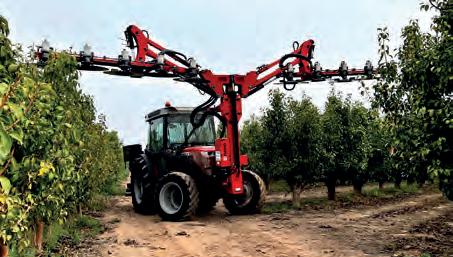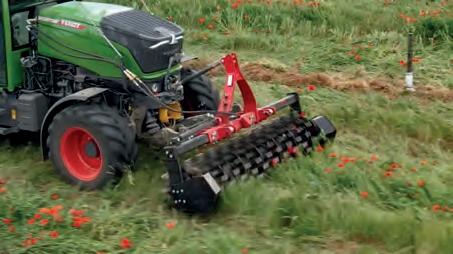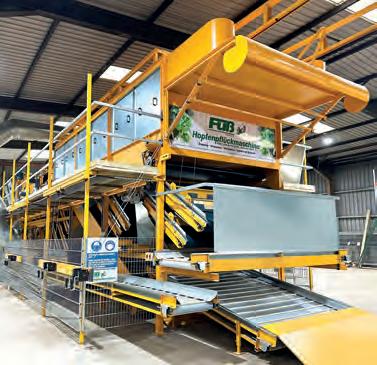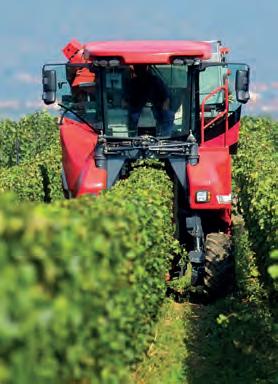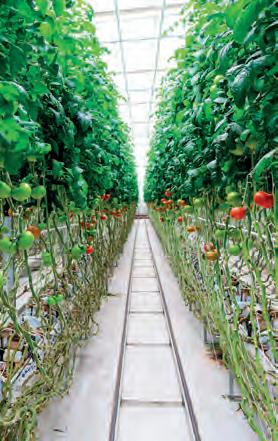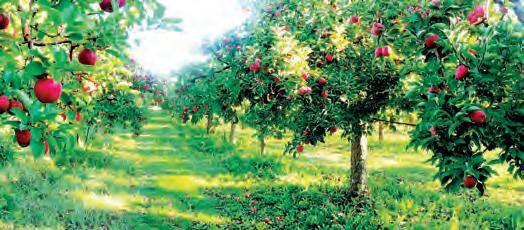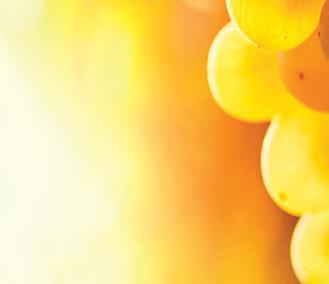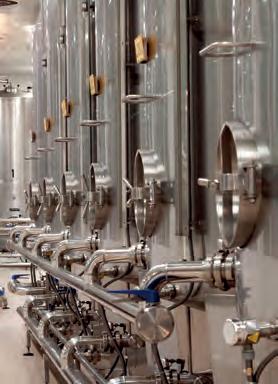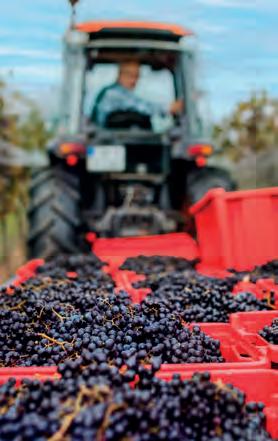


































































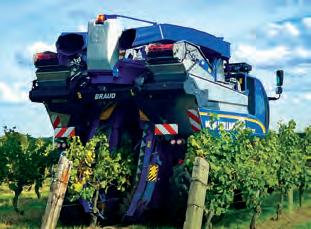

































































































































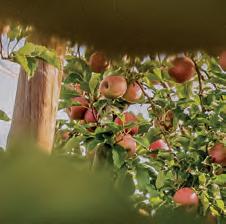
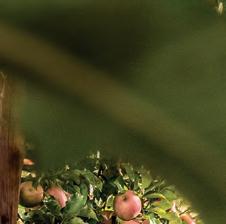
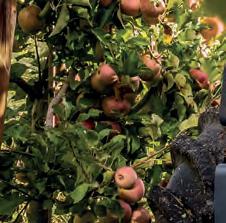
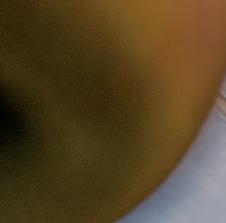
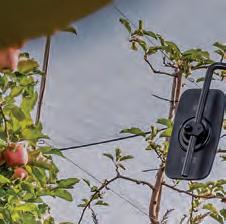
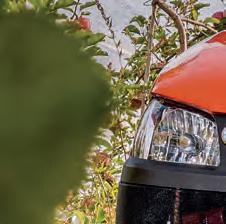
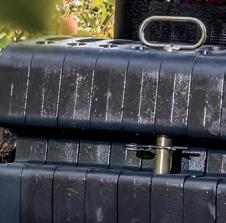
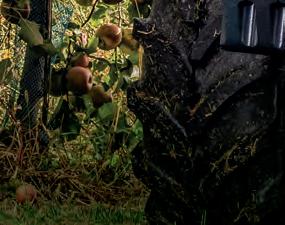


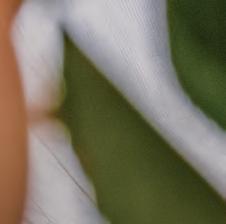
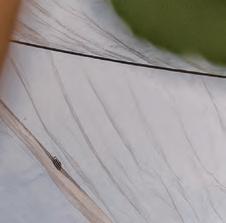
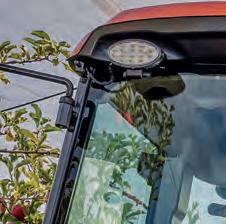


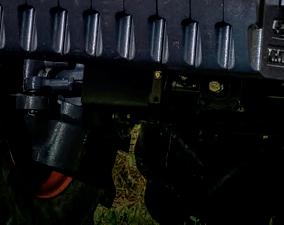
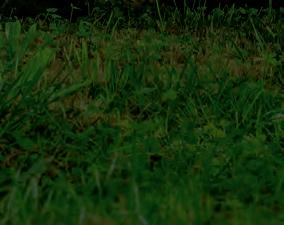

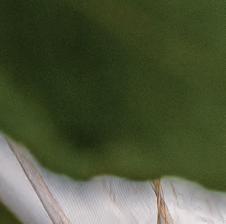
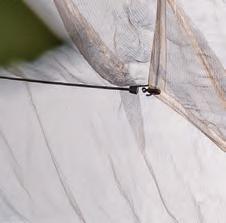
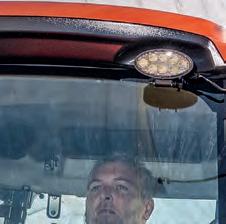
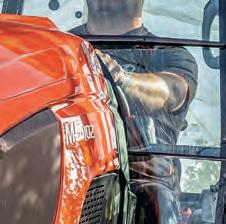
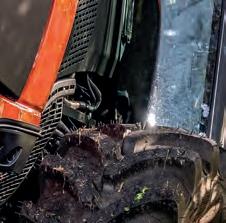
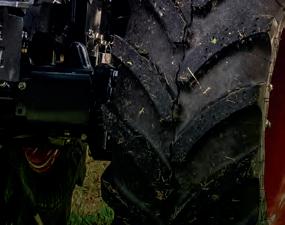

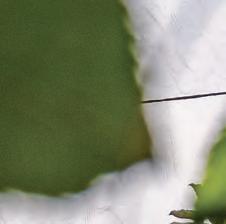


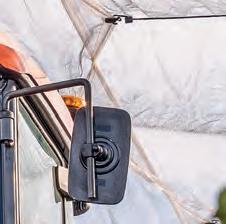
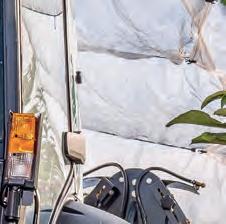
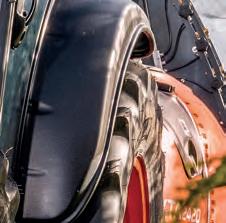

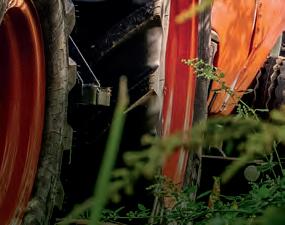
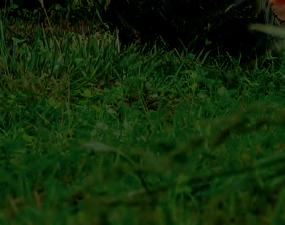





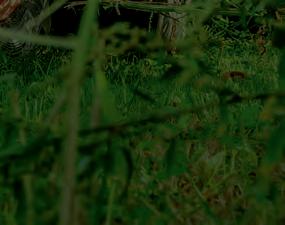


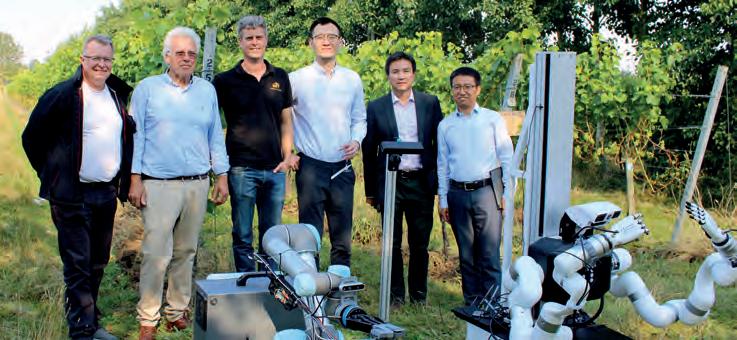


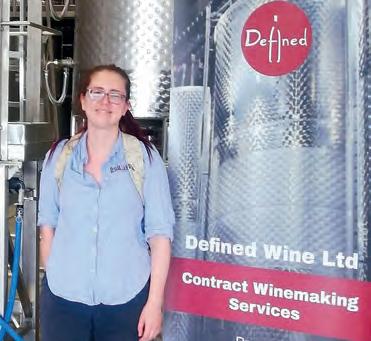


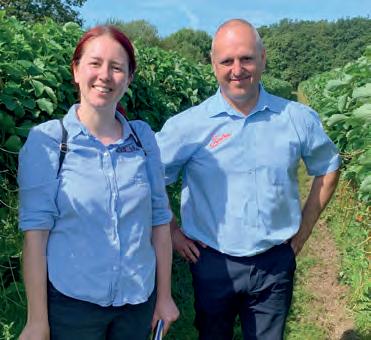
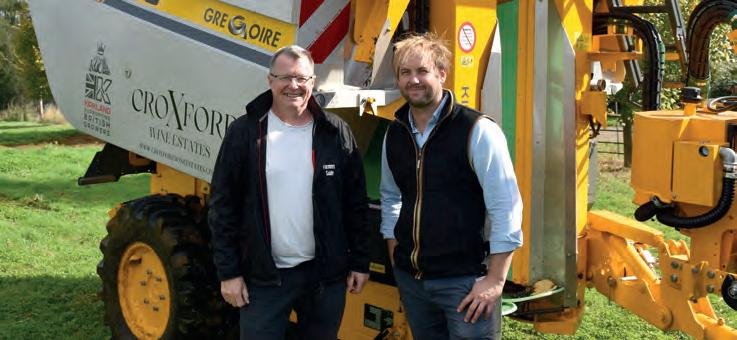


Printed by Walstead Roche
News
Record rainfall impacts 2024 apple harvest 6 10 13 15 21 25 30 33 38 41 42 46 45 37
The latest products, advice and research you need to know about
Special report
Future potential for vertical farming of strawberries
Show preview
The National Fruit Show returns for 2024
Machinery
Grape harvester purchase brings automation to Northants vineyard
Machinery
Autonomy and AI: The next big thing in viticulture?
Grower pro le
Iconic jam business blends a rich history with modern techniques
Agronomy
Preparing soft fruit for the winter
Agronomy
Top fruit nutrition: Getting the balance right in turbulent years
Special report
Professional advice
Post-harvest pest and disease management
Agronomy
Pruning for frost protection in vineyards
Technical advice
Sparkling installation for Gusbourne Estate
Special report
New contract winery opens in East Anglia
Grower pro le
Rolling hills, roaming deer and award-winning wines
58 In the know
Estelle Gayout of innocent Drinks discussed the regen ag journey
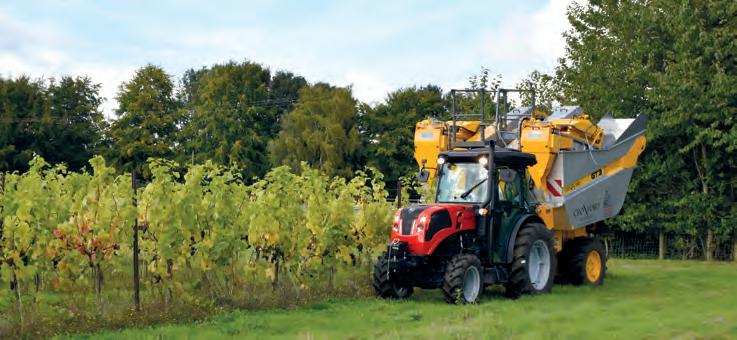
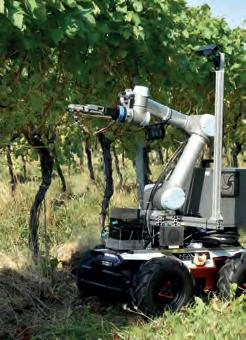

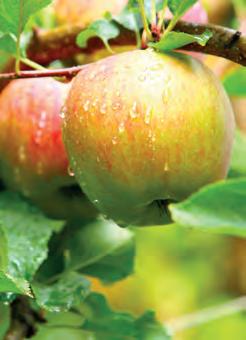


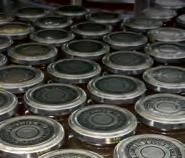


www.fruitandvine.co.uk
Directors


Editorial



Managing director
Julie Goulding julie@fruitandvine.co.uk
Director
Greg Goulding greg@fruitandvine.co.uk
Editor
Rachel Hicks
rachel@fruitandvine.co.uk
Deputy editor
Sarah Kidby hello@fruitandvine.co.uk
Machinery editor Neale Byart
hello@fruitandvine.co.uk

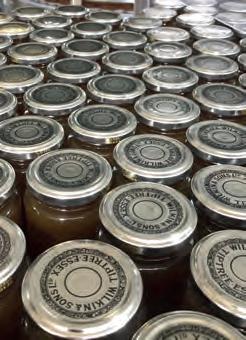

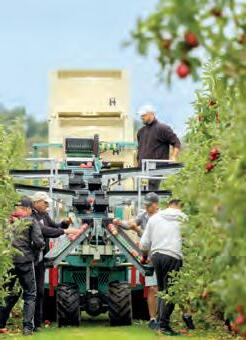
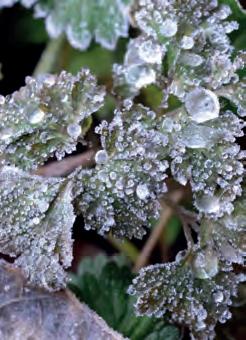

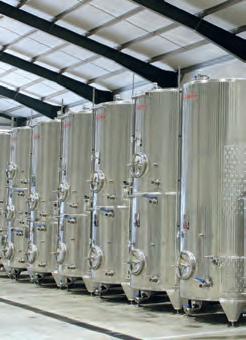

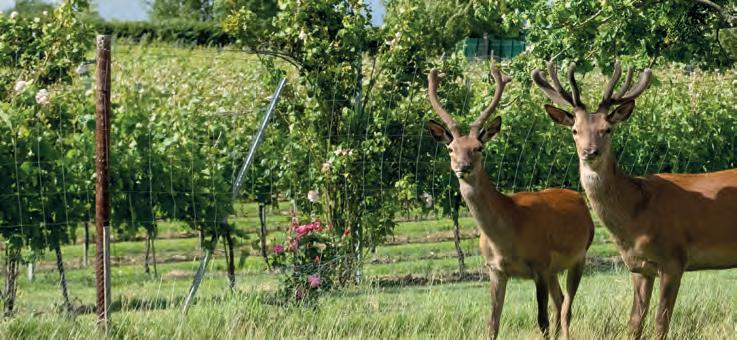

Machinery contributor
David Williams
hello@fruitandvine.co.uk

Multiplatform journalist Aleksandra Cupriak hello@fruitandvine.co.uk
Advertising








Sales director
Zohra Mitchell zohra@fruitandvine.co.uk
Fruit & Vine specialist
Samantha Wilson sam@fruitandvine.co.uk
Senior sales executive
Joanna Blower
hello@fruitandvine.co.uk
Senior sales executive
Jana Moyes
hello@fruitandvine.co.uk
Sales executive
Alex Coe
hello@fruitandvine.co.uk
Sales executive
Rosanna Sweet
hello@fruitandvine.co.uk
Sales executive
William Taylor
hello@fruitandvine.co.uk
Classi ed sales manager
Nicki Procter
hello@fruitandvine.co.uk
Marketing



Marketing manager
KM Sharp
hello@fruitandvine.co.uk
Digital marketing executive
Patrick Over hello@fruitandvine.co.uk
Publishing assistant
Kat Morton hello@fruitandvine.co.uk
Design & Production

Production manager
Martyn Smith
hello@fruitandvine.co.uk

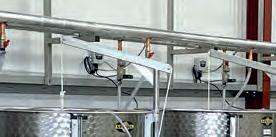
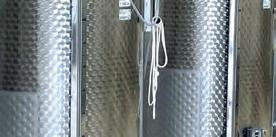
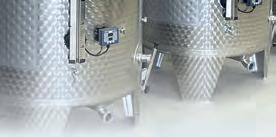
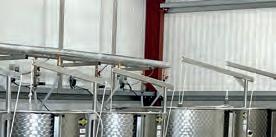
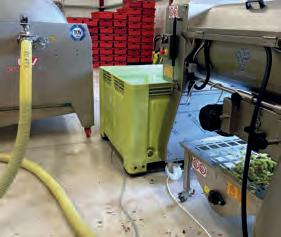


The visa allocation has been con rmed for the seasonal worker visa route in 2025, but there are calls for long-term certainty.
White Castle Vineyard announced the successful start of its 2024 harvest on 10th October, plus a new winery marking a new chapter in the vineyard’s journey.
For the rst time, Monmouthshirebased White Castle Vineyard has harvested and processed its grapes onsite in its newly established winery using state-of-the-art equipment, paving the way for a future of increased production and enhanced wine quality. This exciting milestone represents the culmination of years of planning and investment in cutting-edge winemaking technology, aimed at improving both the quality and quantity of White Castle’s awardwinning wines.
“We’ve been dreaming of this moment for years, and now it’s nally here,” said Robb Merchant, co-owner of White Castle Vineyard.
“Having the ability to process our grapes where they’re grown, with some of the best equipment in the industry, gives us complete
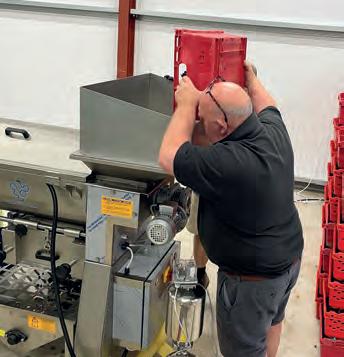
control over every aspect of the winemaking process. This is a huge leap forward for us, and one that will allow us to o er our customers even more premium, hand-crafted Welsh wines.”
The debut harvest brought together an enthusiastic team of 45 volunteers, including friends, family, and loyal customers who participated through the vineyard’s Adopt-a-Vine program. Together, they hand-harvested three grape varieties – Phoenix, Pinot Noir Précoce, and Rondo – all of which were processed the same day using the vineyard’s new destemmer and press.
Despite challenges caused by the weather, including the threat of frost and a lower-thanaverage yield, White Castle Vineyard remains optimistic.
“We’re incredibly proud of what we’ve accomplished,” said Nicola Merchant, co-owner of the vineyard. “The launch of our winery opens up so many new possibilities for us. Over the coming years, we plan to expand our production and continue creating wines that re ect the passion and dedication we pour into every bottle.”
Currently, White Castle Vineyard has 13,500 vines planted, including the more recent addition of Chardonnay, which promises exciting growth opportunities in the near future.
A total of 43,000 seasonal worker visas will be available for horticulture next year, the government has announced.
Defra said the move will provide certainty and help secure the labour and skills needed to bring high quality British produce, including strawberries, rhubarb and da odils to market.
Food security minister Daniel Zeichner said: “This government recognises that food security is national security, and this can only be achieved by supporting food and farming businesses.
“Con rming the seasonal worker visa allocation for 2025 gives growers and producers certainty, allowing them to plan ahead and secure the labour they need to grow and thrive.”
Whilst the announcement is welcome news, the NFU said it is essential that growers are given the certainty of a long-term scheme.
NFU president Tom Bradshaw said: “For the many horticulture and poultry businesses that produce climate-friendly food and plants for the country, this news will be a relief as they will be able to plan for the year ahead.
“But farming and growing businesses don’t just work on year-to-year production cycles, they plan their business operations years ahead.”
Recent press reports have shown that farmer con dence is at an alltime low and worker availability has been a signi cant barrier to growth.
The Migration Advisory Committee (MAC) recently recommended the importance of the Seasonal Workers Scheme to domestic food security – and the need for a long-term scheme.
Mr Bradshaw urged the government to publish its response to the MAC report as soon as possible.
“We don’t want to see a return to empty supermarket shelves or further years where £22M of crops are left to rot in the elds. [...]
“We have an ambitious industry that wants to drive productivity to support the health and wellbeing of our nation, but action is needed to make this a reality.
“Moving forward we need to see assurances of a long-term SWS and the government’s response to the MAC report,” Mr Bradshaw concluded.
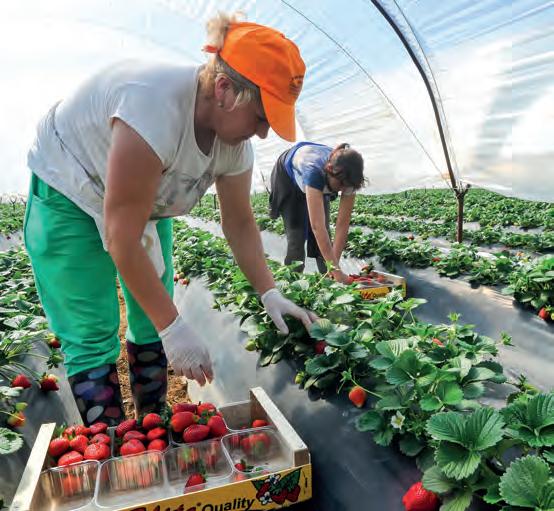

See you at the National Fruit Show on 6 November and at the Vineyard and Winery Show on 20 November. SPECIALISTS IN NEW AND USED FENDT 200 V/F/P TRACTORS AND ESSENTIAL MACHINERY FOR FRUIT AND VINE GROWERS. PLUS SPARE PARTS, SERVICE, REPAIR AND AFTER SALES CARE.
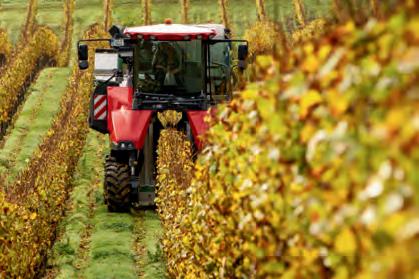
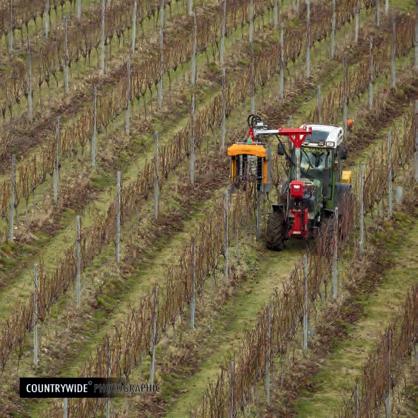
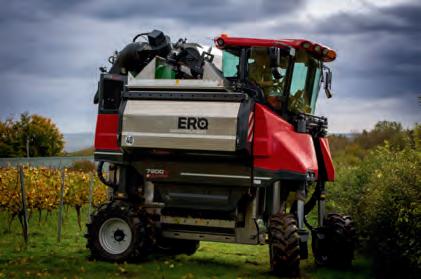
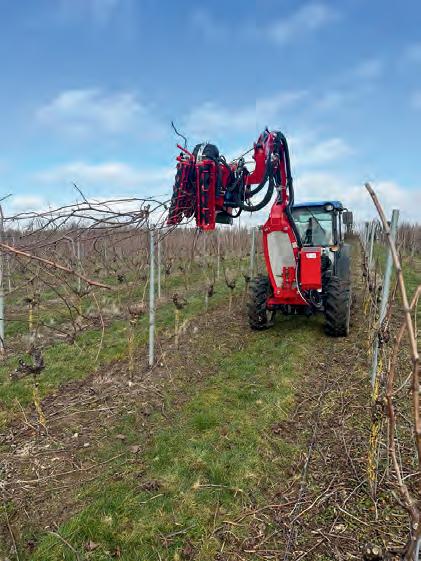
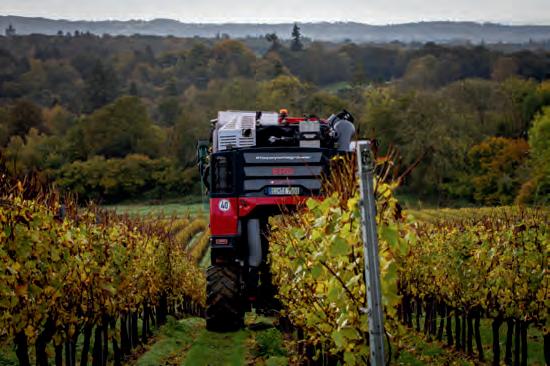
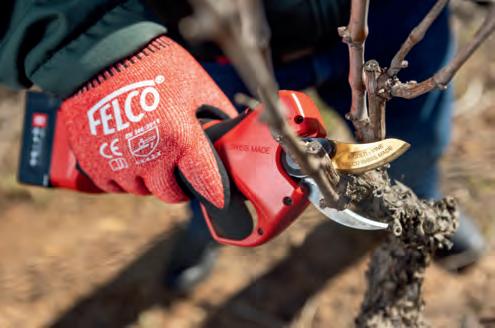
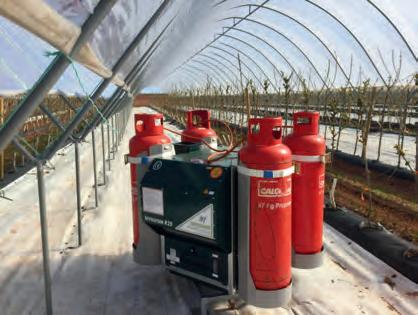
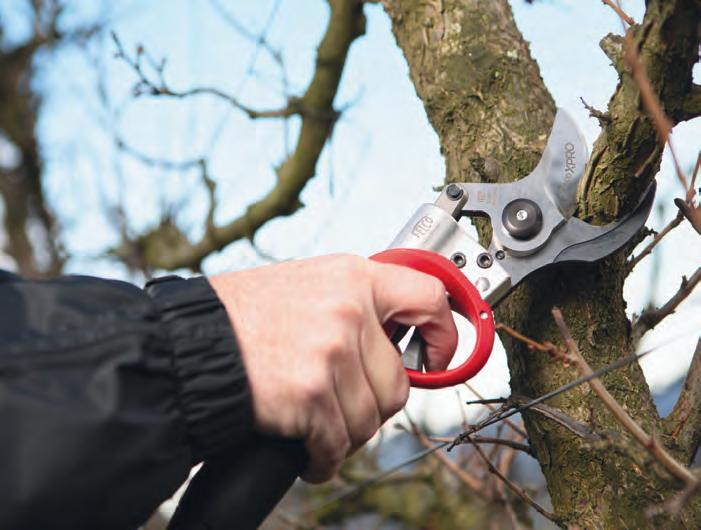
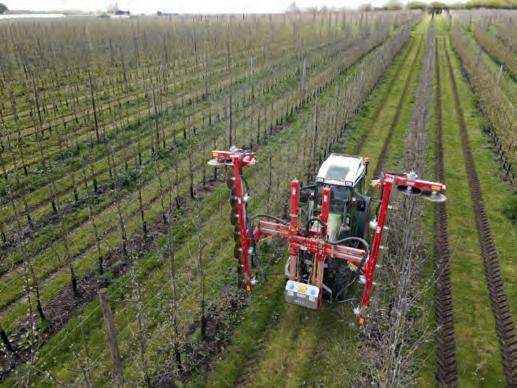
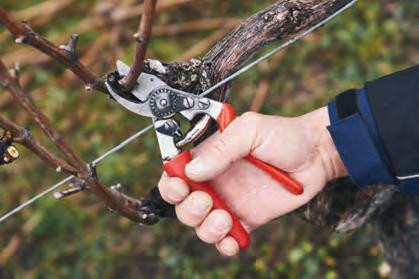
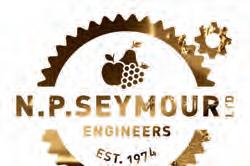



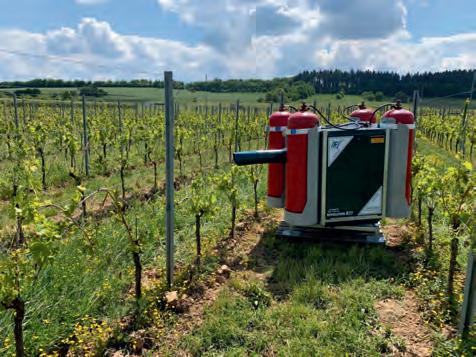

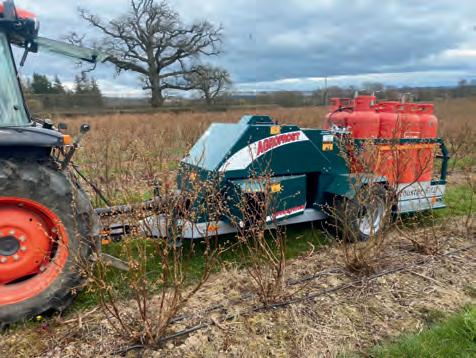














CELEBRATING 50YEARS
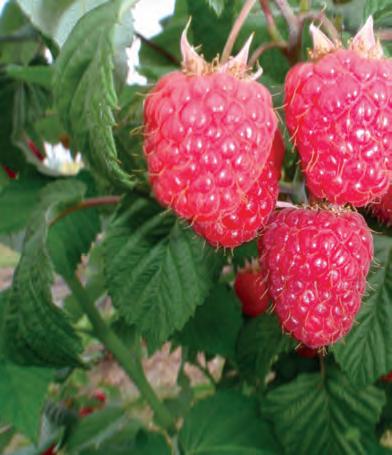
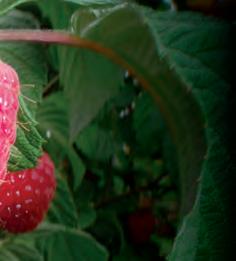
The Hutton Institute is renowned for breeding a range of raspberry varieties, including Glen Ample
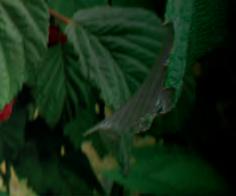

A ve-year project to tackle the economic issues plaguing the UK’s raspberry growers carried out at The James Hutton Institute has received a £1 million boost.
The Raspberry Economics in Production project has been awarded £1 million in funding from UK Research and
Innovation’s (UKRI) Innovate UK programme to focus on improving the sustainability of raspberry
production in the UK.
The project will focus on developing raspberry varieties that require less water, fertiliser and labour to grow. It responds to recent industry challenges such as rising production and labour costs, and the reduction of available pest and disease control measures.
In the last two years alone, growers’ costs have risen by 25%, while retailer returns indicate a 0% increase. Despite consumers consistently ranking UKgrown fruit quality ahead of imported fruit, purchasing patterns themselves mainly re ect price, with imported fruit costing less and selling more.
Dr Julie Graham, who leads the project at The James Hutton Institute, said that the UK raspberry industry is at a “critical crossroads”.
She added: “While growers face rising costs, competition is increasing from cheaper imports. Add the pressure brought about by climate change, and it paints a bleak picture.
“We’ll utilise cuttingedge genetic technology
Dr Julie Graham, soft fruit geneticist at the James Hutton Institute
to develop varieties more resistant to climate change, which require fewer resources to grow. The project aims to safeguard the future of the industry while also supporting rural economies and the environment.”
Using advanced genetic techniques such as genomics, transcriptomics and phenomics, the project will identify and apply traits in raspberries that make them more cost-e ective to grow and more resilient to changing climates.
The project is supported by Thomas Thomson Blairgowrie Ltd, Berryplants Ltd, Dole UK Ltd, The Asplins Producer Organisation Ltd, Angus Soft Fruits Ltd, and the Institute’s commercial arm, James Hutton Limited (JHL).
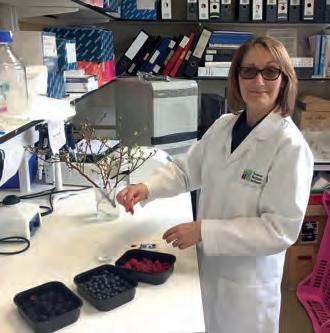
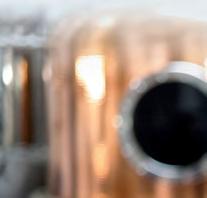





Suffolk-based brewery, Adnams, sadly announced the unexpected passing of its head distiller, John McCarthy.
John, who had been an integral part of the
for more than 20
suddenly on Saturday 12th October at the age of 55. Originally an electrical engineer
for the company, John grew more interested in the world of brewing and distilling and went on to study for, and succeed in, his brewing exams. By 2009, he was chosen to serve
as lead engineer to run the new distillery project.
He became known for his innovative approach and unwavering commitment to quality, and went on to develop over 30 di erent gin recipes in the lab ahead of the distillery’s o cial opening.
The Adnams team said that John was the one who so successfully conceived the recipe for the brewery’s best-selling Copper House Dry Gin, which was released in 2010 and has gone on to achieve countless accolades.
John went on to develop an extensive and varied range of spirits for Adnams, winning many prestigious international awards along the way, including gold medals in the World Whiskies Awards and gold outstanding in the International Wine & Spirits Competition, the company con rmed.
He helped Adnams claim the further accolades of world’s best gin, world’s best vodka and world’s
best vodka producer, as well as England’s best rye whisky.
John achieved his Diploma in Distilling from the Institute of Brewing and Distilling and was a member of The Worshipful Company of Distillers, The Gin Guild and The English Whisky Guild.
Jenny Hanlon, Adnams CEO, said: “We are all so deeply saddened to learn of John’s death. He was a wonderful friend, mentor, colleague – and an incredibly talented and devoted professional too.
“John had time for everybody and anybody – no matter how busy he was. He was one of those special people who really left an impression.
“His expertise and dedication undoubtedly transformed Adnams into a leader in the craft distilling movement. John’s passion for his craft and his belief in the power of community were truly inspiring. He will be deeply missed by all of us.”
The Adnams family extends its heartfelt condolences to John’s family, friends, and all who had the pleasure of knowing him, the company said.
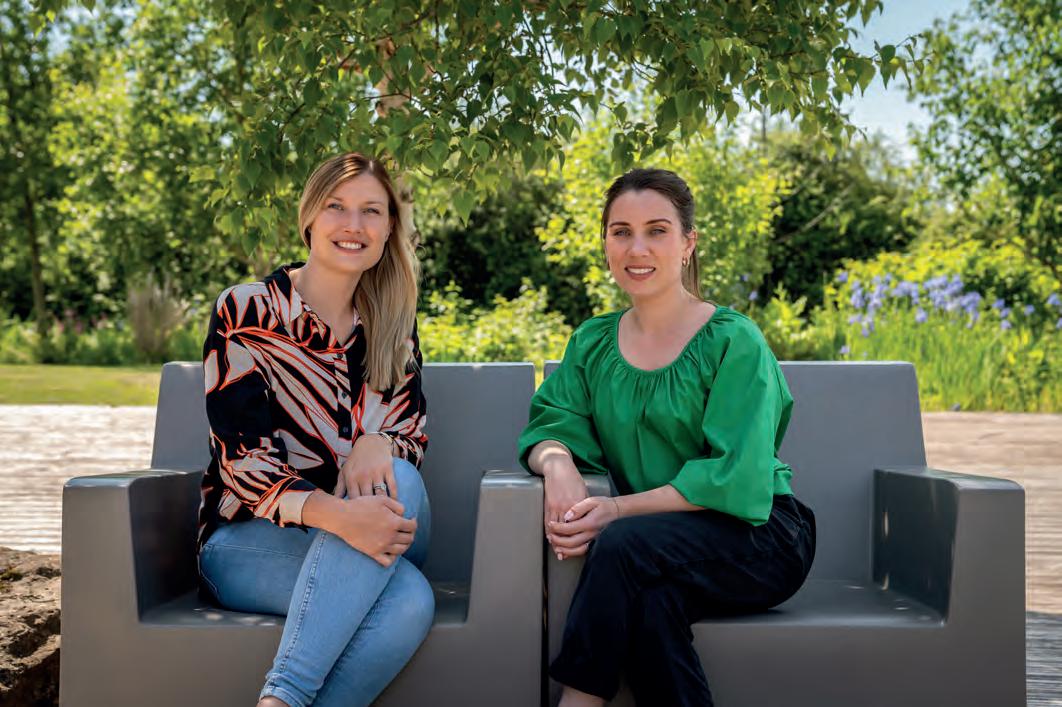
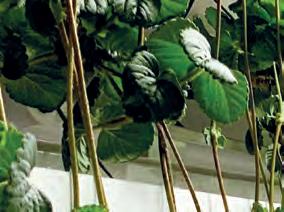
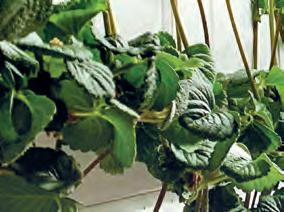
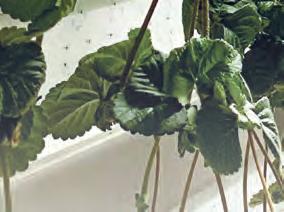
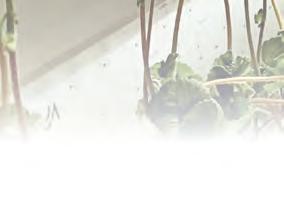
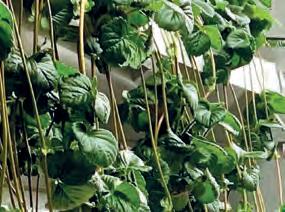
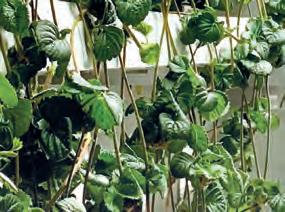
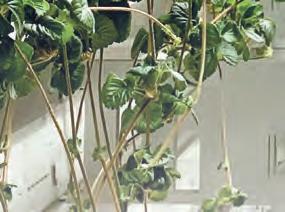
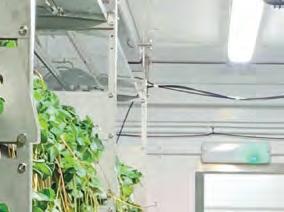
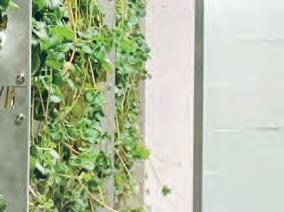

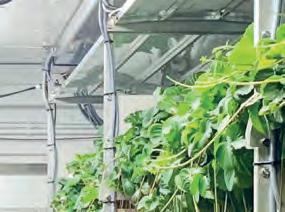
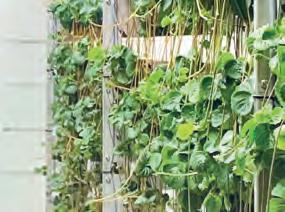
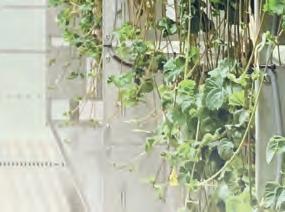
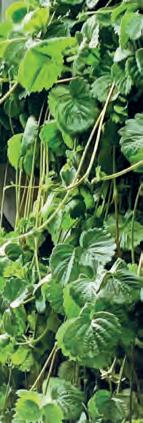
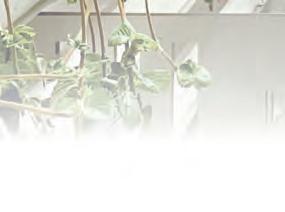





NIAB’s Katia Zacharaki and Dr Mark Else outline why vertical farming of strawberries has not always been a commercial success and explain how NIAB is using this technology to improve the yield potential and performance of strawberry plants propagated using this approach.
There has been a lot of buzz around the concept of “vertical farming,” especially when it involves a particular crop like strawberries. Vertical farming is often perceived as a challenging venture due to its high capital expenditure (CapEx) and operational expenditure (OpEx). Strawberries, being a highvalue crop that is relatively compact, appears to be an excellent candidate for vertical farming. Indeed, over the past decade, several attempts have been made to grow strawberries commercially in indoor vertical farming conditions for their highlyavoured fruits, although these have not always been successful. In fact, some of these attempts resulted in spectacular failures, garnering negative publicity for both the companies and the industry. The general perception might be that strawberries cannot be grown in an indoor environment, that it’s too expensive, that the technology is not quite there yet, or perhaps that the fundamental physiological responses of the crop are not yet understood well enough. While these speculations may hold some truth,
several companies and research institutions have successfully grown strawberries for fruit production in controlled environments for some time now.
One example is NIAB, where researchers have been conducting studies on soft fruits in controlled growth rooms for over 20 years. Other groups could also claim to have been working on strawberry cultivation in vertical farming, or Total Controlled Environment Agriculture (TCEA), the term that scientists prefer to call the practice of growing plants indoors using arti cial light as the sole source of photosynthetic radiation (light).
In addition to research institutions, some commercial companies working on the crop have produced groundbreaking ndings. However, due to the cost and nancial bene ts involved, these results are often not made public.
While some companies have managed to use these ndings for commercial gain, many start-ups have ended up failing, often quite dramatically.
These notable bankruptcies and dissolutions are not caused by any single reason but by a combination of factors. Frequently, the business plans underestimate the unpredictable ‘biological’ responses of plants. Entrepreneurs from elds like engineering or nance often make the mistake of using overly optimistic scenarios as their baseline, leading to nancial di culties even after securing signi cant investments. The issue was not their ability to attract funding, but perhaps that they failed to employ the expertise of horticulturists or plant scientists or to heed their advice. Oftentimes, it seems these plant and crop experts have not been consulted as completely as the technology providers, with the inevitable result that attempts to grow strawberries in TCEA conditions and systems suitable for the production of leafy salads and herbs have failed.
We do believe, however, that this is changing, and that the remaining companies, as well as new entrants in the eld, are now giving biological factors the attention they deserve in their
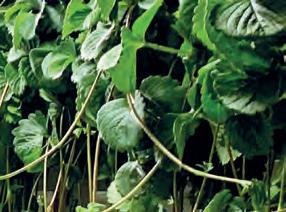
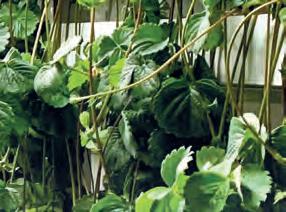
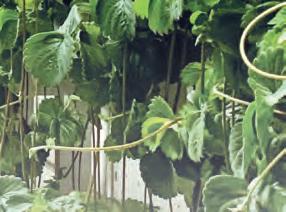


planning and decision-making processes.

Returning to successful TCEA strawberry ventures, two companies worth mentioning are Agricool (Paris) and Oishii (New York). Agricool was a pioneer, being the rst company globally to grow strawberries in containers and sell them in stores in Paris.
Unfortunately, Agricool faced nancial challenges and discontinued operations in 2022. Oishii, on the other hand, has focused on premium, high-end marketing, selling eight strawberries for $50. It recently raised $134 million in its Series B funding round. Oishii’s success stems from its understanding that growing strawberries in TCEA is signi cantly more expensive than conventional cultivation. The higher costs are mainly due to the higher light intensity and more stringent environmental controls compared to crops like leafy greens, leading to higher energy bills. This means that, currently, a TCEA strawberry company can only be pro table by moving away from the commodity market and positioning its product as a niche, premium o ering. This is how Oishii has achieved its success.
In addition to the fruiting stage, TCEA could also add value in the propagation of strawberry plants, especially given the current state of the supply chain and industry. The principle of vertical farming is based on using multiple and stacked growing layers in order to maximise each square meter of growing space. Propagation is a stage where plants are grown to a relatively short height at high planting densities, which aligns well with the vertical farming model.
In the case of strawberries, imagine propagating plants year-round in indoor vertical farms, producing high-health, pest- and disease-free tray
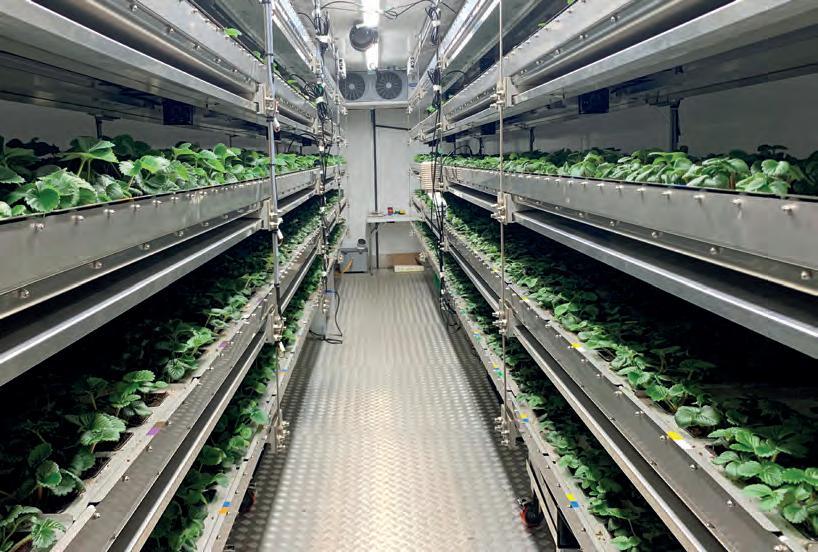
plants with a greater and more consistent cropping potential, all produced with fewer plant protection products and less waste. Do you think that there is a market for this product? We think there is. The end customer of these high-health, high quality propagules could be the existing soft fruit sector who grow in polytunnels and CEA, and perhaps the new generation of TCEA strawberry growers.
With this unique selling point in mind, NIAB is working on a £1.8m project to develop the infrastructure and methodology for propagating strawberry plants in indoor vertical farming or TCEA. NIAB is collaborating with a number of leading companies in the industry, from commercial soft fruit growers (Clock House Farm and Hugh Lowe Farms), propagators (Blaise Plants and Linton Growing) sensor providers (Delta-T) and substrate (Cocogreen) suppliers, as well as Reading University, while the project is led by Vertical Future.
This three-year project is using TCEA to produce high-health June-bearing and everbearing cultivars. The experiments begin with tissue-cultured plants, which are then raised to become the mother plants.
These mother plants are grown in Vertical Future’s prototype strawberry propagation facility at NIAB East Malling using LED lighting, with the aim of accelerating runner production and generating healthier daughter plants in a more consistent environment. The daughter plants have been planted in coir substrate and moved to a second compartment, where they are currently undergoing ower induction treatments before being exposed to chilling conditions.
The project will compare the marketable yield and fruit quality of these high-health plants with that from commercially-propagated plants from our partner propagators. These comparative trials will take place in three production environments: conventional polytunnels, glasshouses, and TCEA systems. After all, the main clients of our approach will likely be strawberry growers, whether they use polytunnels or glasshouses, until TCEA strawberry cultivation for fruiting becomes more prevalent.
Strawberries appear to be an ideal candidate for
NIAB’s aim has been to accelerate runner production
NIAB’s experiments began with tissue cultured plants
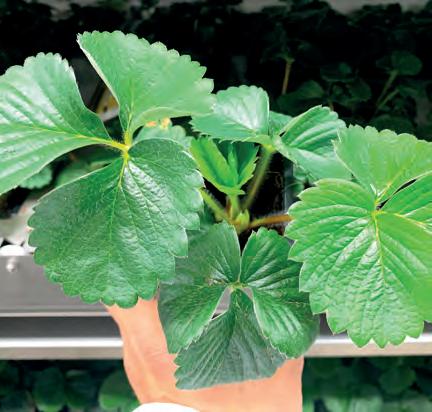
At NIAB, we believe that recent developments in vertical farming when coupled with expert plant sciences can bene t the wider horticultural sector by accelerating speci c parts of the cultivation process, such as propagation, while also enabling a better understanding of the fundamental responses of plants to their environment.
This, in turn, will enable us to ne-tune speci c attributes through judicious tweaking of the growing environment, and to ensure that all resources, including energy, are used most e ciently. This knowledge will allow us to collectively improve commercial cultivation practices in future. In many traditional production systems, marketable yield and quality improvements have reached a plateau, and only through new technologies and methods will we be able to achieve further progress. It is clear to us that TCEA is one of those key innovations.














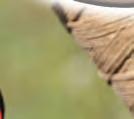

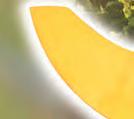
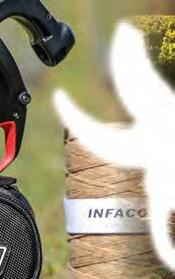
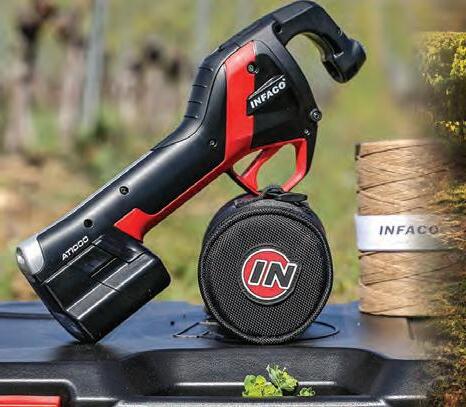

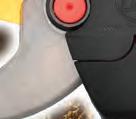



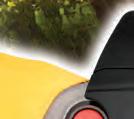















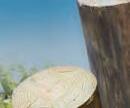




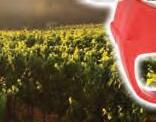

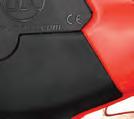

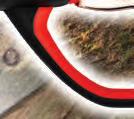
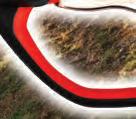

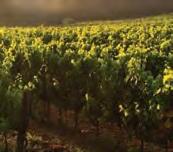
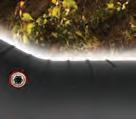
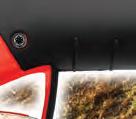
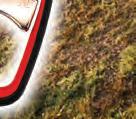



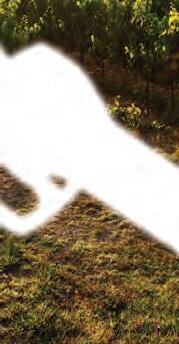
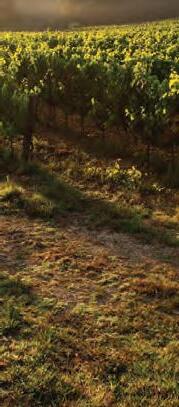
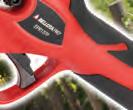
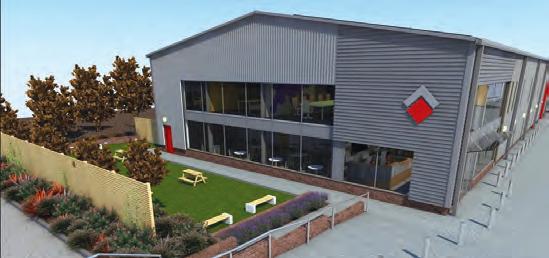



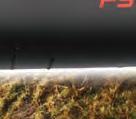


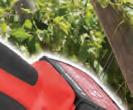













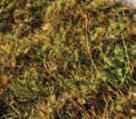
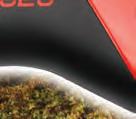





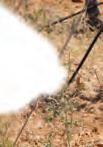
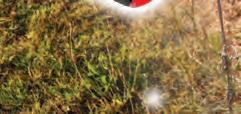
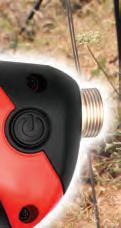





































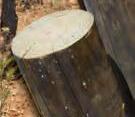






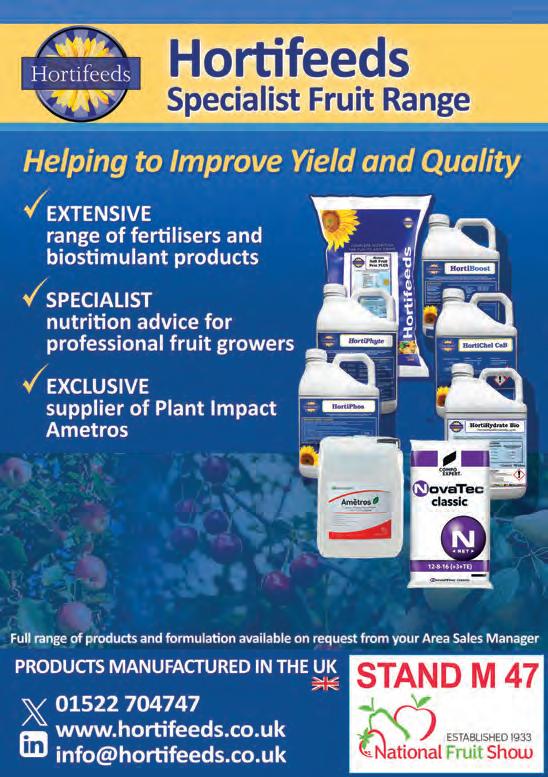
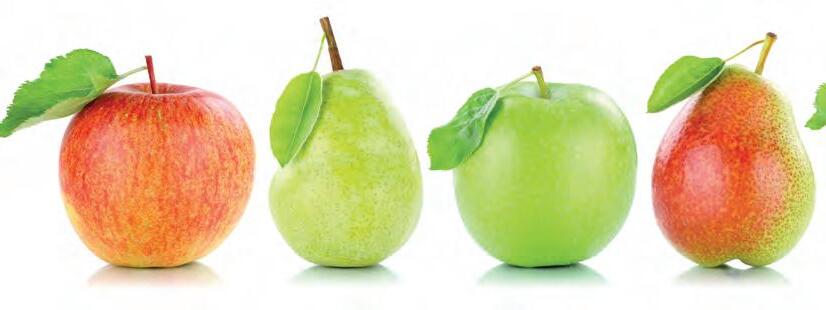
Taking place on 6th November, the National Fruit Show will follow a new one-day format this year.
Now in its 91st year, the show is a platform for British top and soft fruit, run by growers for growers. After feedback from 2023, this year’s show will be across one day only, located in the Maidstone Exhibition Hall.
The show’s chairman, Nigel Bardsley, commented: “With meticulous planning there will be space for all exhibitors creating a
dynamic, buzzing atmosphere, and a great place for customers to meet and socialise. [...] I look forward to witnessing the positive impact our changes have made to the ongoing success of the showcase of our industry’s innovation and excellence.”
Fruit & Vine spoke to a few of this year’s exhibitors to nd out what visitors can expect to see.
With over 25 years of industry experience, Agricare says it is the primary choice for planting products, pruning and tying equipment. Being the UK main distributor of the renowned Infaco and Bellota brands, the Agricare team know what is needed to keep you going, o ering expert support and service, to ensure that you always have the right options.
The company’s priority is ensuring you have the best and most capable tools for the job at hand, making your work e cient and cost-e ective. With a fully stocked shop to visit and e cient delivery service Agricare says it can supply equipment as quickly as possible to enable you to carry on working.
Visit stand M18 at the show, for Agricare’s



Hortifeeds says it is looking forward to welcoming visitors to stand M47 at the show.
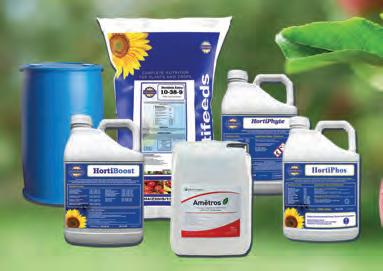
UK launch of the new Infaco AT1000 tying machine, where you can give this revolutionary machine a try for yourself with Agricare’s professional advisors.
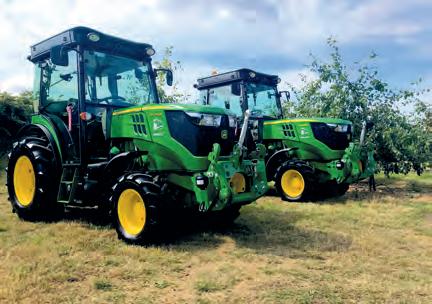
Tuckwells will be attending the National Fruit Show this year. The company’s fruit and vineyard sales and service teams operate primarily from the Stockbury, Kent depot, but all depots are equipped with trained sta to assist customers in selecting machinery and speci cations.
The specialist division o ers a range of products, including John Deere tractors, Kramer handlers, and machinery from Tehnos and Teyme, for which Tuckwells is the UK importer.
John Deere introduced its updated narrow tractor models last autumn. The 5G series ranges from 73–111hp and features widths starting at 1.25m. Customers can choose from V (vineyard), N (narrow), and F (fruit) variants, with cab options of 1.0m and 1.2m wide. These models boast large windows for better visibility, and Cat 4 ltration is available for spraying.
The 5G series also incorporates John Deere’s precision farming technology, with JD Link providing wireless connectivity and telemetry through the Operations Center app. This allows tasks like variable rate application maps to be sent directly to the user and tractor from the farm o ce or agronomist.

Agricare says it is also excited about the addition of the CFMOTO range of UTVs and ATVs to its portfolio, which are proving to be very popular and a useful machine in the fruit and vineyard industries. These will be on the company’s stand at the National Fruit Show.

company will be welcoming Rob Kempster, lead applications scientist at Plant Impact to the stand, who will be happy to discuss the bene ts of calcium mobility product Amētros, available through Hortifeeds. Amētros has been shown to improve Class 1 yield and fruit rmness in a range of fruit crops, so head to the stand and chat with the team about how it can bene t your business.
Hortifeeds will also be highlighting the bene ts seen from regular applications of its complete biostimulant HortiBoost. When used in tank mixes with each round of programmed sprays, HortiBoost

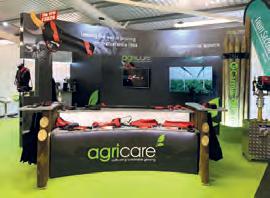
monitoring of location and operating status.”
Andy Page, Tuckwells fruit and vineyard specialist, said: “We have customers operating up to 30 John Deere narrow tractors, all of which can be tracked via smartphone for real-time monitoring of location and operating status.”
hours and contacts owners when maintenance is
Tuckwells' service team keeps track of working hours and contacts owners when maintenance is due, ensuring tractors remain in peak condition.
The company’s ability to keep machines running
The dealer’s customer base ranges from traditional family farms to multinational brands. The company’s ability to keep machines running smoothly, backed by over £1M in parts stock across its depots, is a major attraction. Parts include fastmoving items for John Deere 5G-series tractors, Kramer handlers, and Tehnos and Teyme products.
Tuckwells also employs a team of eight technology specialists who ensure customers maximise performance and e ciency from their machinery investments.
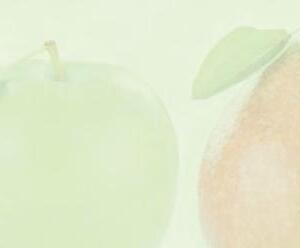
has been shown to improve yield, the fruit quality, and can strengthen plants to combat stress events such as extreme heat and drought. The little and often approach to HortiBoost application is cost e ective and ensures crops are protected from stress, whenever it may occur.
Hortifeeds will also be showcasing its extensive range of fertiliser and biostimulant products at the show, including foliar products to suit all fruit crops and growth stages, and an extensive range of bespoke soluble fertilisers for top and soft fruit.











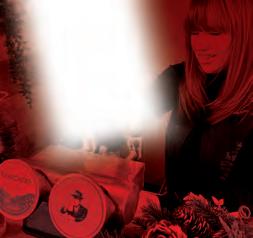


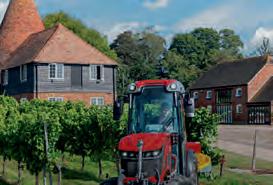
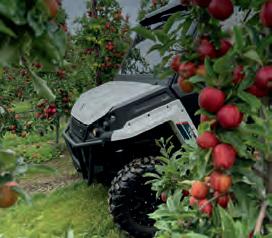

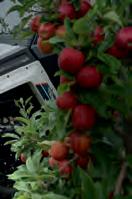


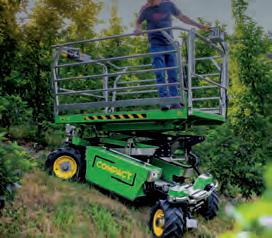
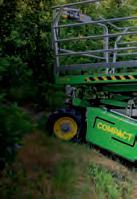









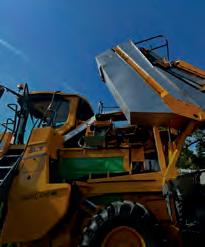








•
















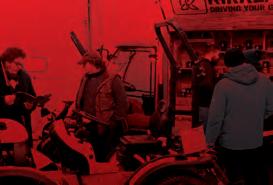

























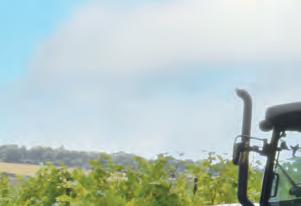
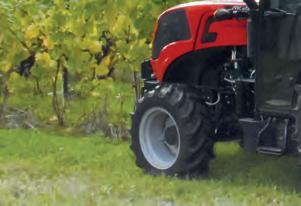

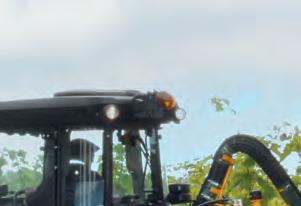
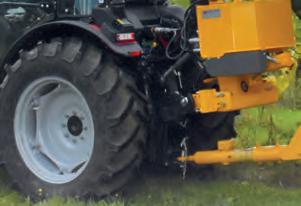

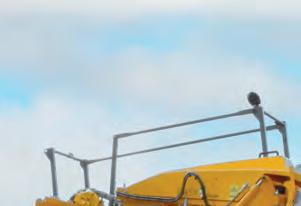
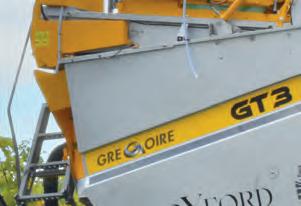
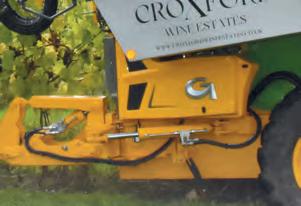

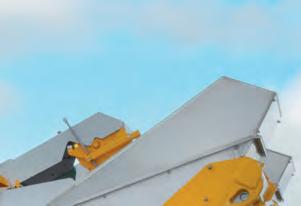
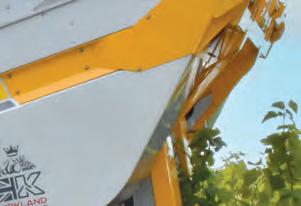
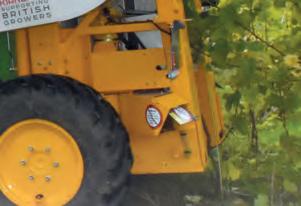

Northampton-based vineyard and contractor, Croxford Wine Estates has just taken delivery of its new Gregoire GT3 trailed grape harvester. Fruit & Vine joined owner William Croxford during his rst harvest with the machine. Neale Byart reports.
Croxford Wine Estates has been running for two years with owner William, who is also director of Nene Valley Winery, following on in his father’s footsteps. Nene Valley Winery is a contract-only business set up alongside Croxford Wine Estates Limited. Croxford Wine Estates operates its own vineyard just up the road from the location of the winery.
The 10ha site had been under vine for around three years and was just coming into commercial productivity when the owner decided to go in a di erent direction.
The vineyard is set on sandy loam over ironstone and is growing Pinot Noir, Chardonnay, Solaris, Pinot Noir Précoce and Bacchus.
This vineyard forms the basis of Croxford Wine Estates while the winery, which William runs in conjunction with his business partner Dennis Hall of Patch Lodge Estate, is sited on land owned by William’s in-laws and covers just under 500m2.
The contracting side of the business which is owned and operated by William o ers a range of vineyard management services available to other vineyards. At the same time, Nene Valley
Winery, with its state-of-the-art equipment, is large enough to not only process the grapes from William’s own vineyard, but also to support other vineyards who don’t have their own facilities.
The winery has initial capacity for production of 250,000 bottles annually, with future increases planned.
A new vineyard and winery
“This is the second year of wine production from our own vineyard. The rst year we had to use
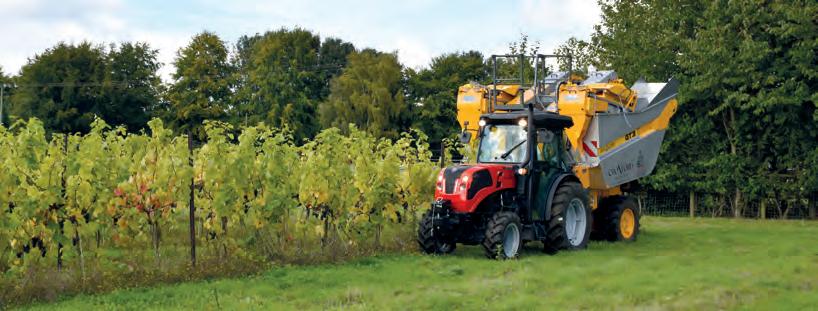
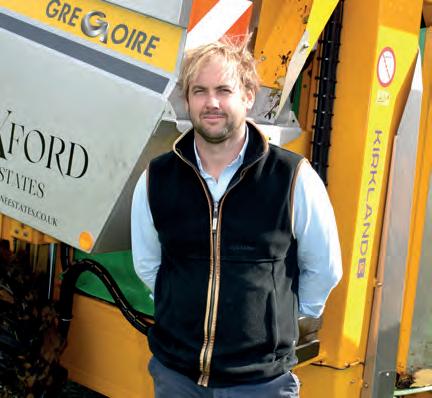
William Croxford, owner of Croxford Wine Estates and director of Nene Valley Winery
William says the harvester removes the destemmer from the operation to deliver a better quality fruit, more akin to a handpicked result
another winery as we didn’t have the facilities set up, but this year we have everything in place to not just process our own grapes, and that of my business partner who also has his own vineyard, but also to work with other small growers who don’t have their own winery facility.
“The winery currently has a processing capacity of 103,000 litres, with plans to increase this to 200,000 litres for next year, together with a planned purpose-built barn to deal with all the handling and storage.”
Inside the winery, William has installed 36 individually heated and cooled Letina fermentation tanks, and the incoming grapes are o oaded from a tipping trailer into a Zambelli elevator that delivers the grapes into a Bucher Origin press. He also has a Zambelli de-stemmer and crusher so that when it comes to contract wine production, they can take either machine-harvested or hand-picked grapes.
“Our tanks are all heated from a jacket on the base to deliver a more consistent and level heat to the contents, and when it comes to the fermentation process, we are very much customerled in terms of speed and processes.
“We like to involve the customer as much as possible, as the process of making wine is a very personal thing. On that basis we use a software system called Innovint, which allows us to manage the wine much better and allows the growers to access information about their grapes and wine throughout the process.
“From our own vineyards we are on track to produce around 50,000 bottles from this year’s harvest, with a target of around 70,000 next year.”
William admits the winery was a large investment, but says: “We wanted to do it in the best way with the highest quality equipment. Yes, we could have done it cheaper by buying used items, but we wanted to get it right rst time. We used Core Equipment to do the full install as a turn-key project.”
Current machinery and future plans
Contract services, including mechanical harvesting, are available to growers nationwide.
“Our machinery consists of a Friuli drift recovery sprayer, which has reduced our sprays this year by 60%, a Provitis de-leafer, a Provitis
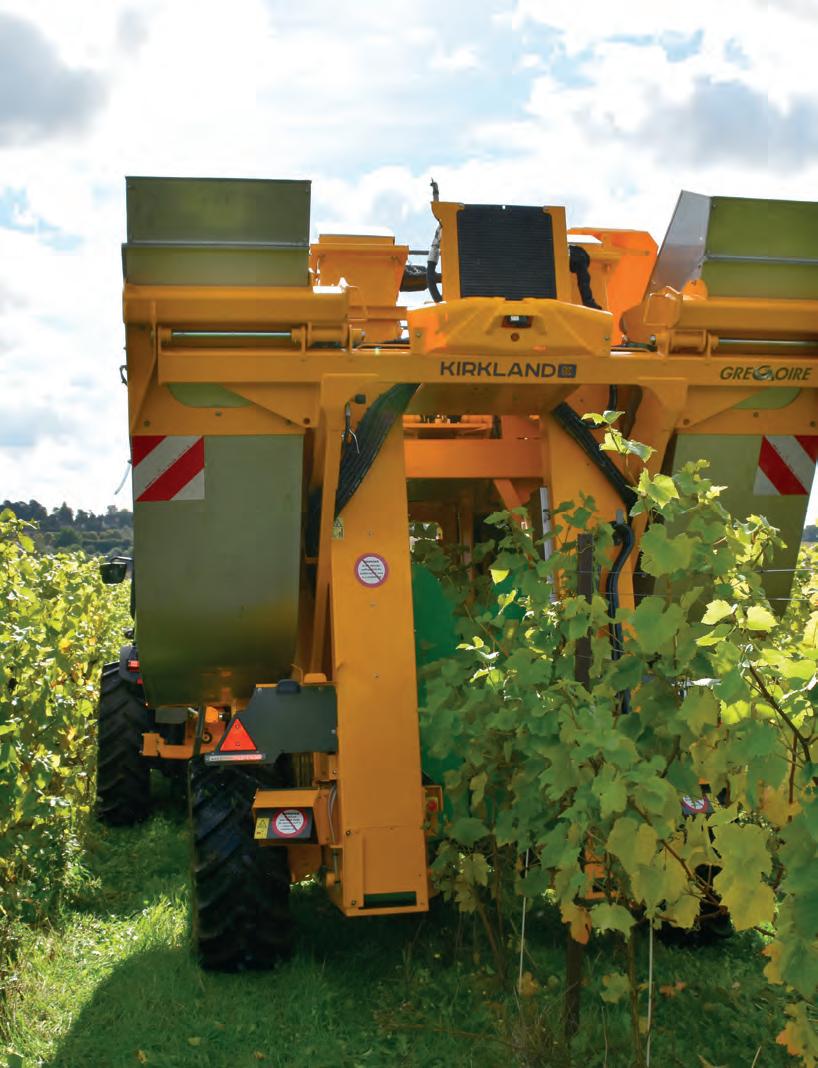
trimmer, an under-vine fertiliser spreader and an Orizzonti under vine strimmer. Plus, we are currently building an under-vine herbicide sprayer to be mounted on a Polaris Ranger with a 300-litre tank, which will also be useful for spraying fungicide in smaller vineyards, where our tractors might not t, when combining it with an air assist boom,” says William.
“We are really looking to be able to o er all the services that any vineyard, large or small, might need. We have our own haulage to help keep transport costs down by putting, say, a trimmer and de-leafer on the same transport to carry out both jobs on one vineyard, or work on two vineyards in the same area. If we can keep the transport costs down, we can o er a more a ordable service.”
Discussing his second ever harvest from the estate, William explained that it hasn’t all been smooth sailing. “We are behind with the harvest this year due to weather, with some early frost damage, and we have su ered quite badly with losses to birds, with an estimated 60% of yield potential –around eight tonnes of fruit, or the equivalent of 6,500 bottles – lost to the pigeons. We are going to have to net in future years, which is another big cost, as we have around 36km of vines.
“Luckily, we don’t have too many issues with
deer and badgers, so it’s just the birds we must stop. We are looking to expand the vineyard using land adjacent to the winery, and also on some of the south facing elds opposite; but we need to keep an eye on the market, which is certainly growing for UK produced wine, including export, and we need to expand as the demand increases. Currently, we tend to focus on supplying our wines to local pubs and restaurants, although we have future plans to sell direct to customers via cellar door by building a new tasting room with views over Pitsford Water.”
Machine harvesting comes to Croxford
“Last year our entire harvest was hand-picked, but suitable seasonal labour seems to be getting harder to nd. Then there is the cost. Realistically we would need around 40 pickers working an eight-hour day for around 10 days to harvest our current crop. That equates to a sta bill of around £50,000. With costs like this, it is very di cult not to pass it on to the end consumer and, with so many people buying wine on price, we have to do whatever we can to keep our overheads, and therefore the price of our wine, down. This was really the driving force behind us looking for a harvesting machine.”
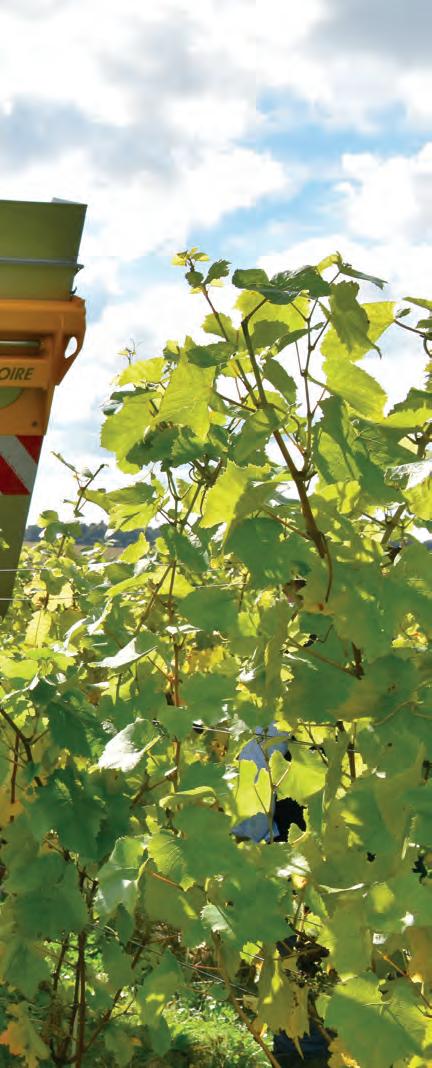
William already had a relationship with Kentbased specialist fruit and vineyard machinery dealer, Kirkland UK, having purchased other equipment from them previously. So, when it came time to look for a grape harvesting machine, he was more than happy to put the business their way after considering various options. “We looked at New Holland, Pellenc and Gregoire and, after travelling to France to trial one, I felt that the Gregoire was the best option for our specific needs.
“Each brand has its strengths and weaknesses, and pricewise they were all very similar, but for me I felt that the Gregoire handled the fruit more gently. It also removes the de-stemmer from the operation to deliver a better quality fruit, more akin to a handpicked result.
“It is a fairly simple machine to use, and I genuinely feel it is a game-changer for the UK vineyard industry. I was also impressed to see that Gregoire has machines still out working in vineyards that are 40 years old. I doubt we will be keeping it that long, but it’s good to know that the quality and longevity is there. Kirkland is a great company to deal with – they really understand the machine and offer lots of support and parts backup, so that any issues with the machine can be dealt with quickly.”
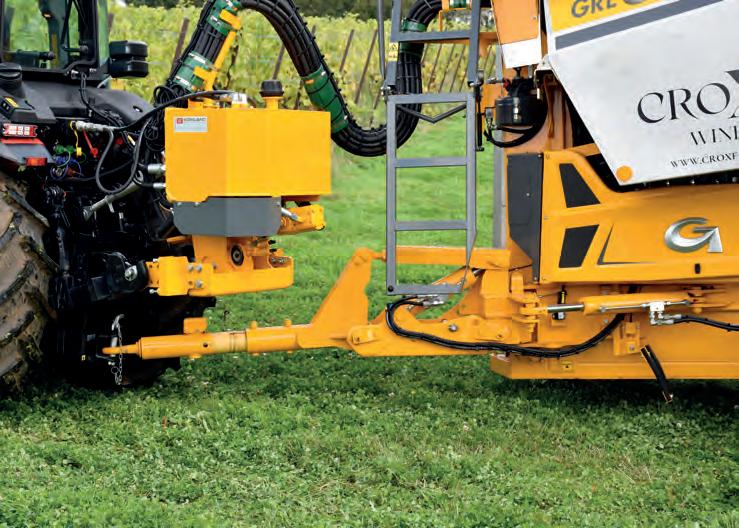
The machine William purchased was the GT3 trailed harvester, and Croxford’s is the first of these models to be delivered to the UK. Its features include auto height management and obstacle detection, auto tilt correction up to 700mm, auto row centring, vacuum system for harvest cleaning, and Isobus compatibility with an 8.4in display and multi-function joystick.
An Easy Clean De-Stemmer can be activated and deactivated from the touch of a button, plus the harvester offers the ability to change the pressure on the catching system, making it adaptable for old and young vines.
It also comes with its own independent 70-litre hydraulic unit fitted on the three-point linkage and powered by a PTO. This allows the GT3 to be completely independent from the tractor’s hydraulics. The GT3, which can work on vineyards with a width of 1.5m upwards, is brand new to Croxford for this year’s harvest and, on the day of Fruit & Vine’s visit, was being used for the first time so still required some fine tuning to get it working just right on the Croxford Wine Estate vines.
William, who has been working on harvesters of all types since he was 16, seemed to have an instinct for how to get the best out of it, and after a couple of test runs, where it wasn’t quite working as expected, he put his head together with the Kirkland reps, who had accompanied the harvester on its delivery to assist in getting it up and running.
By adding an extra pair of bars to increase the working height of the fruit shaker unit, and changing the speed and vigour of the shaking motion, the harvester began to work exactly as required and it was doing an impressive job.
After a single pass the vines were stripped of all but the smallest unripe fruit. The produce was reasonably clean, with just a few stray leaves and vine stems finding their way into the hoppers; but a few more minor adjustments on the machine should improve this further. At the end of the work, the machine can be cleaned using an integrated washing line, whereby a single low-level hose connection provides cleaning water right up to the top platform. Grease points are all easily accessed, and an automatic greasing system is available as an option.
The steering drawbar makes lining the
up much easier
The GT3 features 14 adjustable shakers, enabling you to modulate the picking intensity
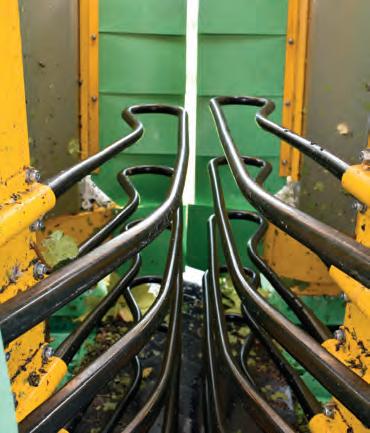
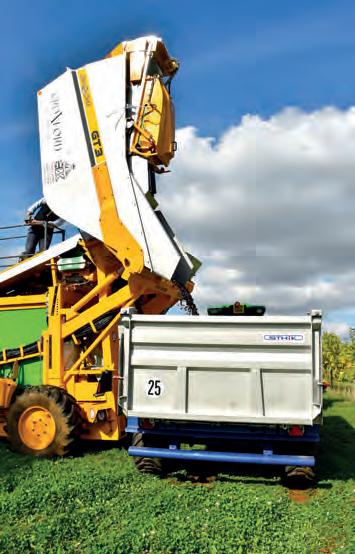
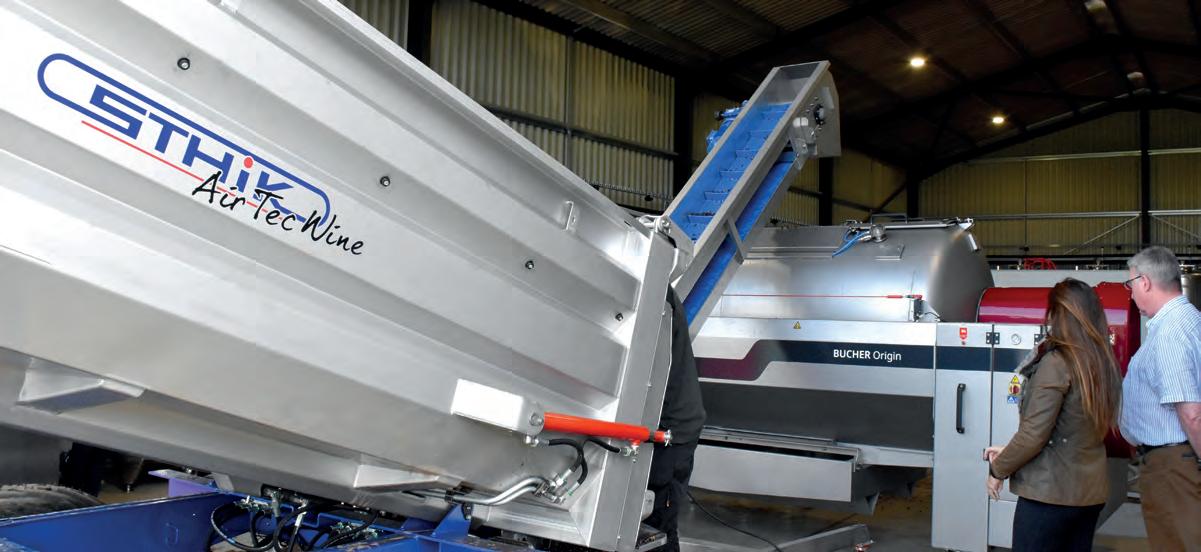
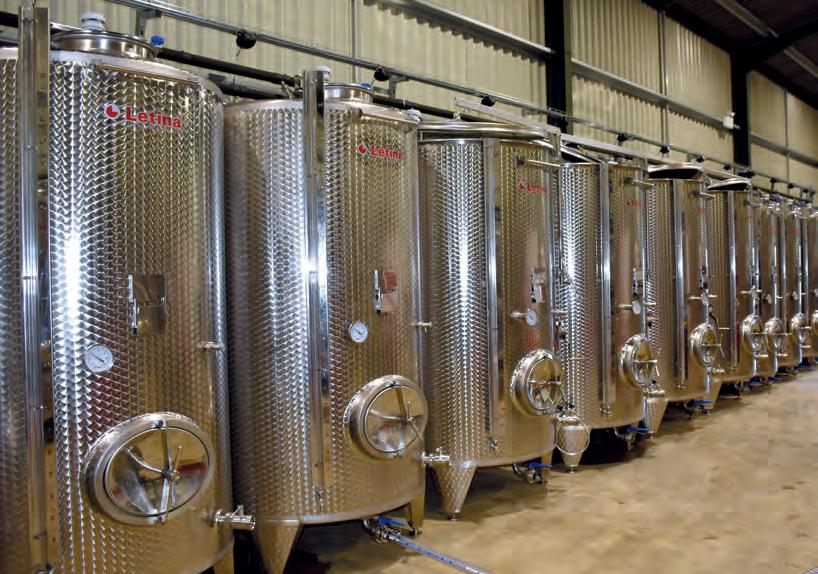
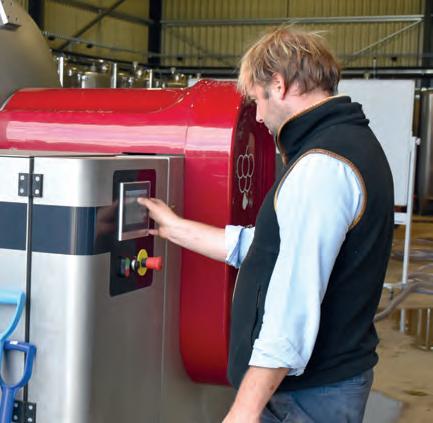
Croxford’s purpose-built winery is state of the art and available for contract winemaking
William admits the winery was a large investment, but says: “We wanted to do it in the best way with the highest quality equipment”
The GT3 can harvest at a rate of 1ha/hour, meaning in theory it could do the whole Croxford Estate harvest in one day. “This obviously gives us so much more exibility to work around weather windows and we can use it for our contracting business too, meaning payback could be in as little as two years. Not only can we reduce our own harvest down from 10 days to one, but instead of 40 sta I could actually do the whole harvest on my own, if needed.”
In the vineyard, the steering drawbar makes lining up the machine over the vine much simpler, and it also means that it is easier to manage and
Once set up properly, fruit removal was e cient
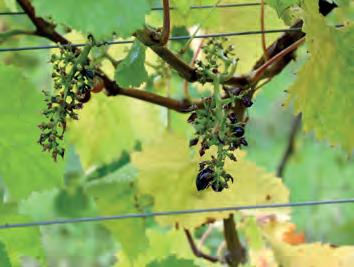
more manoeuvrable in the headlands, which makes it perfect for vineyards with little space.
The GT3 comes with two 2,000 litre fruit hoppers, although Gregoire also o ers a narrower, twin 1,600 litre option, and once the harvester is full it is simply a matter of positioning the trailer behind it and tipping the fruit bins, together or independently, using a remote control.
The machine comes with a tipping height of 3m, allowing even taller trailers to be used. William has opted for a slightly oversized specialist Sthik fruit trailer that comes with a liquid take-o point underneath. The process of emptying the harvester takes no more than ve minutes or so, and that includes moving the trailer for each receiver, if necessary.
As the harvester also acts as a de-stemmer, the trailer can then be tipped straight into the fruit elevator and onto the press. William is planning to add a fruit-receiving hopper so that he can o er a full service from eld-to-press to those vineyards with their own winery.
“We like to work closely with other producers within this industry, which is still quite small in the UK, and I feel that it is bene cial to help each other out, as you never know when you might need help in return. With the investment in our winery and machines, we can o er competitively priced, full-service contracting to those that need it.”

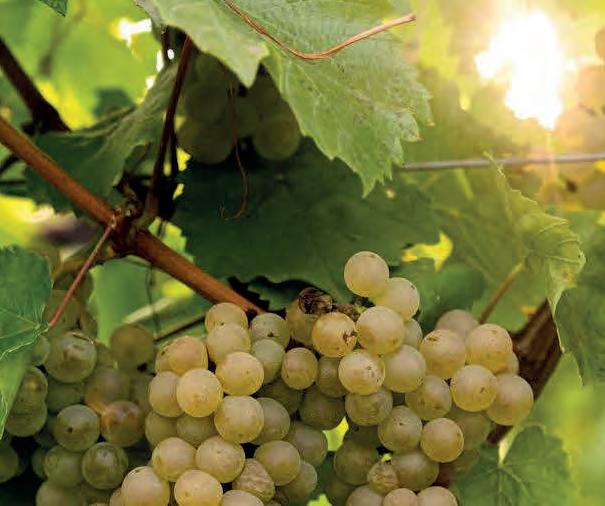
Two Companies. One Mission. Delivering a complete suite of services for all your vineyard needs.
Whether you’re starting your vineyard journey or looking to enhance your production, Croxford Wine Estates and Nene Valley Winery offer a seamless partnership to meet all your vineyard needs. Together, we provide a full suite of services that guarantee success from vine to wine.

Vineyard establishment
Vineyard management
Under-vine herbicide spraying / grass strimming
Machine harvesting Winemaking, bottling, disgorging
Storage and distribution
info@croxfordwineestates.co.uk
www.croxfordwineestates.co.uk
www.nenevalleywinery.co.uk info@nenevalleywinery.co.uk










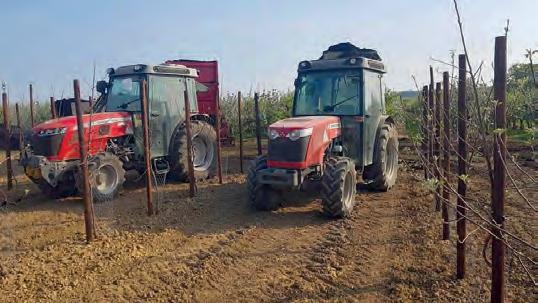
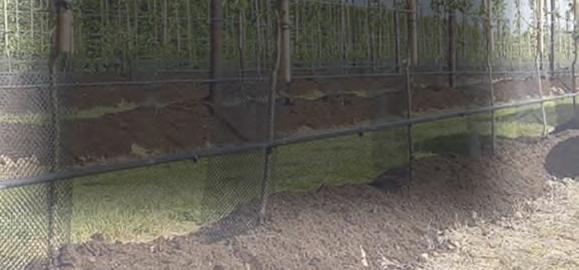


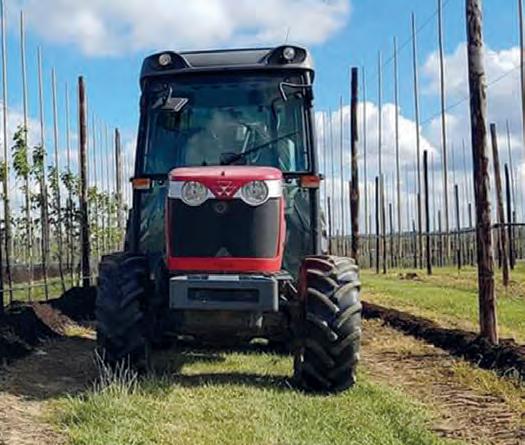




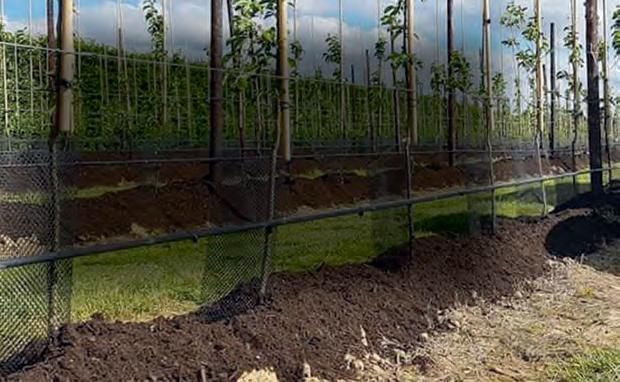


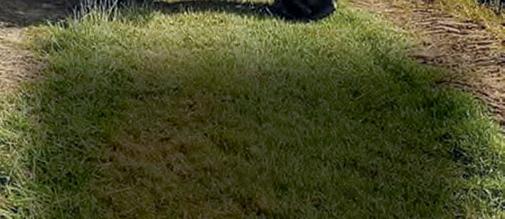
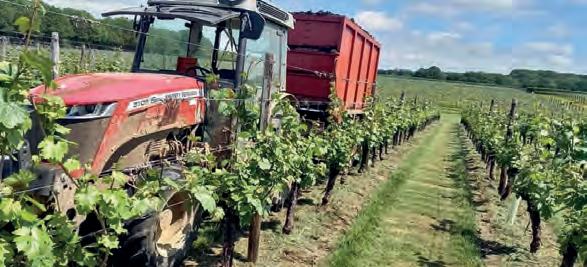
Fruit & Vine was invited to a vineyard in North Essex to hear from a collaboration who are working together to bring robotics and arti cial intelligence to vineyards. Neale Byart reports.
Automation and autonomy are slowly working their way into viticulture, and the next level could just be robotics powered by arti cial intelligence, according to the combined bright minds of Extend Robotics and the Queen Mary University of London. These two establishments have teamed up with Sa ron Grange Vineyard in north Essex and are working on a three-year plan to bring robots with AI to the vines of Sa ron Walden and beyond. The project is funded by Defra’s Farming Futures Automation and Robotics Competition, and Innovate UK.
The vineyard
Sa ron Grange Vineyard produces premium quality English sparkling wines in Sa ron Walden, Essex. They take great pride in marrying traditional viticulture techniques with the very latest technological advances to signi cantly impact growth and productivity.
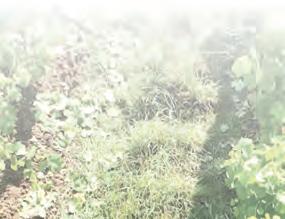
Owner Paul Edwards began planting it in 2008, with the most recent vines going into the ground this summer and more planned for next year. Of the
16 hectares available, 9ha are currently under vine.
The chalk seam upon which Sa ron Grange sits is the very same one that runs through the south of England and onto the renowned wine regions of northern France.
The logo for the vineyard features a woolly mammoth – a curious choice of mascot, you might think. In fact, the reason it appears on the company branding is that the remains of a woolly mammoth (tusk and teeth) have been found on land at the edge of the vineyard. “To us, the mammoth represents strength, opportunity, adaptability and durability. Their presence on our land for tens of thousands of years is a reminder of the will needed to survive during dramatic climate and geological change,” Paul told Fruit & Vine. Explaining why he decided to get involved in this research project, Paul continued: “We expect the vines to last at least 25 years in the ground, giving us plenty of cause to invest in making it an e cient process.
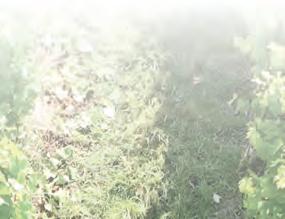
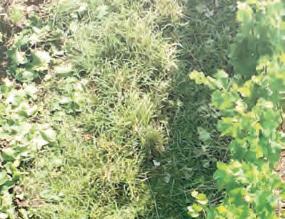
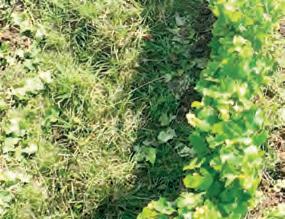
produced from the 2023 harvest and we have planted more vines to allow us to produce 50–60,000 bottles in the coming years.
“This growth is going to mean a signi cant increase in labour and the costs that are associated with that. We are on track to grow more vines, produce more wine and increase sales and we need to look at how we can drive the business forward, expand and take advantage of new technology to help that.
“As the number of bottles produced increases, the costs do too; which is why I am so happy to be a part of this project to bring robotics and AI into the industry and we are working hard to share every bit of intellectual property needed to make this successful, as well as understanding what changes we need to make in the vineyard to encompass this. In that regard we have put half a eld aside so that we can grow grapes in a slightly di erent way if needed. I’m really excited about the prospects of the next couple of years and working with the teams from Extend Robotics and Queen Mary University of London.”
Extend Robotics is a UK-based start-





“At Sa ron Grange we can now sustain the with
“At Sa ron Grange we can now sustain the growth year-on-year with around 30,000 bottles
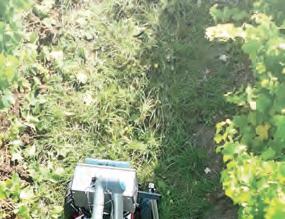
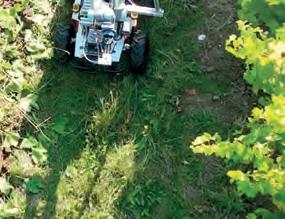


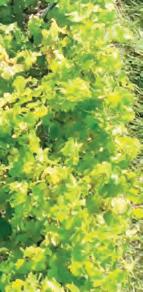
up specialising in virtual realitybased teleoperation systems for remote manipulation of robots.
The team’s expertise in precision giving us plenty of cause to invest in making it

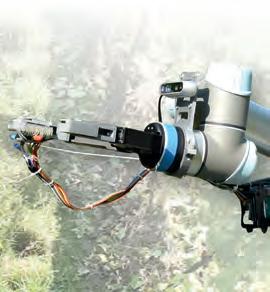
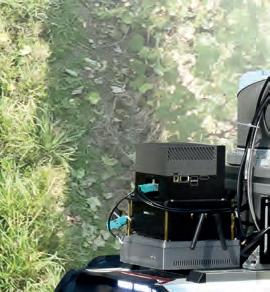

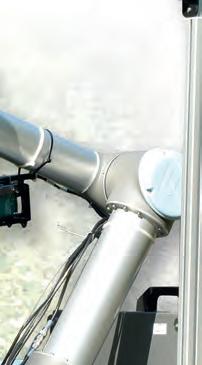


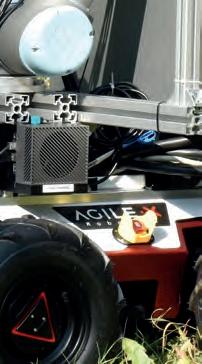
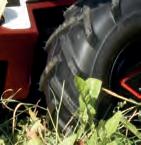

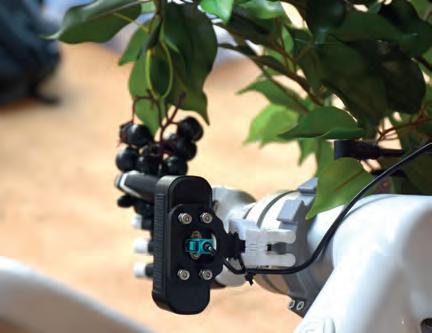
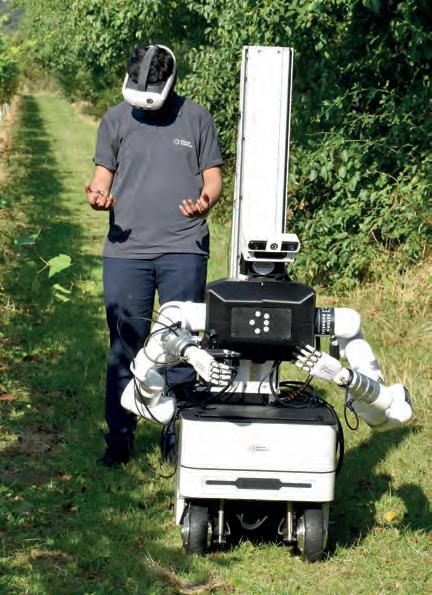
manipulation and perception systems are essential to developing modular robotic hardware systems with human equivalent manipulation robotic arms and cameras. Azmat Hossain from Extend Robotics told Fruit & Vine: “We are a robotics company, but also a software developer. We believe that robots are not just hardware or machines, they need to have intelligence and be trained, and this is what we are working on. We are revolutionising the control of robotic systems by building a fully immersive, intuitive and accurate human/robot interface.
“The technology is a ordable and easy to integrate and allows operators to intuitively operate robots using immersive gesture control in real time and from anywhere in the world.
“We work with many partners across di erent industries with an aim to have robots working sideby-side with humans. We are dreamers, innovators and a disruptive group looking at the challenge of building something quite extraordinary, something that can really provide value to the industry and our partners, not just for the UK, but for the world.”
Chang Liu, the CEO of Extend Robotics, added: “We are o ering a virtual reality interface that could be used for delivering automation into future farming – in this case viticulture, which is one of the more di cult agriculture-related uses for this technology. The objective for this project is rstly to be able to monitor the vine growth and plant health to help improve the quality of the wine, but also to develop the virtual reality interface to deliver precision harvesting and pruning as well as promote automation in real world farming.
“Of course, we must combine this with the t-for-purpose custom hardware that can make this all happen. Queen Mary University’s team is working on the monitoring and the hardware development while we are primarily focused on the software side. Delivering automation in the eld is a di cult technical challenge with so many complexities and variabilities but we are looking to develop a robot that almost anyone can use. It is very intuitive and using a VR headset you can use gestures to remotely operate the robot, and you can see things in 3D. As the robots are used, single robot to single operator initially, data can be collected, and this data can then be used to ‘teach’ the robots and drive the automation forwards so that AI can start to automate things
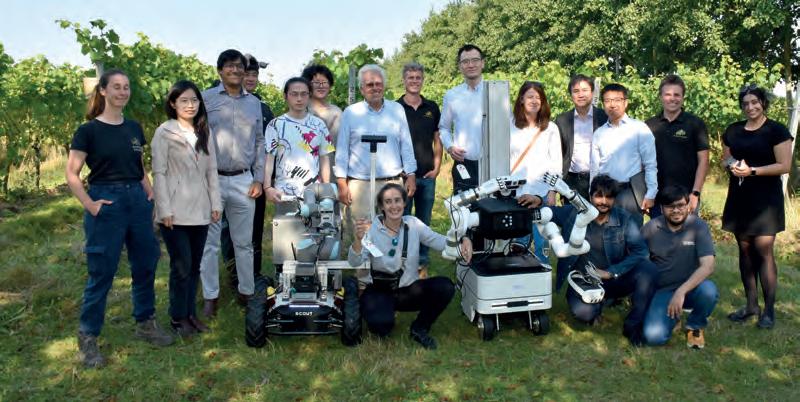
further. This will lead to ‘ eet’ operations whereby a single operator can oversee many robots, while keeping the human in the loop. As it is all cloudbased, you could have farmers on the other side of the world operating a eet of robots on this side meaning seasonal workers could work year-round on di erent continents from their home base, or picking could be carried out round the clock, eliminating local labour shortages.”
The university is bringing its expertise in remote sensing and image spectral analysis to the project, which is critical to its success. Professor Lei Su explained more about its involvement.
“My team is working on instrumentation, particularly AI integrated spectral analysis. If we placed a glass of red wine and a glass of orange juice in front of a person, they could easily tell the di erence. This is our brain carrying out spectral analysis with our eyes being able to see di erent colours in the visible light range.
“If we were to place a glass of water and a glass of ethanol in front of a human, they look identical as they are both clear liquids. What we are working on with AI spectral analysis is a system that can look further than the visible light range at both ends, in both the infrared and ultraviolet ranges and beyond. Using AI spectral analysis, the two clear uids can be clearly identi ed as either water or ethanol due to their di erent wave lengths. This precise technology can be used on the grapes to help ensure that they are harvested at exactly the right time to ensure the very best quality wine. It can also be used on the leaves of the vine to look for disease”.
Dr Ketao Zhang, senior lecturer of robotics at the university, further explained that the aim of the project is to combine robotics and AI to nd the solutions to the challenges faced. “Mechanically we have the wheels to allow the robots to move around the farm, we have the robotic arms to pick and cut the grapes from the vine, but they lack the human touch to select the right amount of pressure required to pick them without damage. We have sensors, of course, but we are also focusing on an electronic skin that provides an arti cial touch to allow the robot to ‘feel’ the pressure being exerted. What we have here today is a concept and we hope to have the rst commercial prototype ready in around two years.”
The team provided a demonstration of how an operator wearing o -the-shelf VR goggles could manipulate the robot using gestures – the fruit of a year’s worth of development. The robot approached a vine, extended the arm towards a bunch of mock grapes, which the arm grabbed, cut and removed – and all done by an operator wearing VR goggles. He may have only been a couple of metres away, but the point is that he could just as easily have been on the other side of the world.
The prototype obviously needs re nement and further development to realise the potential, but what is in no doubt is the skill and the enthusiasm displayed by the teams from the university and the robotics company, and there can be little doubt that by the time they reach the end of their three year plan, if the progress made in the rst 12 months is anything to go by, there could be a robot in a eld in Essex, operated by a picker anywhere in the world, well before the decade is out.





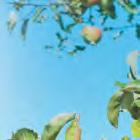



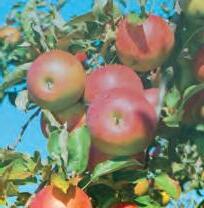
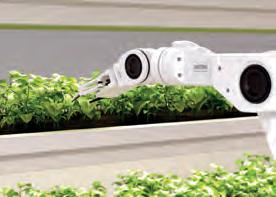
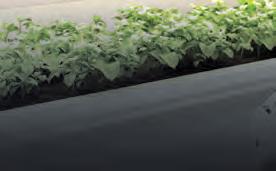
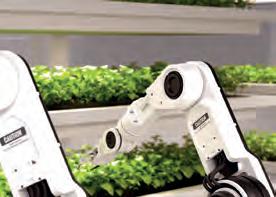

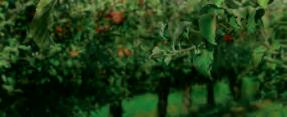




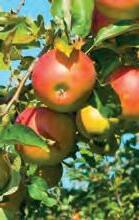
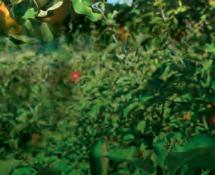
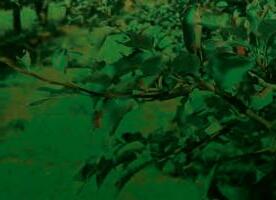


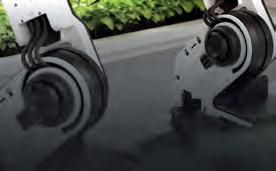





















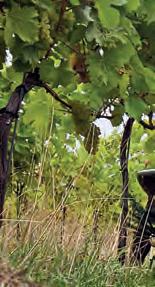



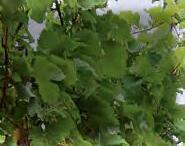





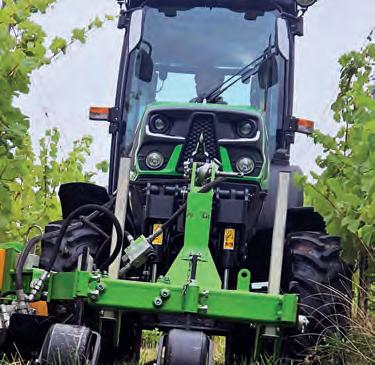

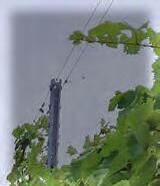
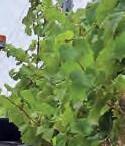










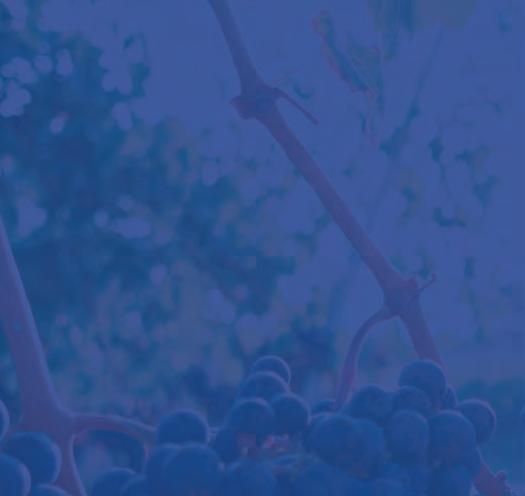
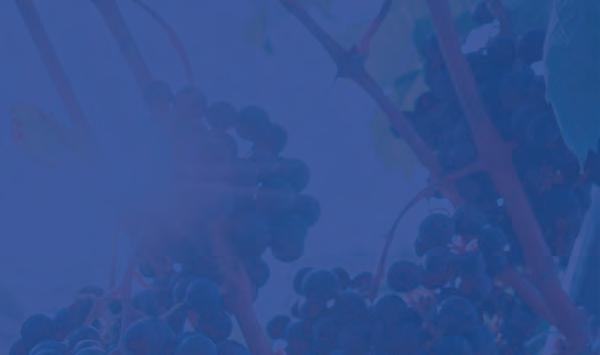

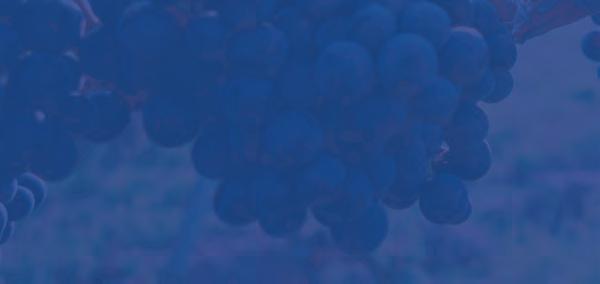


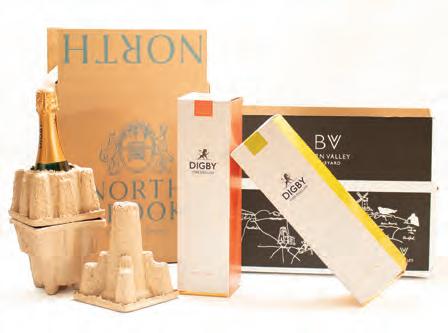

Wilkin & Sons is world-renowned for its jams, produced in Tiptree, Essex for over 130 years – with its Little Scarlet strawberry jam even nding favour with 007. Sarah Kidby visited the farms and factory to learn more about its enterprise.
The Wilkin family have been farming at Tiptree for nearly 300 years, moving gradually from arable to fruit growing in the 1860s, and beginning jam production in the 1880s. According to farm manager Andrey Ivanov, who has worked for the business since 2002, the fruit was once sent to Kelvedon railway station by horse and cart, then on to London, before jam production was brought in-house. Now, Wilkin & Sons is made up of three farms spanning 263ha, as well as an on-site jam factory, pudding room, storage facility, and packhouse, with an o site patisserie and pudding company, and an estate of quintessentially English tea rooms throughout East Anglia.
Trees with special importance
The business blends its rich history – which saw the Wilkins grow everything from rare Little Scarlet strawberries, to medlars and quinces, all of which are still grown on the farm today – with modern-day technologies and growing practices, which help to secure its future in an increasingly challenging climate.

The farm’s 12 established King James mulberry
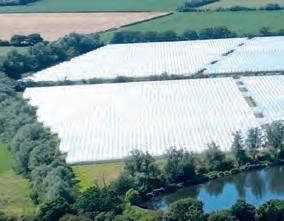
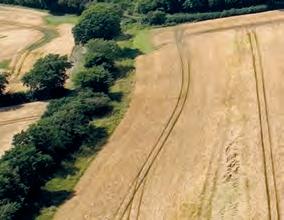
trees are over 100 years old, and another 12 have been planted which will not produce any signi cant volume for 20–25 years. Meanwhile, its oldest damsons were planted 84 years ago, the same year that Peter Wilkin, great grandson of founder Arthur Charles Wilkin, was born. Today, the farm continues to grow a wide variety of fruits alongside strawberries, which are its main crop – including Morello cherries, greengages, crab apples and plums, among others. The farm’s more unusual fruits and minor crops are made into its jams, conserves, jellies, condiments and other products, which are sold in the UK and exported to around 60 countries. And whilst the farm has grown many di erent minor crops over the years, such as blackcurrants and redcurrants, many of these haven’t been replanted, and economies of scale mean strawberries are now its main focus.

Despite being known predominantly for its jam, which rst received a Royal Warrant in 1911, Tiptree began growing 1ha of strawberries for the

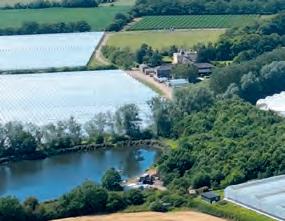
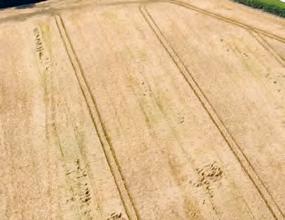
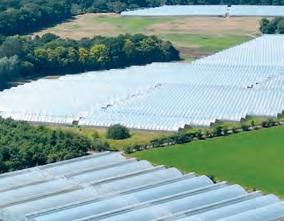
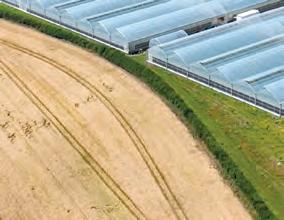
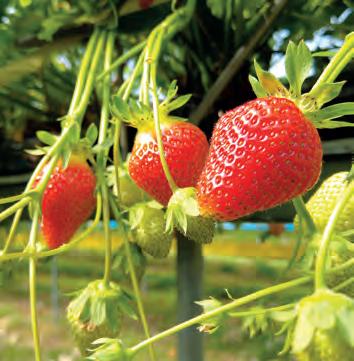
fresh market in 2002, which has since expanded to 26ha. Currently the fruit goes into Sainsbury’s –and Tiptree has its own packhouse on site.
“The agriculture and horticulture sectors are very tight at the moment,” Andrey noted. “Margins (where they still exist) are miniscule, so we have to look at economies of scale and we only manage to achieve that with our strawberries. Some of the smaller growers are disappearing one by one and we don’t want to do that, so we’ve concentrated over the past 10 years on strawberry production and the fresh fruit market mostly. And all the excess fruit goes to jamming – we are very fortunate to have that.”

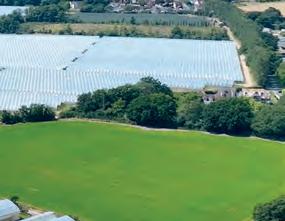
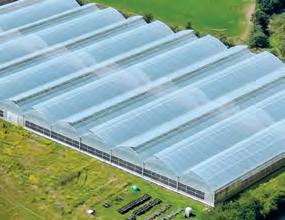

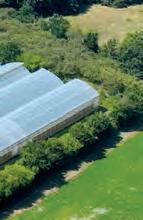
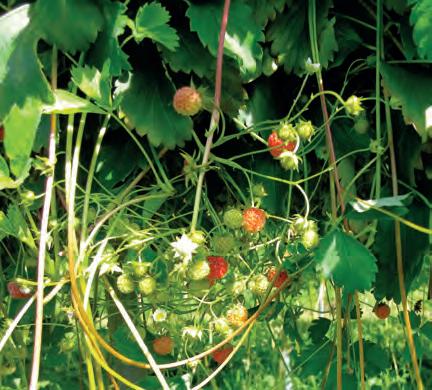
Tiptree is thought to be the only commercial grower of Little Scarlet strawberries in the world
The farm grows a wide variety of fruits alongside strawberries – including Morello cherries, greengages, crab apples and plums
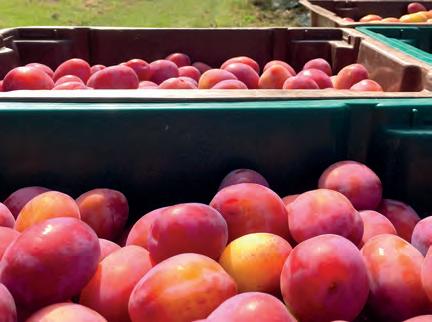
They now produce around 1,500 tonnes of fresh fruit per year, and 500 tonnes for jam. Their strawberry varieties this year are Malling centenary, Prize, Aurora Karima and Favori – and every year they trial 3–5 varieties in larger numbers and 5–6 varieties on a smaller scale, usually starting with 50–60 plants. Within the main varieties, they also utilise three di erent planting types: bare root, mini tray plants and green plants, to o er a at pro le of fruit seven days a week throughout the season, whilst avoiding large peaks.
Not all varieties are available to Tiptree farms and they have to work with their customers on varietal selection. Important attributes are: aesthetic, shelf life, sugar levels and avour, but choosing varieties can be very di cult, as no single variety o ers absolutely everything, Andrey said.
Tiptree believes it is the only commercial grower of Little Scarlet strawberries – and its jam gets a mention in the James Bond novel From Russia with Love. The variety was imported by the Wilkins from Virginia, USA, in the early 1900s and has been grown at Tiptree ever since. Little Scarlets are signi cantly smaller than traditional fresh strawberries, with an intense avour akin to that of a wild berry – and it’s a highly valued crop for the farm. Lacking the size or shelf life for the fresh market, it is grown solely for Tiptree’s Little Scarlet jam. Traditionally a June bearer, it has to be picked, washed and processed within 24 hours.
It was previously grown on the ground, but is now in raised beds to avoid pests and disease (particularly slugs), but unlike the rest of the farm’s
strawberries, it is not grown under polytunnels – for now. The variety is actually less troubled by pests and disease than the farm’s other varieties, but being uncovered, weather is an issue. They tend to have an o year every 3–4 years, Andrey said, and incessant wet weather and reduced pollination this year has hit the crop particularly hard. Yields are expected to be down at least 50%. As a result, next year they will trial around 2ha of Little Scarlets under polytunnels, but being such a rare variety, it’s not known how changing its microclimate will a ect the crop. There’s a concern that other fungal diseases may crop up or that the reduced light transmission could a ect plant growth.
The farm’s fruit crops and cover crops in general have su ered this year due to the unseasonable weather – the quinces have had rust on the leaves, though some trees have fared better than others, but the rest of the strawberry varieties were catching up at the time of our visit.
Being located in the driest part of the driest county in the UK, water is a key challenge for the farm. In 2022, they had just 511mm of rainfall which Andrey noted is comparable to a desert country. Last year, it was 912mm, which is still far below the UK average of 1,380mm. And with clay soil, no rivers nearby and very few streams, which generally dry up in summer anyway, there is no underground water to abstract, so rainwater harvesting is their main source of water.
Adopting new technologies has also been important in making the best use of their water. Up until 2002, their production methods were very traditional, with fruit grown in open elds, but now all strawberries apart from the Little Scarlets are grown in tabletop systems under polytunnels, in coir substrate. Sensor technology is used to provide irrigation only when the plant needs it.
The farm has seven reservoirs across its farms, and water is harvested from all of its structures, including greenhouses, polytunnels and its ‘New Growing System’. A treatment plant also allows them to reuse waste water from the factory for irrigation, and prevents any bacteria or fungal diseases from the eld being spread to the whole farm. The central pumping station is at the heart of the Tiptree estate – connecting the farm’s reservoirs and irrigating its crops.
“We needed to do a lot of work on water, and now I can say we are water resilient,” Andrey said. Thanks to their harvesting of water and precise irrigation, as long as they have 650mm rain a year, they are self-su cient.
“We’ve done this because we had no other choice, but we’re very proud of it because now the next challenge for everyone will be water –a lot of farmers are struggling,” Andrey added.
back
The farm has two independent agronomists who visit the farm on alternate weeks. As a conventional grower, sprays are used according to the weather and need of the crop, but they have been using biological controls for the past ve years, which are working very well, and pest monitoring traps are also used. Insecticides have been reduced by 95–100% as a result, but Andrey stressed that it’s dependent on pest pressure and if they could not establish biological control, they would have to spray.
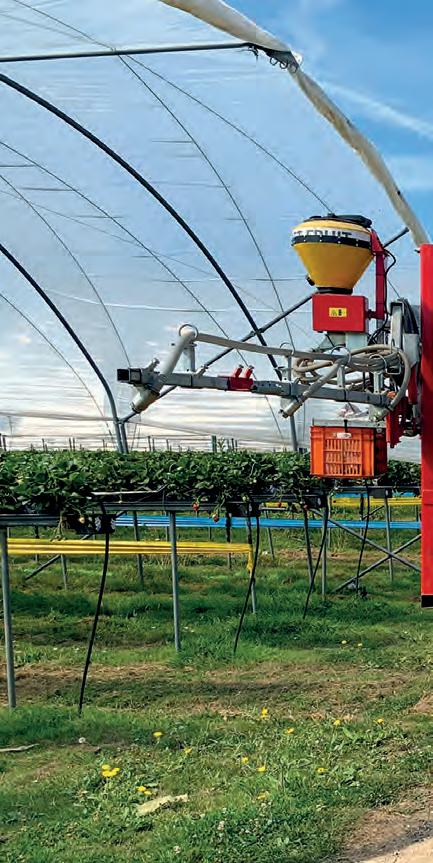
As a conventional grower, sprays are used according to the weather and crop need, but they have been using biological controls too which are working very well
Fungicides, on the other hand, are more di cult to reduce and each year is di erent – botrytis spores are in the environment so if the conditions are right, with wet weather and humidity over 60–70%, it will start to cause problems. The same is true for powdery mildew, which is their biggest disease pressure for the strawberries. They are trialling UV-C treatments over the next two years and this has already reduced their fungicide use by 50%. While consumers are often concerned about spraying, Andrey said UK regulations are strict and the demand for British food from countries such as China shows that the Union Jack carries a promise of safety and quality.
In 2015, Tiptree became the rst grower in the UK to introduce its ‘New Growing System’ (NGS) – a covered oscillating structure rst seen in Spain that allows them to mechanically move layers of strawberries up and down at the touch of a button, with fully integrated climate control. Vents on the top and sides automatically open when temperatures rise. Often referred to as the ‘Tiptree vertical system’ by visitors to the farm, it’s not actually vertical – during the growing stage the layers of strawberries are grown together, and they can be moved up and down to allow pickers to interact with the fruit, creating a better environment for workers.
The development wasn’t cheap, but the
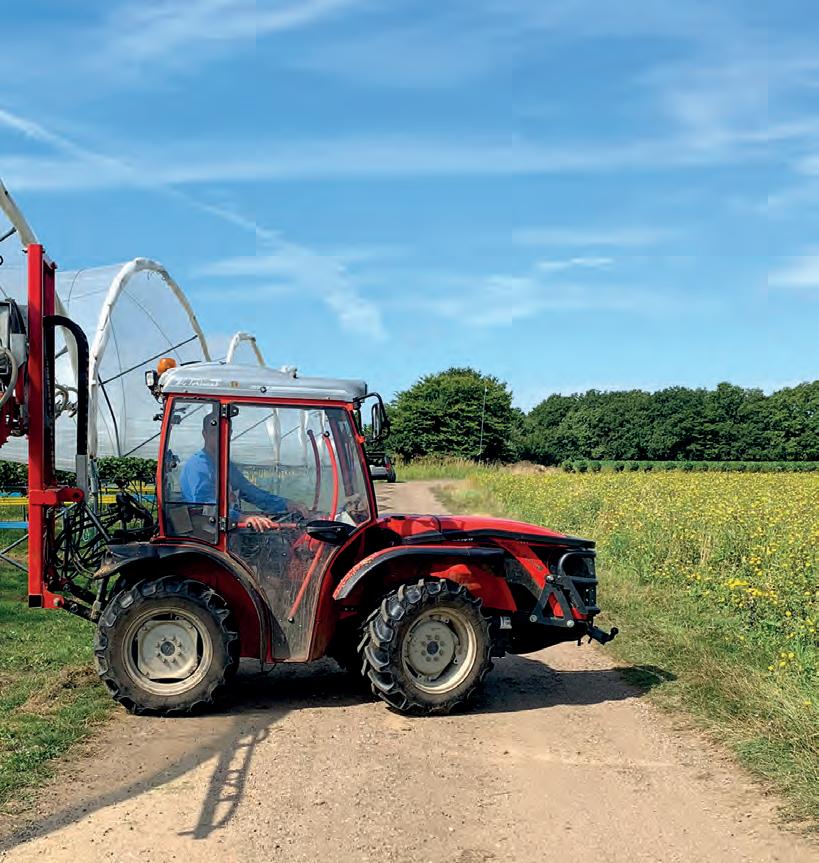
rewards for the business have made it a no brainer. It allows them to crop 100% of the production area and increase plant density, unlike in a conventional system where you can only crop every second row. Traditional growing in open fields allowed them to plant 30,000 strawberry plants per hectare, while tabletops extended this to 55,000/ha. But with the new system, they can plant 200,000/ha – though Andrey says the optimum number is 100,000. Insufficient light levels in the UK meant the plants were too vegetative and fruit yields too low with both 200,000 and 150,000 plant/ha. Yields have increased 50% with the NGS, and their carbon footprint has reduced threefold, compared to tabletop systems. They can also start the season earlier and finish later without artificial heating and lighting, and a much more tightly controlled climate means zero insecticides and herbicides. While fungicides are still used, it’s hoped the UV-C treatments will eliminate this too, so they can claim to be residue free.
Following a carbon study, they are now planning a similar 4ha structure closer to the factory which will collect heat from the chimneys and boilers to use for growing – this will extend the season for another 6–8 weeks. Light levels will prevent them growing too early, but beginning in April and continuing until November is sufficient, Andrey said.
Being a business with a farm, rather than purely a farm, gives Tiptree an advantage when it comes to new developments such as these, he acknowledged – they have access to engineers, accountancy, HR etc, whereas for many growers, all these tasks fall to the farm owner.
The business has taken pains to save energy and improve its carbon footprint – carbon calculations are now in their fourth year, which has been a huge undertaking, Andrey said. They have also carried out field scans to identify retained and active carbon to better understand their soils, and will plan methods of putting carbon back into the soil over the next two years. Following these calculations they decided to ‘inset’ – rather than offset – their carbon footprint, i.e. making changes to their own site rather than buying woodland for example, though this will be much more time consuming and costly. As a farming enterprise, Tiptree is now in carbon credit, but as a company, Wilkin & Sons is a long way from this goal due to the energy intensive nature of jam production, particularly the glass jars.
A former arable field has been put into solar panels and another, opposite the strawberry polytunnels, is in regenerative agriculture. Tiptree is in Countryside Stewardship Mid Tier and farms to LEAF (Linking the Environment and Farming) standards, adding biodiversity corners and edges wherever they can, including owl boxes on site and leaving hedges and grass uncut as much as possible to increase biodiversity. Subsequently, the farm has become a haven for hares, pheasants, partridges and muntjacs, among other wild species. This has the added benefit of attracting natural beneficials to combat pests. Providing habitats for pests has also been successful in keeping them away from the fruit crop, Andrey explained.
The crop type planted in each field is changed every two years to maintain vigour and yields, but
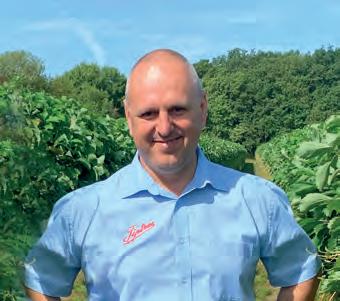
Farm manager: Andrey Ivanov
Location: Tiptree, Essex
Fruit growing area: 263ha across all three farms
Fruits grown: 30ha strawberries, and 25ha in rhubarb, raspberries, cherries, apples, greengages, Victoria plums, damsons, mulberries, quinces and medlars
Soil type: Silty clay
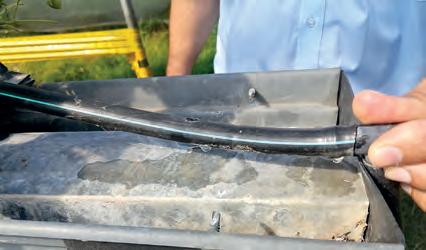
After cooking to release the liquor, blood oranges are pulled open by hand to check for pips before being made into marmalade
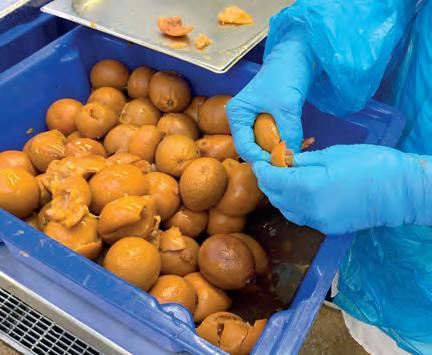
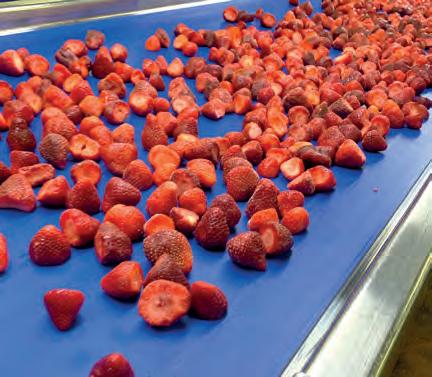
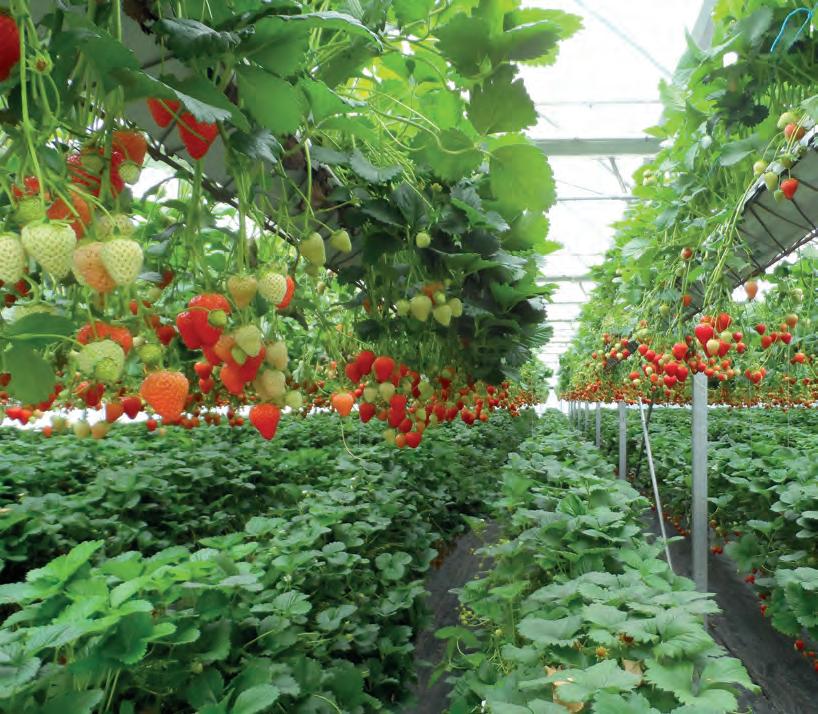
noting the current buzz around regen ag, Andrey said farmers have been using these techniques for generations.
“It’s inevitable that you cannot put the same crop on the same eld year on year, so to have that success you have to recharge the soil with di erent crops – whatever you choose, wild- owers etc, depends on what you need for your soil. We have been doing this for generations and generations, it’s not something new really but that’s the new modern word that gets everyone excited.”
He added: “Now we’ve got much more modern methods of assessing the soils to decide what to do to get everything back up to scratch.”
The farm does regular soil health tests and eld scanning to understand the nutrient content and health of the soil, sending leaf, soil and water samples every 2–3 weeks and adjusting as needed. Each eld has sensors that constantly measure inputs such as moisture, pH, and electrical conductivity, which is connected to a system in the pumphouse, automatically giving the plants exactly what they need.
Tiptree has 13 permanent members of sta and all other labour for the farms is sourced through the Seasonal Agricultural Worker Scheme (SAWS) – in fact, Wilkin & Sons was the second registered user of the original scheme when it rst opened in the 1950s. It closed in 2014 but reopened as SAWS after Brexit. Whilst the farm has no problem nding su cient labour in terms of numbers, getting skilled, experienced pickers is an issue, as many of the workers are new to the scheme.
Seasonal workers live in the on-site farm
camp, which includes furnished caravans and a recreation and catering facility, plus a laundry, drying room and meeting hall. The farm has around 20–30 workers on site from February each year when the polytunnels are put up, but once harvest gets started, numbers can run into the hundreds at peak times. Harvest begins each year with the Timperley Early rhubarb in April, followed by cherries in June, mulberries in July, greengages in August, damsons in September, quinces in October, medlars – a Mediterranean fruit with a savoury avour – in November and apples from August to September. Meanwhile, strawberries are harvested from May to October.
There are more than 150 workers in the factory year-round, many of whom are friends and family of the permanent sta , who help out during the holidays – and they also have workers on zerohour contracts, explained factory supervisor Tracy Warren, who manages the pudding room and marmalade making.
When it comes to jam production, everything is made to order. While they used to cook from fresh, with orders getting larger they now individually quick freeze (IQF) fruit after picking. Again, they have their own storage facility, which was built in 2012. Being as self-su cient as possible in farm-grown fruits is important to Tiptree. They are often asked if the fruit used for the Tiptree products is grown on the Tiptree farms, and whilst they try to ensure that this is the case for the fruits they can grow on the farm, some is bought in to meet demand or, for fruits such as the Seville oranges used for marmalade and vine fruits for Christmas puddings.
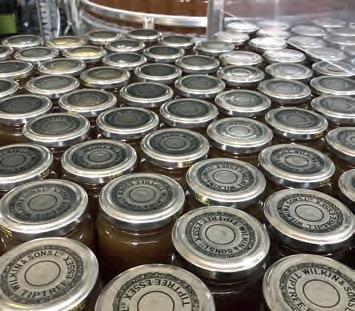
Tiptree produces around 500 tonnes of jam every year
Tiptree produces its own Christmas pudding varieties and Cole's nut-free puddings
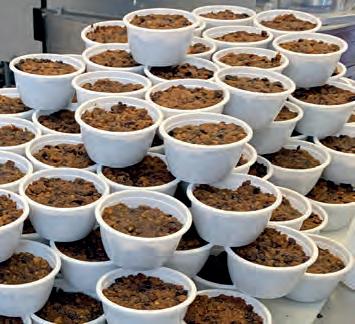
The fruit begins its journey in the factory by being put through a conveyor belt, allowing sta to check it and remove any stones in plums or cherries. before it’s weighed, washed and processed. The factory also has a destoner machine for the Morello cherries. For the marmalade, oranges are cooked for three hours and left overnight to release the liquor; they are then pulled apart by hand to check for pips and the pulp and juice are removed, before being added back into the nal product with the cut peel. Every part of the orange is used apart from the pips, Tracy said.
Also produced on-site is the company’s wide array of other products – from curds and sweet spreads, to fruit jellies, chutneys, relishes and sauces, among many others. Additionally, Tiptree produces English spirits and liqueurs.
The on-site pudding room, meanwhile, is where its range of Christmas puddings are created, including Tiptree’s own brand varieties and Cole’s nut-free puddings, which became part of Wilkin & Sons in 2010. The fruits are pre-weighed 24 hours before use, soaked in the alcohol and hand weighed again before being put into basins and into the cooker, which has internal probes to check the temperature. After overnight cooling they are packed, again by hand and checked on a sample table to ensure quality.
Tiptree is always looking ahead, and next on the horizon the business is looking to add nut butters to its extensive product list. By the end of this year, there will also be an announcement on its Royal Warrant, with hopes this will be renewed by King Charles. Finally, on the farm side, Tiptree is looking to trial robots to aid early disease detection in its crops.


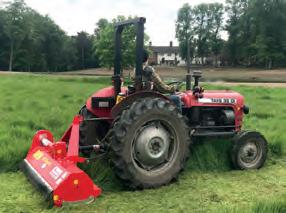














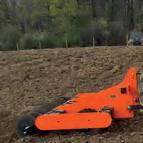
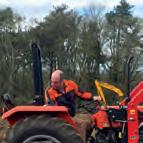


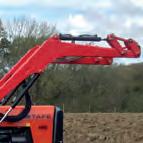









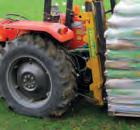





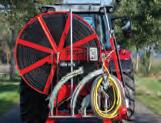


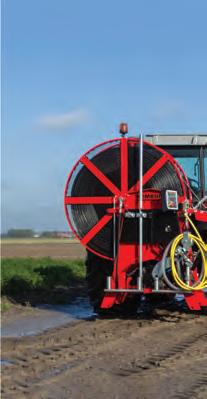
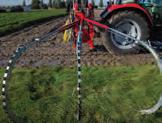
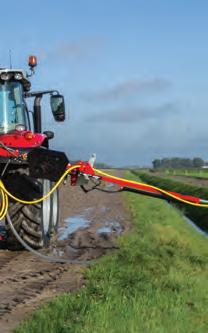


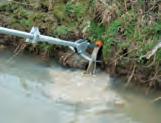






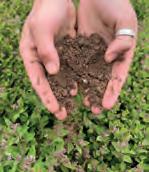

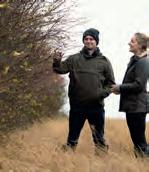





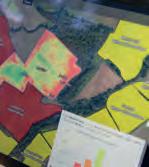











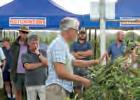
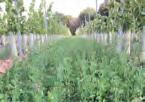


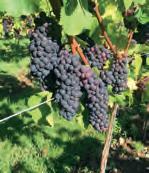









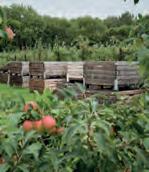




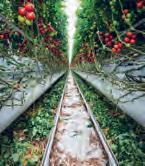




















As























the cropping season for soft fruit draws to an end, the focus switches to protecting crops over the winter months to give
them the best possible start next spring.
The trend in recent years of milder, wetter, winters poses some speci c challenges for soft fruit crops, from the increased risk of pests and diseases, to the lack of winter cold necessary for vernalisation and renewed vigour in the spring.
Once the polythene comes down, crops are inevitably at the mercy of whatever the winter weather brings; but there are things growers can do to help mitigate some of the risks, says Hutchinsons agronomist, Andrew Taylor.
Watch for aphids
Mild winters, such as 2023/24, can favour the build up of aphid populations, and this year that risk has been compounded by the fact that numbers of natural predators (e.g. wasps) have generally been much lower due to a cool, wet spring.
“The natural predator population has still appeared, but not in the numbers we’d usually expect,” Andrew says. “Now is an ideal time to inspect crops for overwintering aphids, and treat if required.”
Five species of aphid are commonly found on strawberries in the UK, including the strawberry aphid (Chaetosiphon fragaefolii) and the shallot aphid (Myzus ascalonicus).
The latter can migrate into strawberries over winter, as the crop acts as a winter host. “It is worth looking out for shallot aphid, especially – but not exclusively – in areas where a lot of onion or other host crops are grown.
“You tend to see the evidence of shallot aphid in the spring, when a ected plants become stunted and are slow to grow away. This is due to the toxic saliva the aphid injected into the plant.”
In terms of control options in the autumn, Andrew says biological products will become less e ective as temperatures decrease, so where


aphid treatment is required, the main option is lambda-cyhalothrin. Prioritise crops where there is a history of shallot aphid, or those in close proximity to other host species in the local area, he says.
Caution should be exercised where biological controls, such as Amblyseius cucumeris, have already been employed earlier in the season to tackle tarsonemid mite (Phytodromus pallidus), he warns. “Generally, I’d be reluctant to go chasing aphids in that situation, because you want to give the biological control as long as possible to feed on the tarsonemid, which is probably more damaging overall than shallot aphid.”
During the winter months, aphid treatment is unlikely to be necessary, but once into February and crops start to be protected again, that is when they should be inspected closely for signs of overwintered aphids, and targeted treatments applied where necessary, he says.
Vine weevil is a big threat, that can be devastating if left uncontrolled, so you don’t want it in crops.
Andrew Taylor, Hutchinsons






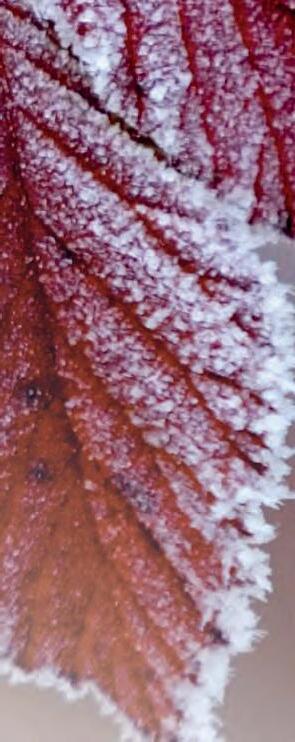


One potentially devastating pest in ne-rooted blackcurrants, is vine weevil, and growers are urged to check crops for any signs of activity and treat where necessary before winter.
Identifying the pest can sometimes be tricky, with adult feeding damage, or early senescence in the autumn, being the main indicators. Risk is often greatest in elds with a history of soft fruit growing, but it can also be introduced in new plant material, Andrew says. “It’s also worth noting that adults can easily move 100m or more, so the pest can migrate between elds.”
Some of the more vigorous strawberry varieties are less prone to vine weevil damage than others, he says. Florence and Symphony, for example, are both very vigorous plants that may tolerate a population of vine weevil by outgrowing the damage. In contrast, other varieties like Malling Centenary or Elsanta are less vigorous and would not survive as well. “Either way, vine weevil is a big threat, that can be devastating if left uncontrolled, so you don’t want it in crops.”
In blueberries, vine weevil often target the area around the neck of the plant where sawdust or bark mulch has been applied and new roots form. “Before you know it, the feeding larvae will girdle the outer bark of the bush, and then you just don’t get any production or new growth. There is zero tolerance for vine weevil in blueberries.”
To manage vine weevil risk, Andrew recommends the nematode-based biological control, Nemasys L, applied around the neck of the plant to prevent vine weevil larvae from feeding and causing further damage.
“Vine weevil control with nematodes is dependent on compost temperature though. Once it drops below 7ºC, it is probably getting too late. Products work by the nematode entering the


vine weevil larva and releasing a bacteria which then stops it feeding; that bacteria generally doesn’t work very well below 7ºC.
“Some growers will apply it [Nemasys L] through irrigation systems, but personally, I like to see it applied directly around the neck of the plant using a hand lance because the nematode doesn’t travel very far from the point of application. It does require extra resources to do it this way, but that is money well spent as you just can’t a ord to have a vine weevil population raging in your blueberries. The better you do the job, the better the control is.”



With most strawberries grown in bags or troughs on tabletops, Andrew recommends placing these on the ground over winter and covering with eece to help protect against any potential frost damage.
“Last year, many growers would’ve probably got away with leaving strawberries on tabletops as there was virtually no frost over the winter; but if we do get periods of sub-zero weather in January or February, this can result in quite a lot of crown damage. Generally, strawberries survive a lot better on the ground than up in the air.”
Once strawberries have been moved, tabletop irrigation systems should be drained of water to reduce the risk of pipe damage during freezing conditions.
Autumn pruning of most raspberries should have been done by now, with the exception of late-cropping varieties, and canes tied in to reduce the risk of wind damage over winter. Andrew

says there may be a need for some secondary spawn control post-pruning, and the main option for this in ground or pot-grown raspberries, is carfentrazone-ethyl.
In strawberries, if crops have been a ected by phytophthora crown rot late in the season, growers could consider treating it with dimethomorph, but only while there is still vegetative growth, he continues. “Once growth reduces, the active is not transported through the crop as e ectively.”
He also reminds growers to adhere to the limit on the total amount of dimethomorph that can be used per hectare each year.
“There are some biological products being used for phytophthora control in glasshouses that look quite promising, but at present they aren’t registered for use outside of permanent structures. I’m hopeful that if manufacturers can see there is some potential, then we might be able to get extended usage of these products in future.”
Looking ahead, Andrew notes that careful irrigation management during the spring establishment period is critical to disease control, as too much water can increase risk. “One thing we can’t regulate is the amount of moisture we get over the winter. If we do get prolonged periods of rainfall, then in some cases you can see disease levels increase. There’s not a great deal you can do about it in the winter; it’s only when growth restarts in the spring that you nd disease levels are higher than when you put crops to bed in the autumn.
“We need some cold units over the winter ideally – that’s what makes a good plant in the
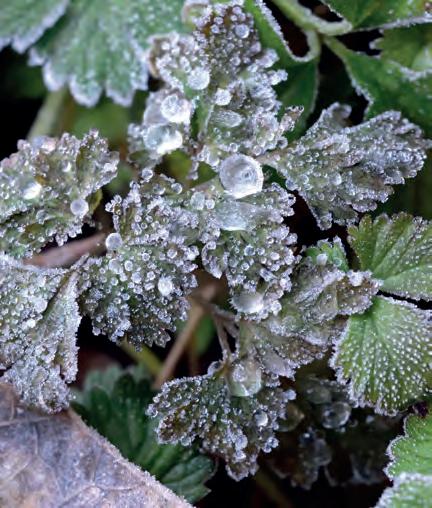
spring. They get vernalised with the cold and have a bit more vigour to them when growth resumes.”
Finally, slug populations have been very high this year – largely a legacy of the very mild, wet winter in 2023/24. This risk has carried through to the autumn, so should be managed with targeted pellet applications before winter, to reduce the background slug risk going into next spring, Andrew says.





The HOTBOX HEATWAVE is a made-to-measure bench heating system which encourages germination, propagation and growth by delivering constant, uniform heat to the base of seed trays and plant pots
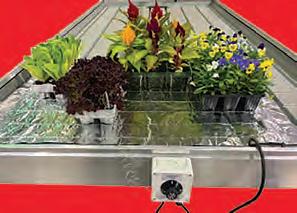


OPTIMUM GROWING TEMPERATURE FROM 6 to 38°C
Precise thermostatic control
EASY TO INSTALL
Just plug in and plant up ENERGY EFFICIENT
Inexpensive to run DURABLE CONSTRUCTION
Reliability built-in
IDEAL FOR ALL GROWING BUSINESSES



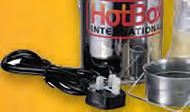



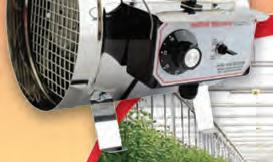




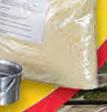


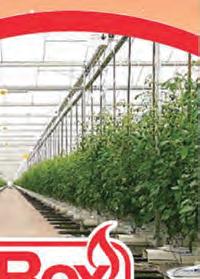




Protection from frost damage
Firmer fruit with more crunch
Reduces cracking, rots and skin disorders
Extends shelf-life
Zero-residue






✓
✓
✓
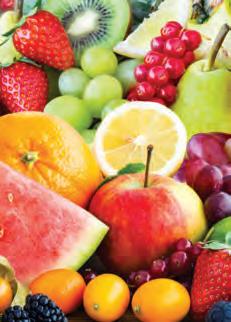
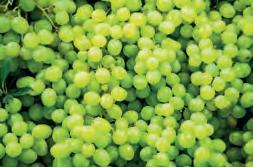



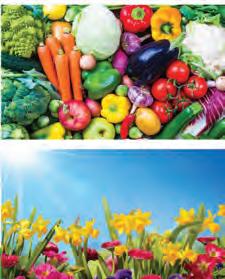
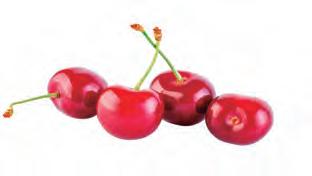



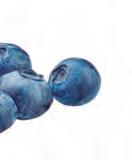


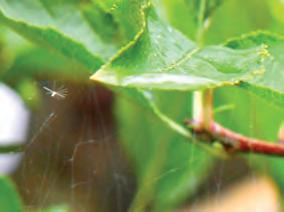
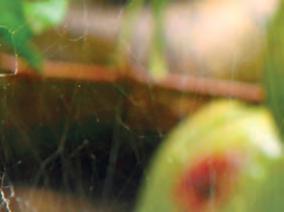
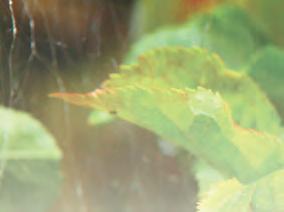

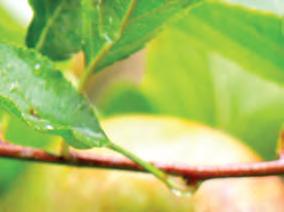
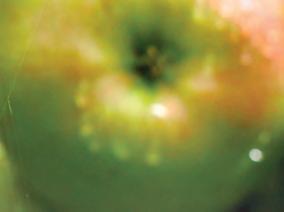
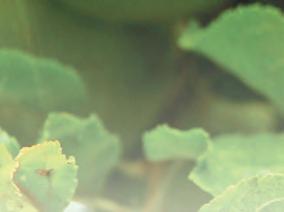

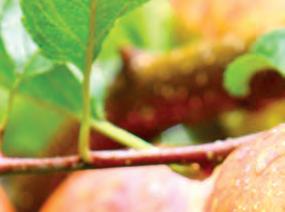
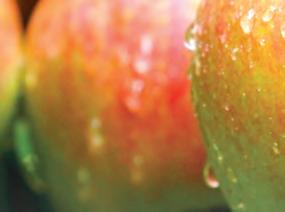
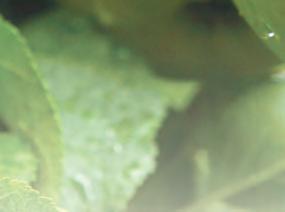
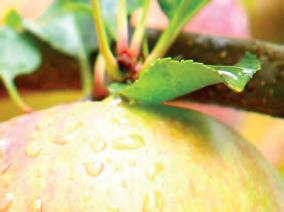
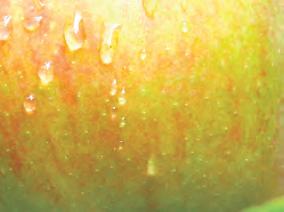
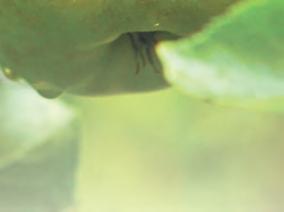

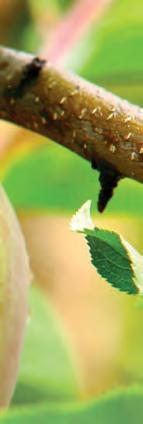

After a year of unusually heavy rainfall, keeping a close eye on top fruit nutrition will be particularly important – Agrii agronomists shared their expertise during a recent podcast. Sarah Kidby reports.
In years with turbulent weather, such as that seen over the past year with very heavy rainfall throughout the winter months, much of the nutrition put into top fruit trees the previous year may have been washed away or not be plant available, explained fruit agronomist Matt Greep. “The level of investment we make in year one isn’t always returned in years two and three. We need to continually assess it, look at the situation in that cropping year and see if we need to make any adjustments,” he added.
Ryan Williams, another agronomist at Agrii who works with apples, pears, cherries and plums, as well as soft fruit and vines, noted that when plants are not given the correct nutrition, they will be far more susceptible to pests and disease, and less likely to withstand the turbulent weather conditions. In some cases, this leads to the death of the plant, and huge expense for the grower in removing and replanting it.
With some top fruit trees in the ground for as long as 30 years, for example in cider production, growers are always thinking ahead and what we do in the present year is laying the groundwork for next year’s fruit, added agronomist Emma Smith.
The key macronutrients required for most fruit crops are nitrogen, potassium, phosphorous and calcium – and the latter is particularly important for cell division, quality and strength, especially for apples and pears, Mr Greep said. Soft fruit shares these requirements and may need additional
nutrients, whilst for vine crops magnesium, iron and manganese can all be essential to the quality of the crop.
Meanwhile boron and zinc are two of the main micronutrients for top fruit crops during and just before the owering period, Ryan continued. This helps to strengthen the pollen tubes for healthy ful lling owers, which will eventually bear the crop. Additionally, post-harvest storage disorders can be seen in fruit, causing problems in the packing process if plants are de cient in these nutrients.
Moving onto post-harvest nutrition, he emphasised the importance of giving the crop su cient nutrients going through to the dormant winter period to ensure owers are strong and healthy during the rst stage of growing in March and April. Prior to the owering period the tree does not use any nutrition from the soil but purely relies on its carbohydrate reserves.
Crop nutrition is also particularly key in UK crops such as strawberries which are now grown almost exclusively in coir in the UK, Matt added. As coir doesn’t carry any nutritional value, the crop must be fertigated with the right balance of essential nutrients for the plant’s growing stage, to prevent it going into a vegetative state.
When it comes to knowing which crops to give which nutrients, and at what time, the Nutrient Management Guide (RB209) – section 7 for fruit crops and vines – provides a database of knowledge. Agrii agronomists carry out crop walks and monitoring every 10–14 days throughout the



growing season, including visual assessments of the colour and productivity of the leaf and overall plant. Soil and tissue analysis, and when the time comes, fruitlet analysis, will highlight if the tree is out of balance, Ryan explained. Tissue analysis is generally carried out twice per season, once after blossoming and again around harvest time. Nutritional de ciencies can be spotted by eye so if anything stands out halfway through the season then it's always advisable to take a sample then as well, Emma added.
Role of biostimulants
Over 50% of Agrii’s R&D trials each year are speci cally around biostimulants, according to Matt, and the company is actively trying to develop this sector of the market – which is still quite unknown and relatively new. Biostimulants not only stimulate the plant’s defences, they can also boost nutrient use e ciency and pest control, and improve availability of nutrients within the soil.
Giving an example of a product used by Agrii, Ryan said ProAct e ectively primes the plant and can assist with the uptake of calcium. It’s applied 2–3 times a year in top fruit, around blossom time and petal fall, and


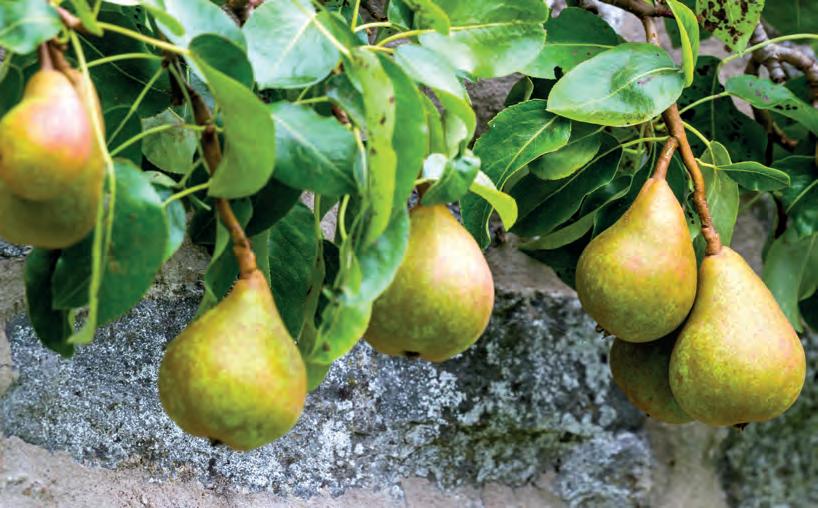

again pre-harvest. It can also provide some properties that make crops more resilient to frost, resulting in a better quantity and quality of crop. As the UK sees more adverse weather conditions – wetter

winters, hotter summers and occasionally later frosts – top fruit crops may still su er frost events during owering in mid to late April, and into early May.
Commenting on the potential for biostimulants in top fruit growing, Matt said: “Think back to when you experienced a normal season in the UK. It’s almost rhetorical because I don’t recall one at all in the nine years I’ve been with Agrii. We’re seeing far more adverse weather events – really hot summers, very wet winters and protracted periods of wetness
– and what that leads to is a cropping system under enormous environmental stresses throughout the entire season, and quite often it’s going from one extreme to the other.
“This reduces the plant’s ability to overcome stress and carry out its normal metabolic functions. So if we can use something like a biostimulant to reduce the stress impacts on the crop around these weather events, that’s going to help it function normally and produce a crop.”
Key take-home messages
“For me, it’s probably monitoring, monitoring, monitoring,” said Ryan, when asked for his key advice for getting the balance right with top fruit nutrition. “That starts in the orchard, crop walking and looking for foliar de ciencies in trees and fruits, which can also be assessed using tissue and soil analysis. We can also see the results of this go through to post-harvest and a ecting shelf life.”
He also reiterated the importance of calcium in the crucial six-week period after bloom for cell division and expansion when roughly 90% of calcium is taken in by the plant. One of the most important nutritional de ciencies seen in postharvest cold store is bitter pit, a calcium de ciency most commonly seen in some of the older varieties like Cox and Bramley. “It presents as small brown pits in the apple esh and, when severe, it can be visible from the outside of the fruit. So if the fruit isn’t nutritionally balanced some of these problems can rear their heads,” Ryan concluded.
Meanwhile, Emma stressed the importance of analysis to ensure you’re giving the plant what it needs so it can withstand post-harvest life.

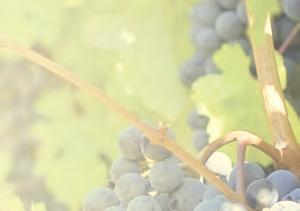

ICL is making its low carbon footprint, multi-nutrient fertiliser Polysulphate (48% SO3, 14% K2O, 17% CaO and 6% MgO) available to fruit and vine producers in a special ‘Mini Granular’ formulation in easy-to-manage 25kg bags.
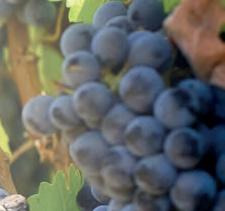






As sulphur and other key nutrient de ciencies increase across the UK and growers seek sustainable methods for boosting soil fertility, the new format could bring the bene ts of Polysulphate to a much wider range of producers, says ICL’s Andrew Judd.
“Mined in North Yorkshire, Polysulphate is a natural product with the lowest carbon footprint of any fertiliser at 0.0029kg CO2e/kg product, making it an ideal choice for growers looking to decarbonise their production.
“It’s been proven to lift yields and improve crop quality signi cantly in a wide range of
crops, including in top fruit and grape production.
“Polysulphate is approved by the Soil Association and Organic Farmers and Growers, plus it is a perfect t for growers following the Sustainable Wines of Great Britain (SWGB) certi cation scheme.”


Applied at a recommended 50g/m2 (500kg/ ha) to top fruit and vineyards by hand, domestic spreaders or tractor mounted equipment, Polysulphate provides four essential watersoluble nutrients in a single application, he explains.

growers across the country.
“Agrii fruit agronomists use Polysulphate in many forms when advising nutrient management plans for our wine grape growing customers and top fruit customers,” says Agrii agronomist and fruit team manager, Matt Greep.
“Be it Potash Plus or Agrii Fruit 50 – the Polysulphate component is perfectly balanced for fruit crops that have a high potassium requirement for yield and quality of the crop.


“The slow-release potassium, magnesium and calcium in Polysulphate will be of signi cant interest to wine grape growers. Particularly potassium, as this is essential for fruit quality and sugar development and vines use about 3kg of potassium for every tonne of grapes harvested.”
Agrii will be working with ICL to make the new Mini Granular product available to fruit and vine

“This bespoke mini-granule Polysulphate in a 25kg bag is going to help vineyards of all scales make a more targeted and sustainable approach to the fertilisation of their grapes.

“The fact that it’s a 100% soluble organic fertiliser and has no e ect on soil pH with all the potassium in the product being potassium sulphate with no chloride in its granule, is a real bonus for fruit and vine producers.”


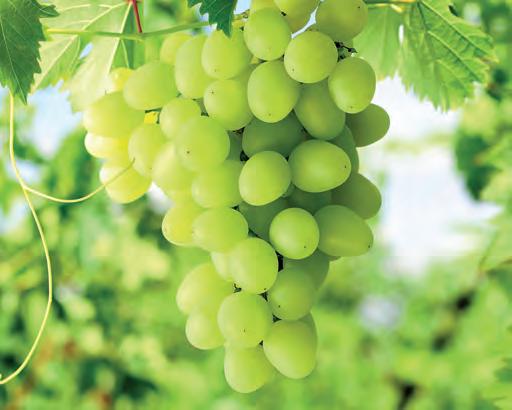
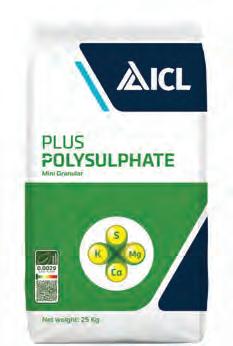








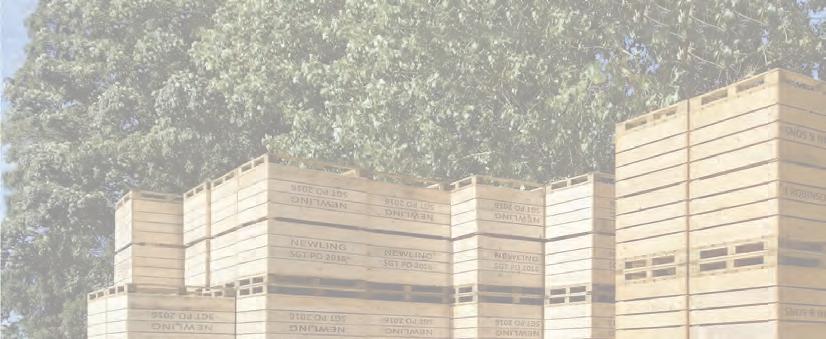

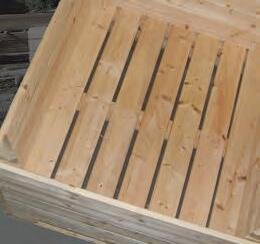
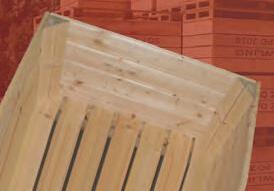
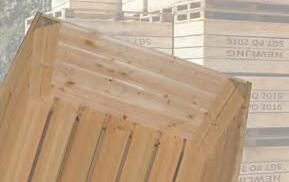
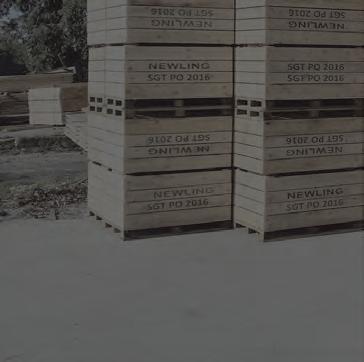



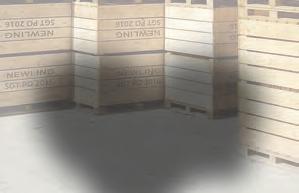
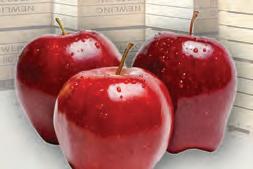




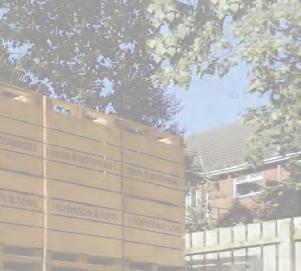
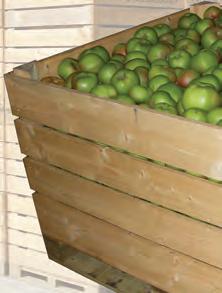



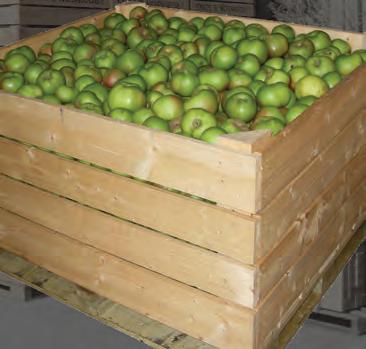





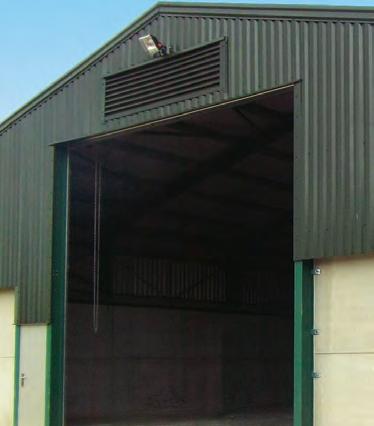

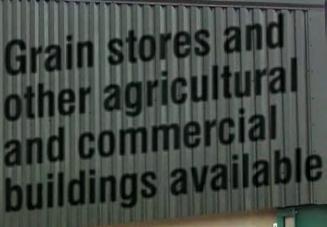


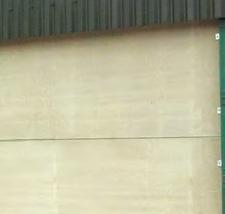





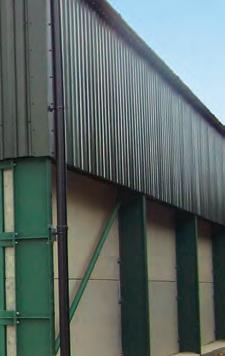


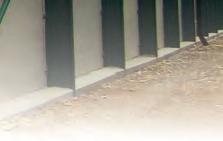


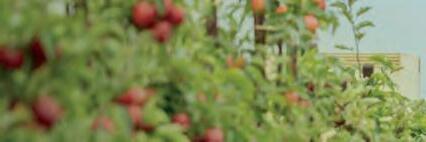






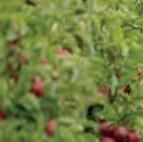
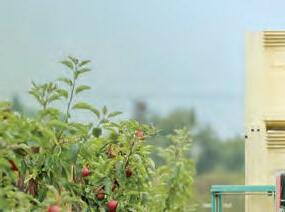
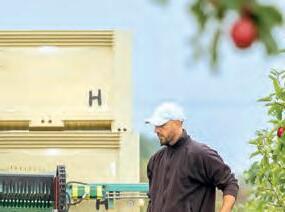



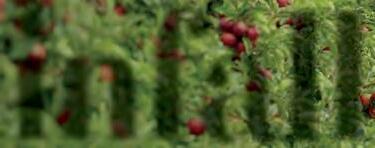
With growers in parts of the country now suffering the effects of the eighth wettest winter on record in 2023/24, Sarah Kidby spoke to apple and pear growers for an update on this year’s harvest.

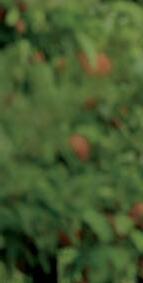
Record wet weather last winter, continuing into spring, has resulted in widespread reports of a lack of pollinators, with some growers also hit by tree damage, reduced yields and russeting. However, British Apples and Pears Limited (BAPL) has said overall volumes are as expected and excellent colour is being seen on fruit this year.
After a combination of adverse weather conditions and the strain of three consecutive strong harvests, Showerings Cider, based in Shepton Mallet, Somerset, is predicting a 70% reduction in apple yields this year – but quality remains superb, according to director Nick Showering. The 2024 harvest is expected to yield around 200 tonnes of Dabinett apples, compared to 600 tonnes in a typical year.
“My suspicion is it’s not just us that this has happened to,” Nick said, adding that the number of apples coming to Showerings for pressing from local growers was also very down this year.
Waterlogged soil during the winter months hindered air circulation to the roots, resulting in some root decay and increased susceptibility to disease, but pruning and care have since returned the a ected trees to a healthy state – though some unfortunately died and will have to be replanted. Wet and windy conditions again in the spring meant that those blossoms that did appear did not ourish as well as usual and were at risk of being knocked o – as well as su ering quite badly from blossom weevil.
Fortunately, as Showerings Cider is a triple vintage they can draw more heavily on previous years to make up the shortfall. But without this, and taking on pressing and cider making for other growers, they would be in “real trouble”, Nick acknowledged. However, on a positive note, speaking in October, he said that although it was still too early to determine the precise avour pro le of this year’s crop, ‘o ’ years often yield slightly larger apples, which can bring unique qualities to the cider.
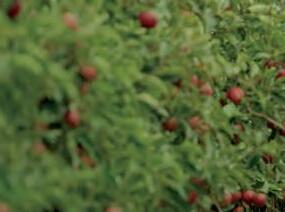

Biodiversity is our defence
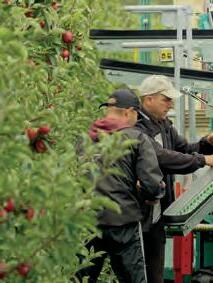
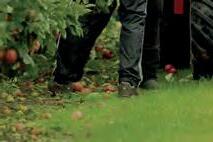
Joey Hughes, of orchard specialist Orchard Daughters in Machynlleth, Powys, said that while trees had coped with the wet, cold summer, there was a marked reduction in pollinator numbers this year. “Many fruit growers reported poor harvest due to poor pollination this year – by the time the insect populations got going, many orchards had already owered.”
With winters getting milder and wetter, impacting tree dormancy, and summers often earlier and drier, prompting reblight concerns, Orchard Daughters gives a lot of thought to the speci c impacts of climate change. Joey said the “truly worrying trend from it all is unpredictability”.
He explained: “With our own pears we’re looking at only planting them on Pyrodwarf as this at least o ers some reblight resistance. We are also adding more Asian pears into the mix as these have lower dormancy requirements. And we’re making extra e orts to build up habitats and food sources for both bene cial predator insects and the full range of primary and secondary pollinators. As ever, biodiversity in its widest sense is our defence.”
“Harvest is going well”
Despite the challenges, Ali Capper, executive chair of BAPL said the overall impression of the harvest is positive, noting the excellent colour on fruit. Speaking in October, she said: "The harvest is going very well. The early and main season varieties are now almost all picked and we’re moving into picking for varieties like Braeburn, Jazz and Kissabel now.
"Our growers are reporting excellent colour on the fruit this year. If you’ve seen any of our recent ‘#OrchardWatch’ social media posts you’ll see the amazing vibrancy of skin colour this year.
“The volumes are as expected, but I think one small change has been to the size of the fruit. We were expecting fruit to be a little larger
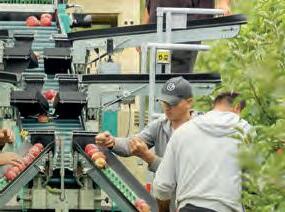
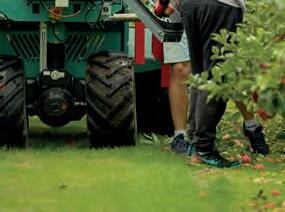
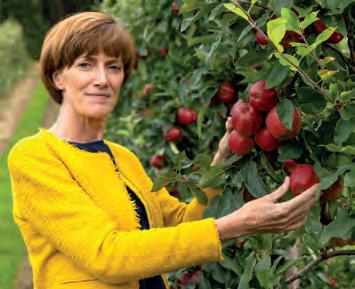
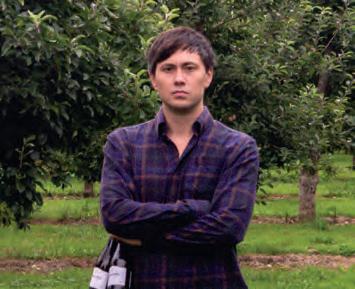
than average, but actually we are generally pretty much on track for the usual supermarket speci cations.”
One challenge, however, is a small amount of russeting. “Our growers are working closely with retailers to ensure that these fruits are not wasted and that they are sold in the main packs and not in low value packs that jeopardise grower returns. We are also using our social media channels to educate shoppers that a few russet marks don’t a ect the great eating experience of British apples,” she concluded.
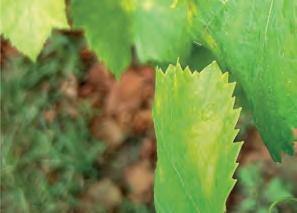
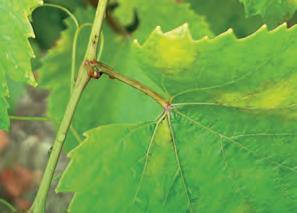
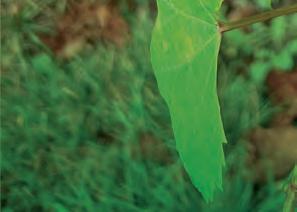
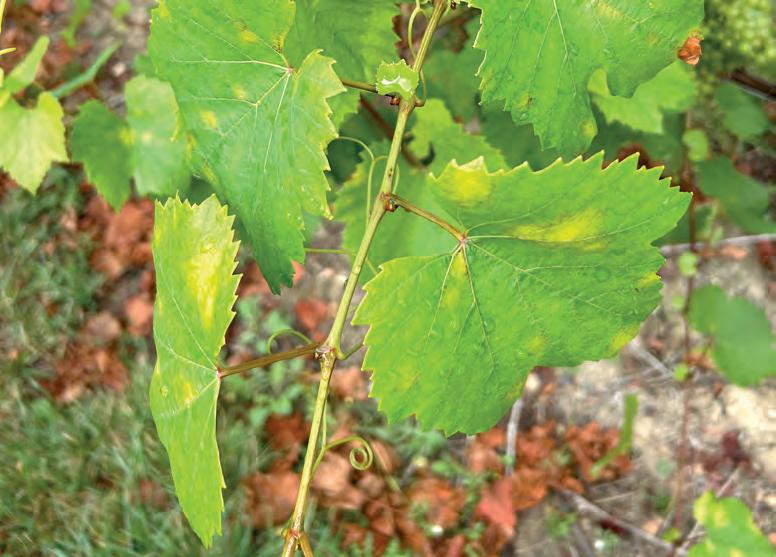
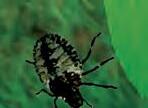





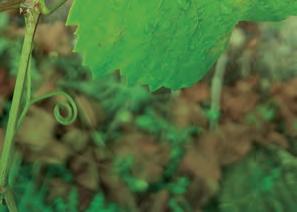

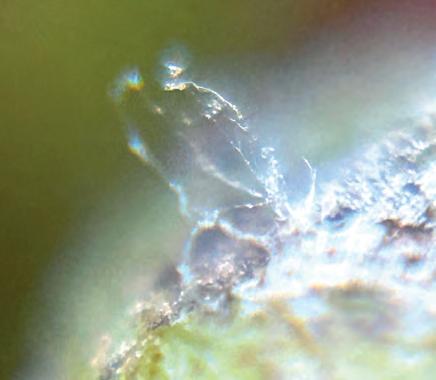
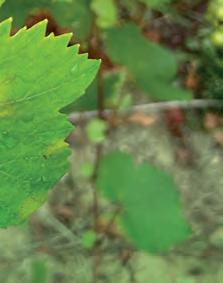



In the rst of a new series of topical updates, Agrovista fruit and vines agronomist Fokion Chatziavgerinos examines the importance of post-harvest pest and disease management to ensure the long-term vitality of top fruit and grapevines.
After harvest, plants remain susceptible to pests and diseases that can a ect their health and next season’s production. Applying nutrition after harvest while leaves are present ensures e cient nutrient absorption and translocation to roots and storage tissues.
This aids active photosynthesis that supports energy production, improving recovery after fruiting and preparing trees and vines for the following year, by maximising nutrient uptake and promoting stronger growth.
Top and stone fruit
Where there was scab presence during the growing season, at least one application of a protectant fungicide, such as Delan Pro, dithianon or Captan, can reduce the risk of scab inoculum build-up in the following season.
Fungicides with curative activity should be avoided during leaf-fall as scab is going through its sexual phase, producing pseudothecia, so resistant strains may develop when DNA recombines. In orchards with low canker risk, urea can be applied to reduce scab inoculum. To comply with Red Tractor requirements, inhibited/methylene urea can be used.
During autumn leaf-fall the risk of apple canker is high, especially in wet autumns, which can lead to a high occurrence of shoot dieback the following season. In apple and pear orchards where canker was an issue, post-harvest fungicide applications are required and should be timed with Agrovista’s Fruit Insight Neonectria canker model. When the risk is highest, tebuconazole can be applied once per season; elsewhere Captan applications provide adequate protection. In orchards where codling presence was high and crop damage was noted, autumn and spring applications of Koppert’s Capirel nematodes will reduce the population carryover by


60–80% for the following season and reduce the risk for the next crop.
Forest bug populations also need monitoring at this time. Forest bugs overwinter as second instar nymphs and during spring they start feeding on young buds, owers and fruits.
Pear orchards with a history of pear bud weevil should be monitored post-harvest and insecticide application might be required, based on pressure.
Pear sucker populations require assessment between harvest and leaf fall. If populations of nymphs are high, application of Flipper or applications of EpsoTop with Roller, an organosilicone surfactant, can help contain the negative e ect of honeydew.
Phosphite application on stone fruit will enhance the defence mechanisms of the trees, reducing their susceptibility to bacterial canker.
Proper nutrition between harvest and leaf-fall will have a positive impact on next season’s growth by fortifying the formation of new buds, promoting pollen tube growth and fruit set development. Nitrogen and potassium support early growth in the next season. Phosphorus promotes optimal bud development, early root establishment, and new tissue growth for the following spring. Calcium strengthens the tree tissue and ensures continued photosynthetic activity, increasing the reserves for dormancy.
Top and stone fruit growers can bene t from two applications of Agrovista 16–8–2 foliar feed plus Agrovista Ca at 14-day intervals. In addition, ground application of calcium nitrate to Cox, Bramley, Egremont Russet and Braeburn, as well as ammonium nitrate on heavy-cropping dessert varieties (>50t/ha) such as Gala are recommended.

Downy mildew sporangiophores
Downy mildew on vines



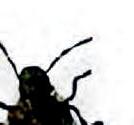

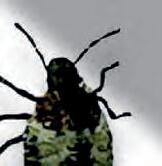

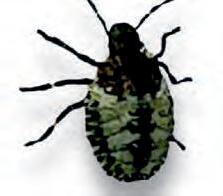
(amount should be related to crop load and age of the trees).
In vineyards where adequate disease control was carried out over the growing season, little action is required post-harvest. Conversely, insu cient in-season control combined with a wet autumn may necessitate post-harvest treatments to reduce carryover. For many vine growers, 2024 has been a challenging year in terms of downy mildew events due to wet conditions, which has clearly demonstrated the value of our Fruit Insight downy mildew model.
Copper application is recommended immediately after harvest, to target downy mildew sporangiospores on the leaves, when the conditions are still mild and before thick-walled overwintering oospores form.
Nutrition-wise, a balanced post-harvest fertilisation programme, combined with proper irrigation and soil health management, helps replenish reserves, support root development and ensure strong bud formation for the following growing season.
Loss of foliage due to downy mildew will have an impact on photosynthesis and, in turn, carbohydrate reserves, which provide the energy required for absorbing minerals.
Nitrogen applications can assist with maintaining leaf function, while potassium and phosphorus aid root health and improve the vine’s resilience to environmental stresses. Potassium also plays a key role in sugar transport and is important for future fruit development. Application of zinc and boron ensure healthy vines and optimal grape production in the next season.



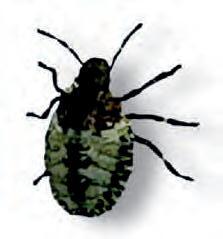

Similarly, on stone fruit crops, application of calcium and ammonium nitrate is recommended Bramley, Egremont Russet and Braeburn, as

Fokion Chatziavgerinos joined Agrovista’s highly regarded team of fruit specialists in 2021, advising on tree fruit and vines across the south of England and Wales. Key interests include integrated pest management, plant pathology, fruit tree nutrition and fruit crop physiology.
From vineyard establishment through to post-harvest management, our dedicated agronomists are able to ensure that you maximise your yields of top quality fruit, whilst satisfying the ever more complex demands of legislation, protocols and consumer expectation. Contact us for more information.

enquiries@agrovista.co.uk agrovista.co.uk/fruit
@AgrovistaUK
@AgrovistaUK
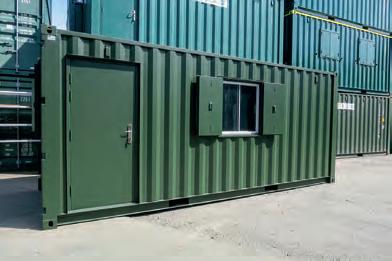
“Working closely with our growers, we use integrated pest management to optimise fruit quality and yield.”
Penny Meadmore Viticultural Consultant for Agrovista UK
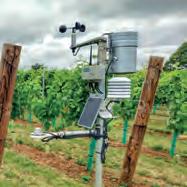
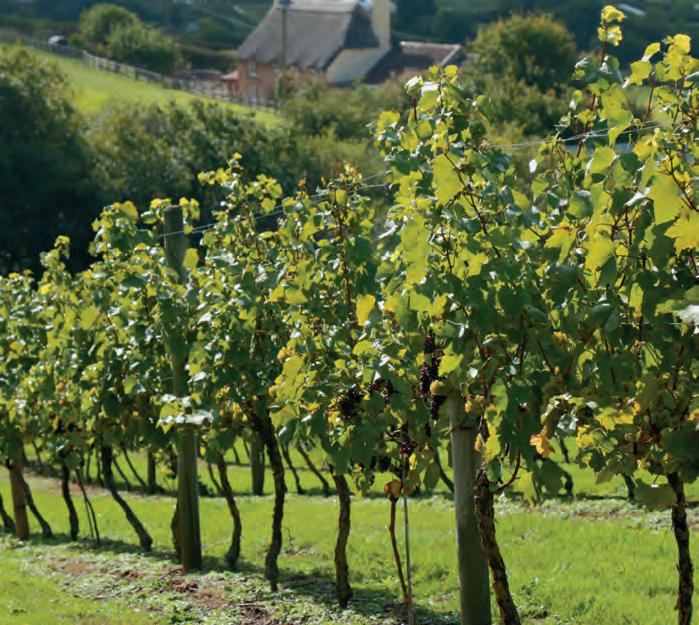





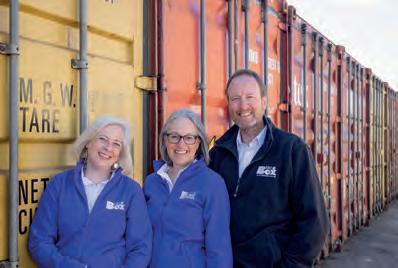
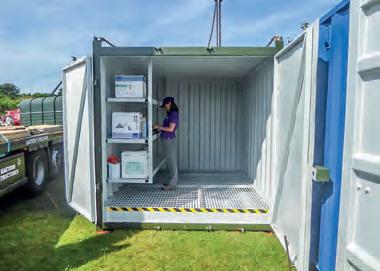
Crop
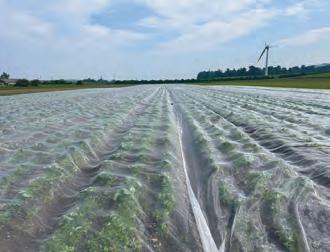
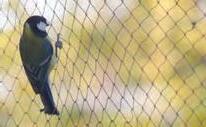
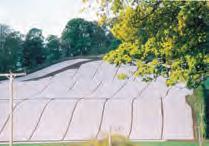




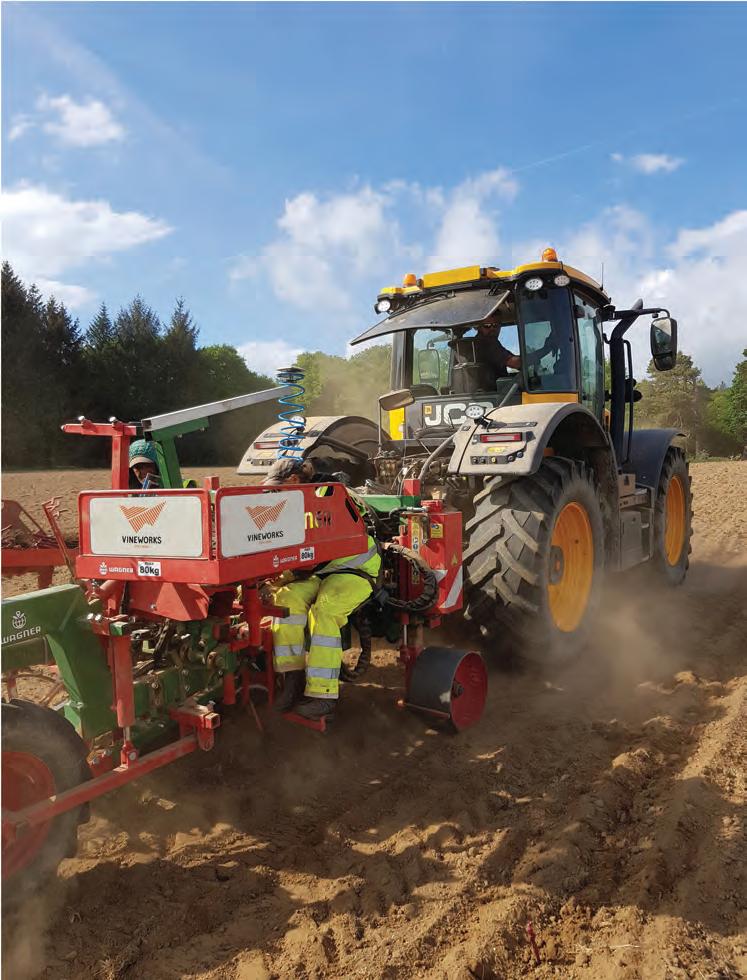

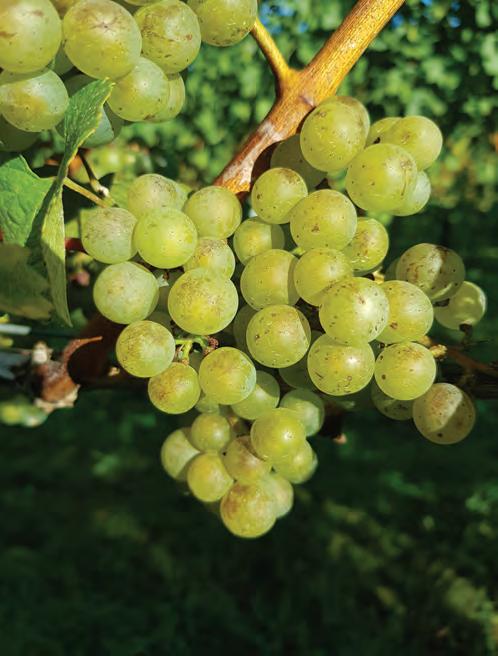































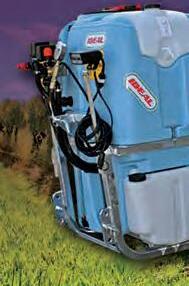

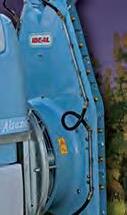





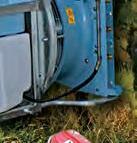
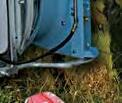



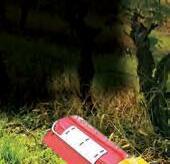
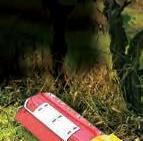
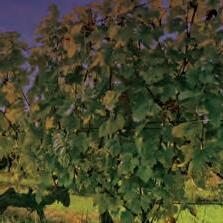









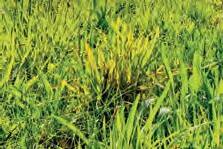

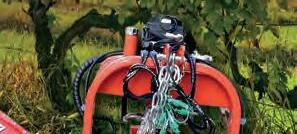
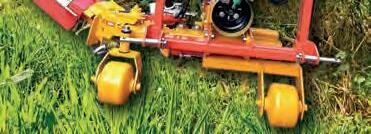








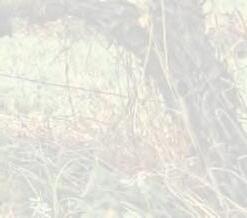



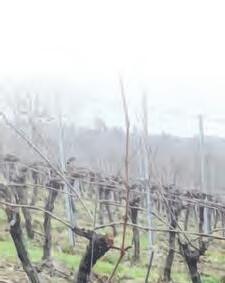






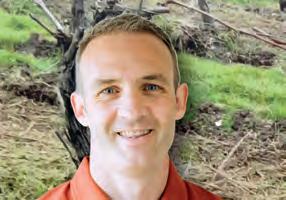




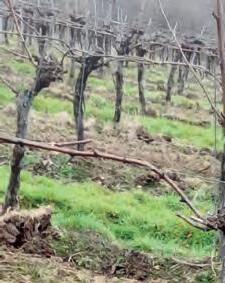
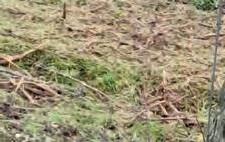
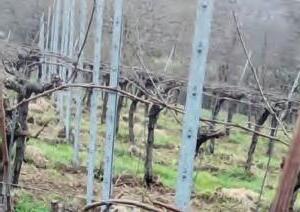
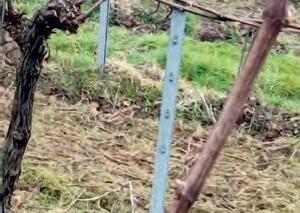
VineWorks business director, Chris Buckley, offers advice for pruning techniques to mitigate the risk of frost damage.
Spring frosts have become a growing concern for UK grape growers. Despite centuries of viticulture, protecting young vines from frost remains a critical challenge.
Conventional frost protection methods like gas burners, candles, large fans, and sprinklers remain useful, and innovations like Frolight’s infrared frost protection system provide interesting new solutions. However, both approaches should be supported by pruning techniques that help vines safeguard themselves against frost damage.
Frost can damage young grapevine tissue in two primary ways: By causing ice crystals that burst cell walls, or by triggering osmotic dehydration that weakens cell structure. Dormant buds, shielded by protective outer layers, are far more resistant to frost than the tender tissues of emerging shoots. Thus, delaying the development of the buds most crucial for the upcoming season until the frost risk has passed is essential.
Given a vine’s natural tendency toward apical dominance – where the buds furthest from the trunk are more likely to break first – timing your pruning can make a significant difference. While late pruning could theoretically delay bud break, it is often impractical on a large scale. However, two effective techniques – double pruning and sacrificial canes – offer viable solutions.
This method is particularly e ective for spurpruned vines and can even be mechanised for the initial pruning. The process involves cutting all shoots back to 30–45cm above the desired spur height during winter. Later, closer to the end of the frost risk period, a skilled pruning team can conduct the nal spur and bud selections. A similar technique can be applied to guyotpruned vines by leaving canes and spurs longer than necessary and then trimming them back later. However, managing very long canes can be tricky when buds are developing and leaves are emerging, as there is a large risk of damaging the buds when tying them down. It is best to slow this procedure down considerably to avoid damage.
Originally used to manage vine vigour, this technique also helps delay bud break on canes already tied down, thereby reducing frost damage. Start by selecting and trimming your primary canes, then tie them down as usual. Leave them slightly longer than needed as an added precaution. Next, select your spurs, leaving them as extra-long upright canes – these will serve as your sacri cial canes. No need to trim these, as they are intended to be sacri ced after the frost risk has passed.
Once the frost season is over, assess your vines for damage. If the buds were successfully
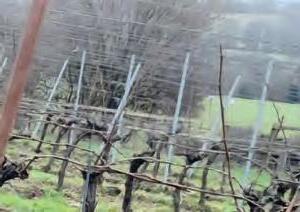
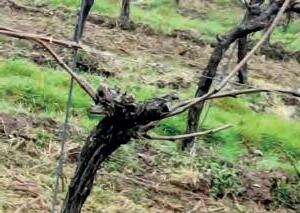
protected, cut back the sacri cial canes to the standard spur length and remove the excess growth. If some buds were damaged, remember that you left more buds than necessary on the vine. Trim the sacri cial canes to the desired length, ensuring enough healthy buds remain to maintain vine balance and support a strong crop. A double fruiting wire (Pendelbogen) system can help make tying down these extra canes easier without damaging the new shoots.
Frost often a ects speci c areas, such as low-lying pockets or along certain hedgerows. By keeping detailed records of frost damage in your vineyard, and monitoring using strategically placed weather sensors, you can target your pruning strategies – whether double pruning or using sacri cial canes – on the areas most prone to frost.
These updated techniques o er an adaptive approach to vineyard management, helping to mitigate the risks associated with unpredictable spring frosts.




VineWorks has been establishing and supporting UK vineyards since 2006. With over 4.5 million vines planted, 300 vineyards established and thousands of tonnes of grapes hand-harvested, our expertise comes from experience. Visit www.vine-works.com for more information and to get in touch.
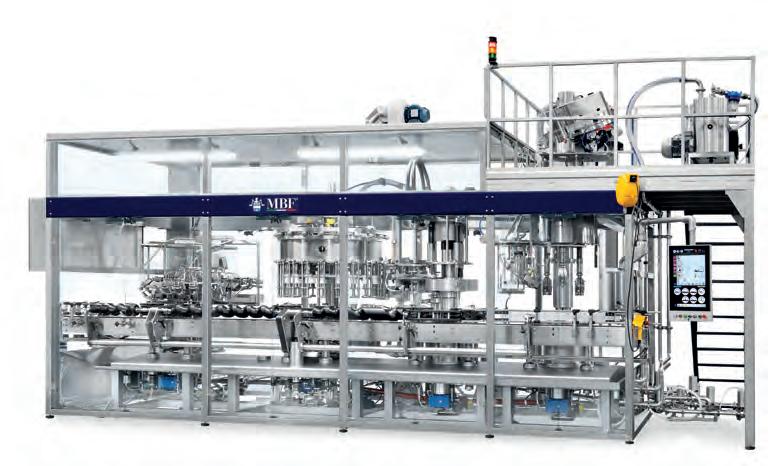
As the only three-time winner of the IWSC English Wine Producer of the Year, Gusbourne’s wine producing team have exacting standards at every stage of the wine making process, and accordingly require the highest standards and best technology to ensure careful handling of the product during the delicate process of lling.
Gusbourne and Evolution BPS rst partnered in 2022, when Evolution installed and commissioned a Robino & Galandrino Capsulator and a P.E. Labelling Machine. When producing a premium product, ensuring a premium nish to the bottle dressing is vital; as such, the expertise and credibility of Evolution and its partners in premium drinks sectors was an important element of the selection process for Gusbourne.
Specialising in all types of secondary sealing, R&G supplies many of the most important wine bottling facilities in the world. The R&G Capsulator installed at Gusbourne is predisposed for the orientation and
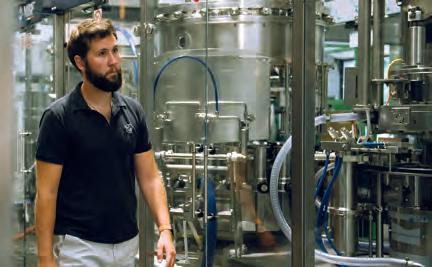
prepleating of capsules, handling capsules for still and sparkling products and also combines a cork and/or wirehood presence detector.
The P.E. Labelling machine is equipped with three labelling stations for the self-adhesive application of neck label, partial or wrap around front/body label and back label.
Evolution’s UK-based team of engineers worked closely with Gusbourne to install and commission the machines, remaining lineside until the customer became con dent with the technology, and beyond via the customer service team at Evolution.
This successful project ensured Evolution was considered when Gusbourne sought to expand its line with the inclusion of in-house lling technology.
Filling expertise from MBF
due to excessive introduction of oxygen, thereby invalidating all previous interventions to minimise oxidation.
Extensive research by MBF has led to the development of a system for managing, measuring and controlling oxygen pick up. The methodology facilitates accurate determination of the increase of oxygen in the wines due to the lling phase, quantifying the performance of the ller.
Determining the optimal conditions for atmospheric inertisation inside the bottle before lling, relative to bottle size, reduces the contact of wine with oxygen. MBF has de ned the optimal conditions for atmospheric inertisation inside the bottle before lling. The innovative system for inert gas injection creates perfect intertia of the head space of the bottle while avoiding loss of pressure. The MBF patented system facilitates minimum nitrogen consumption and optimal injection of inert gas in the bottle independent of bottling speed.
Since planting its rst vines in 2004, Gusbourne has pursued a vision of crafting the nest vintage wines, using only grapes grown in its vineyards.
Gusbourne founder, Andrew Weeber, encapsulates the company’s dedication to excellence: “Making exceptional wine takes craftsmanship, respect for nature... And uncompromising attention to detail.” This re ects the winery’s commitment to producing outstanding products for its customers. It is in line with this vision that Gusbourne has decided to expand its production facility bringing the important stage of lling in house with the addition of a new MBF Synchro ll Monoblock machine, fully installed and commissioned by Evolution Bottling & Packaging Solutions Ltd’s UK-based engineering team.

MBF specialises in lling premium and delicate products, minimising oxygen pick up during the lling process, ensuring the highest standards of product integrity are maintained. MBF understands how critical bottling is in the lifecycle of wine and its patented technology ensures that it is managed with competence and accuracy. MBF has a particular understanding of the importance of oxygen control being key to achieving the correct oenological and qualitative balance of the product. Each wine has its own personality, therefore it is important it is treated with extreme care in all stages in order to maintain its quality and organoleptic characteristics. Precise attention must be given to the delicate stage of bottling which if mishandled can a ect the integrity of the product
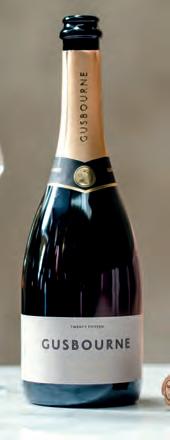
Filling installation at Gusbourne
Evolution worked closely with the Gusbourne winery team to help them de ne their needs and to ensure that the solution provided was su ciently future-proofed to meet the needs of the winery both now and moving forward. The technologically advanced Syncho ll Monoblock incorporates rinser, ller, capper, corker and additional features facilitate bidule insertion, crown capper and vinoloc, meeting the requirements for traditional method sparkling, and still wines.

Operating at speeds of up to 4,500 bottles per hour, the advanced machinery supplied by Evolution ensures precise ll levels, optimal oxidation management, and superior cleaning processes, all designed to preserve product integrity with minimal maintenance.
Alastair Benham, head of wine operations at Gusbourne, expressed his enthusiasm for the partnership: “This has been an exciting project to collaborate on with Evolution and MBF as Gusbourne continues its commitment to crafting premium English wines. A big thank you to everyone at Evolution, MBF, and Gusbourne for their hard work in bringing this project to life!”
Business development manager at Evolution, Dylan Bradshaw added : “Evolution are thrilled to have partnered with Gusbourne on this project and we look forward to continuing to work together, strengthening this successful collaboration in the future.”



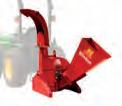
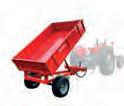


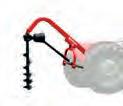







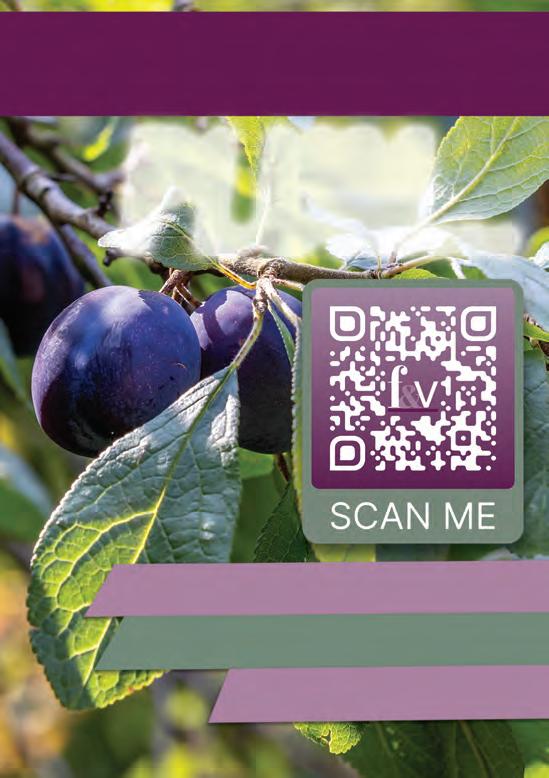

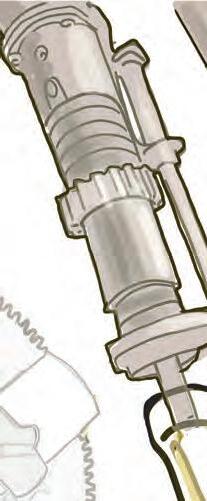
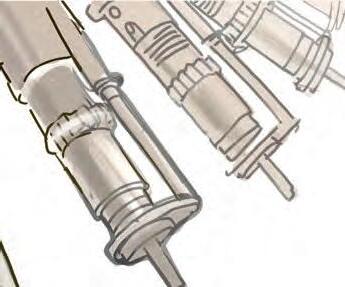
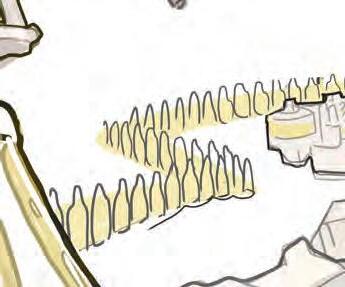
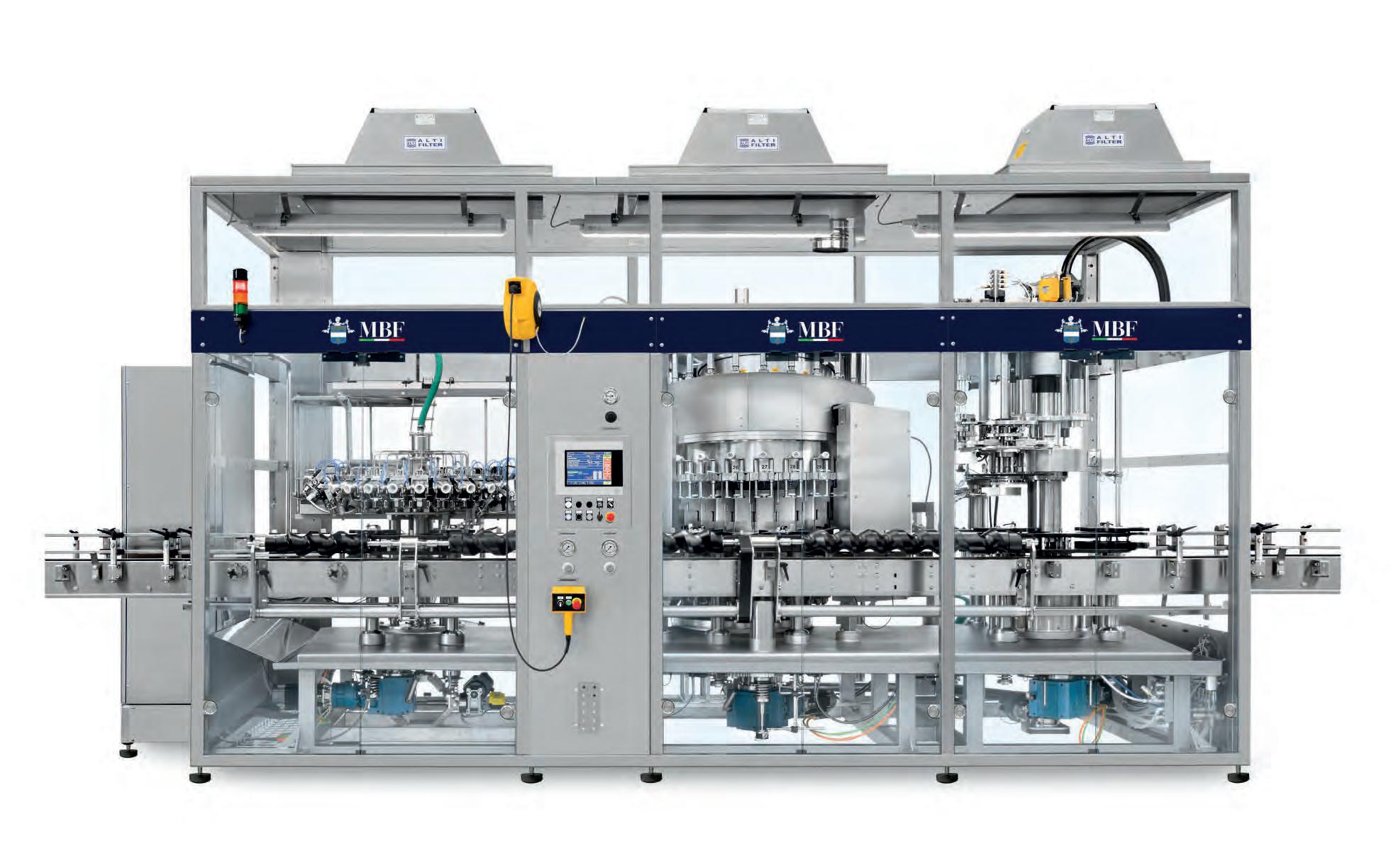


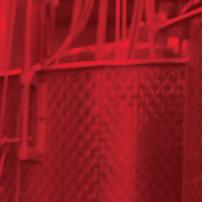

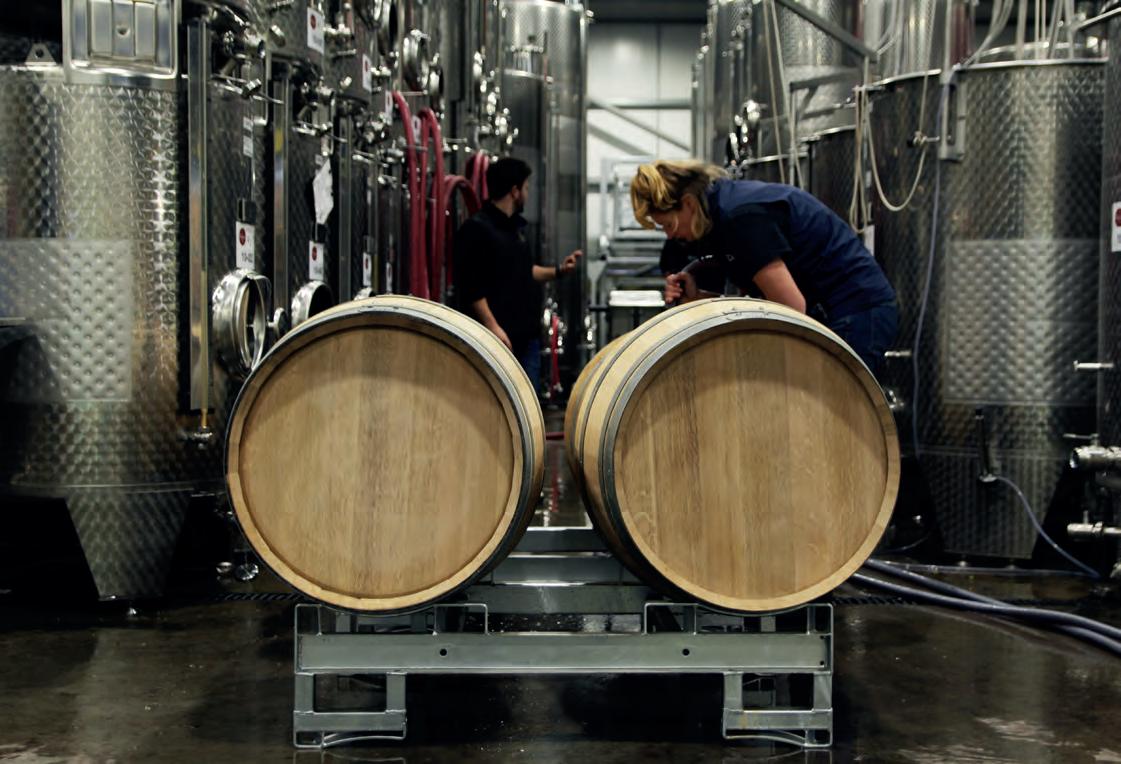
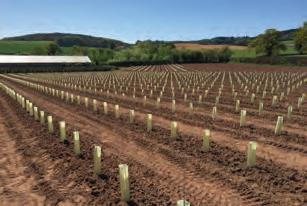
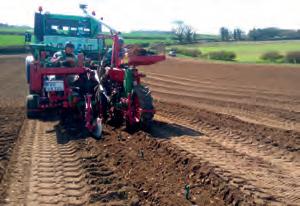

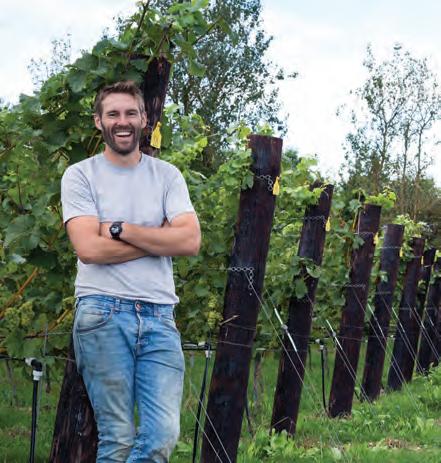
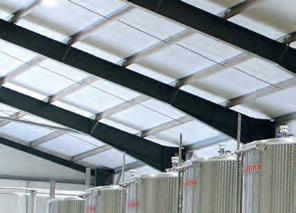
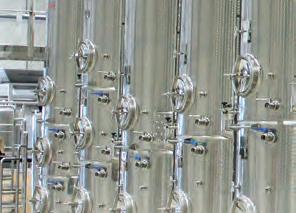
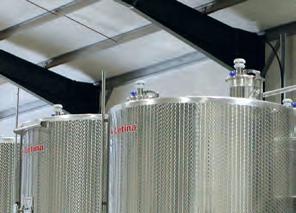
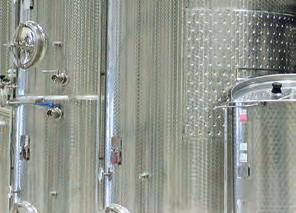

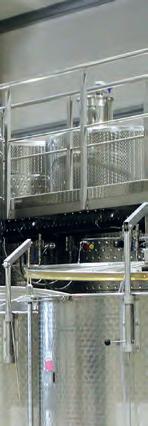
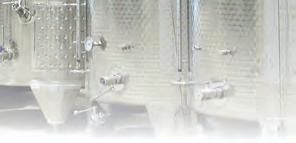
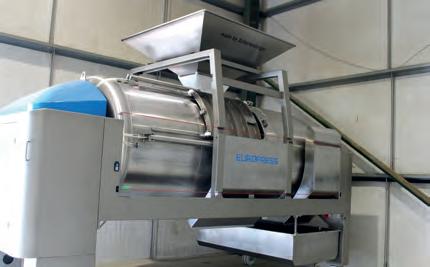
Head winemaker Nick Lane
De ned Wine opened a new winery in Suffolk in time for the 2024 harvest, in recognition of rising demand for local winemaking facilities in East Anglia. Deputy editor Sarah Kidby attended the opening.
With the UK’s climate increasingly favouring viticulture, and studies showing East Anglia is one of the best areas of the country for growing grapes, a rising number of vineyards are popping up in the region. But with very few contract winemaking facilities locally, getting grapes to a winery has required some growers to drive south of the Thames.
Recognising an opportunity, contract winemaker De ned Wine, which set up in Kent in 2019, began looking for a site in East Anglia. Head winemaker Nick Lane said easy access for vineyards was a key requirement for the new site, and the chosen location – Holton Hall Farm in Holton St Mary, Su olk – is just o the A12. The building was previously used for storing potatoes or farm machinery, and is now being rented from the farmer.
De ned Wine is a ‘contract only’ winery that makes sparkling and still wines (white, red, rosé and orange) for vineyards without a winery who want their own label. The business has expanded signi cantly in the past few years and in that time, it has been making wine for a growing number of East Anglian vineyards.
The new winery is already proving popular and became operational the week after the launch on 6th September. De ned Wine CEO Henry Sugden said it’s already well booked up, though demand will ultimately depend on the harvest – a warmer start to September would have been preferable.
Well kitted out
As part of De ned Wine’s aim of supporting the industry by producing consistently good wine, having quality kit is important, Henry said. The stateof-the-art winery boasts brand new presses, a well kitted-out laboratory and numerous tanks of various sizes (to cater for di erent batch sizes), most of which were supplied and installed by Core Equipment, as was the fermentation control system. At the time of
the opening, they were awaiting fermentation tanks for red wine, as well as more barrels, which arrived the week after the launch event.
Nick Lane, who spent six harvests in Champagne before joining De ned Wine, will split his time between the Kent and Su olk facilities. He gave a tour of the new winery, starting with two brand new Scharfenberger presses – a 4-tonne and 2.5-tonne to cater for di erent batch sizes coming in. Some of the tanks came from De ned Wine’s site in East Kent, some were brand new and others were sourced from Chilford Hall Vineyard. The building allows space for expansion later on, according to demand. Other equipment includes a Scharfenberger Euroselect Destemmer for gently separating grapes from stems for red wine production; and a Puleo peristaltic pump. Keeping the same brands and suppliers is important for consistency across the sites, Nick explained.
The Su olk site will be sta ed by winemaker Nora Leitz, along with cellar hands Greg and Toby and three additional sta for harvest. Nora joined De ned Wine a year ago from New Zealand, where she worked at a large-scale winery. She said she’s excited to be working with a range of di erent grape varieties including PiWis –and the eagerness of English growers to try di erent varieties makes working at a UK winery particularly interesting.
A local wine industry
Commenting on the new winery, Charlotte DavittMills, co-owner of Shotley Vineyard in Su olk, said: “We are thrilled to have a state-of-the-art winery practically on our doorstep. The close proximity of the new winery will undoubtedly make the logistics of harvest much easier for us.
“We will be able to say our wines are both grown and vini ed in Su olk, which is important to
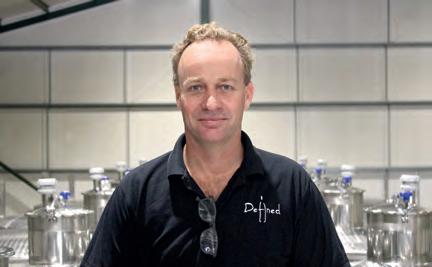
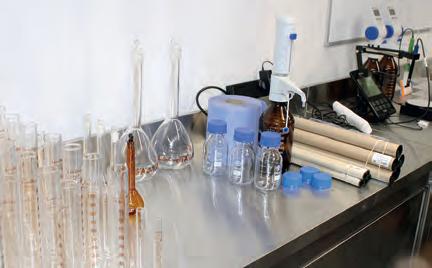
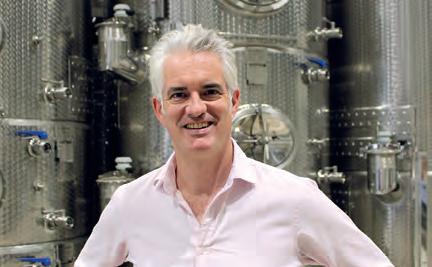
Cartlidge, MP for South Suffolk, said
our customers as there’s a growing interest in the provenance of food and drink. In a wider sense it re ects the growth of the industry and the increase in demand for a contract winery in this area.”
Meanwhile James Cartlidge, MP for South Su olk, said it o ers a chance to put East Anglia on the map and establish an East Anglian brand for wine. “I think it’s an incredibly exciting opportunity, for farmers and existing wine businesses who want to grow. I’ll be supporting it as much as possible,” he said, extolling the virtue of being able to “ nish the job locally and build the story of a proper local wine industry”.
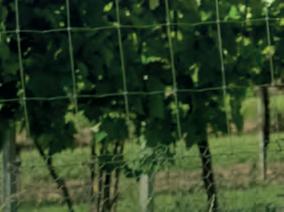
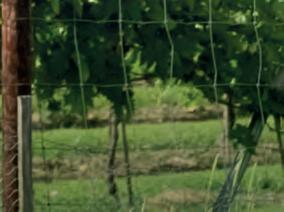
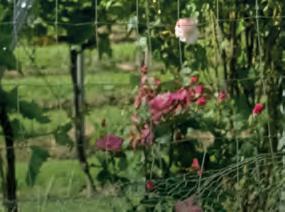
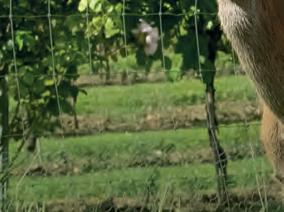
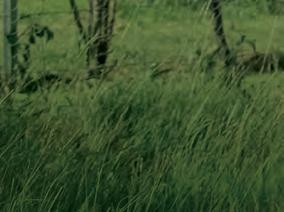
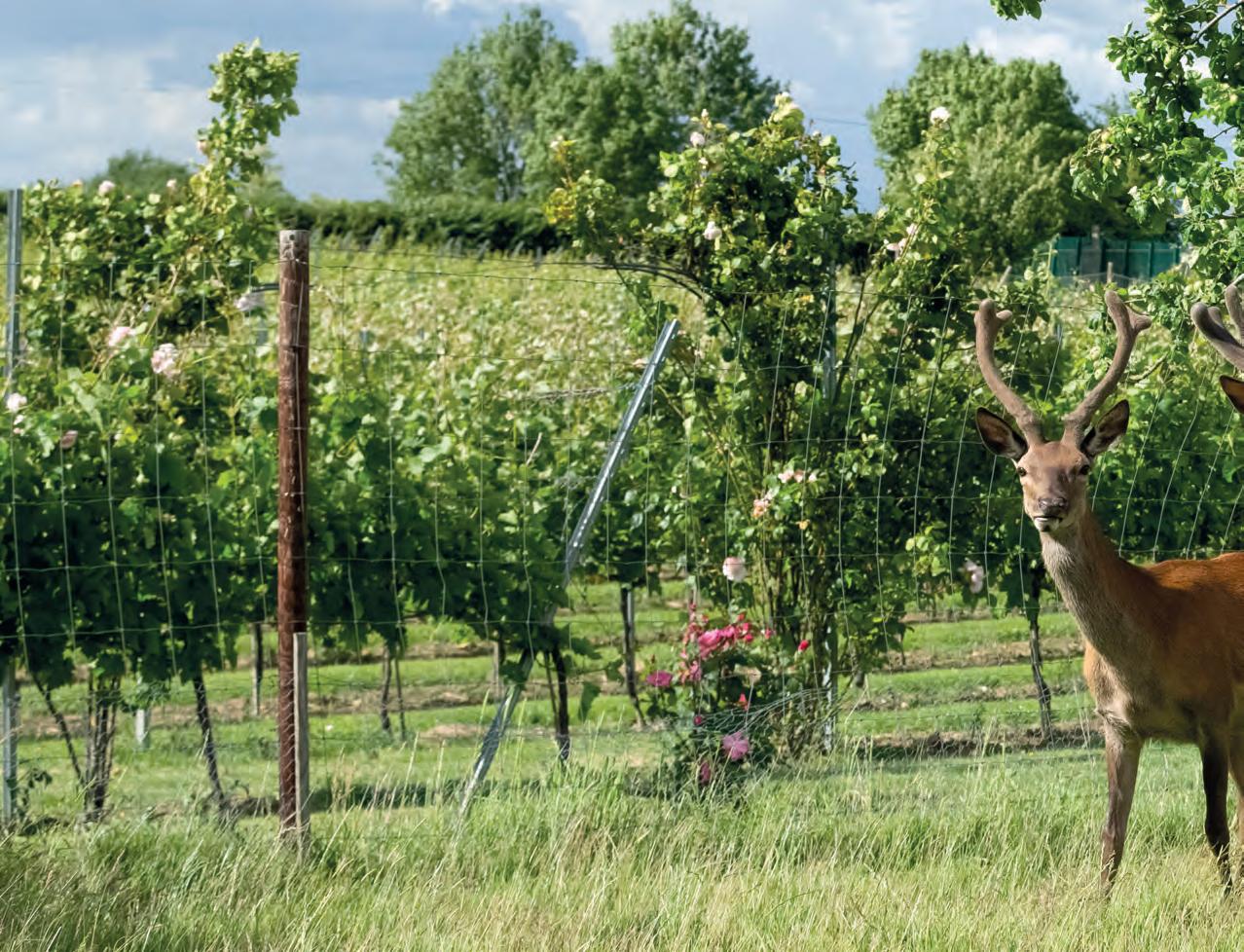
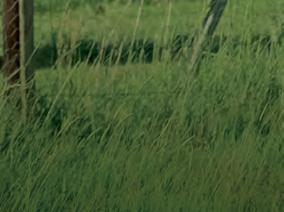
Deer Park Wines is one of a number of farm diversi cations on the 500ha Woollas Hall farm situated on the slopes of Bredon Hill in South Worcestershire – an outlier of the Cotswold escarpment, while the vineyards are in the Cotswold AONB.
Run by Mark Steele and his wife Caron, the traditional mixed organic farm has been in the family for three generations, encompassing cattle, sheep, fallow deer, and crops such as oats, as well as woodland and natural grass meadows.
Mark comes from a family with a long history of
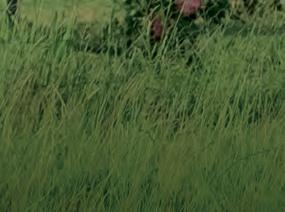
farming, from mainstream agriculture, vegetables and dairy to its current-day vineyard and other diversi cations. In the early 1990s, Mark set up a business selling fallow venison; in 2000, old redundant farm buildings were converted into o ces and a conference centre, and from there the business expanded into a thriving wedding venue with holiday cottages. The farm was converted to organic in 2007.
Having run a couple of wine clubs, which involved trips abroad, some of Mark’s friends encouraged him to have a go at setting his own
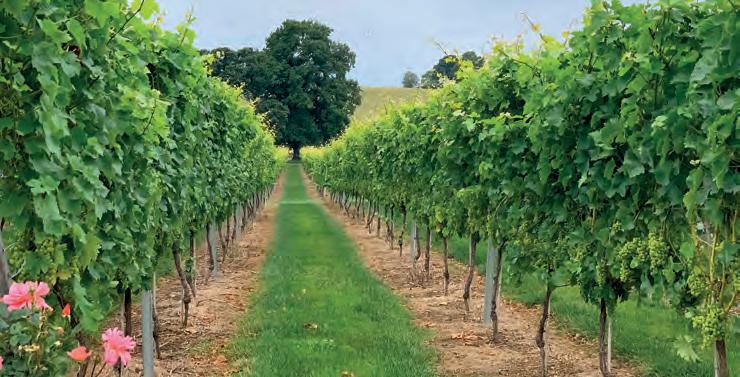
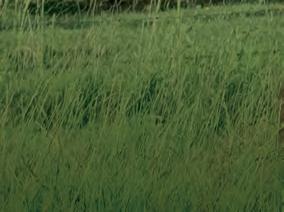
Based in the Cotswolds, the family behind Deer Park Wines are passionate about producing award-winning English wines, with a commitment to quality and sustainability. Rachel Hicks reports.
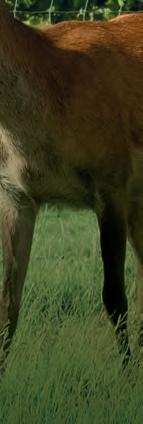
vineyard up – the changing climate, innovations in wine making and an accountant’s positive opinion all nally convinced him to take the plunge.
The vines that exclusively supply Deer Park’s wines now number 5,000 and are split between four plots of land on Bredon Hill.
The rst, and largest plot at 2ha, with 4,000 vines, sits close to the farm buildings, on loam overlying limestone. Called Stag Oak, this planting is situated in a natural sun trap only 50m above sea level, and being sheltered from the wind o ers the grapes the “perfect” terroir.
“Stag Oak was planted in 2016 on an old orchard site cleared in the 1960s, which was arable land until 2000 and grassland thereafter, organic from 2007,” explained Mark.
“A further 1,300 vines were planted in 2019 on a south-facing grassland parcel – called Manor, this vineyard includes 650 Chardonnay vines and 650 Pinot Noir; another 1,350 vines of Bacchus, Pinot Meunier, Pinot Noir and Chardonnay were planted in an arable eld now known as Potters in 2021, while the fourth vineyard, Woodhenge, was planted in 2024, with 350 Solaris and 350 Cabernet Cortis vines. All vines were hand planted, with Mark commenting that he was glad he was a bit younger then!
Together, the four vineyards amount to around 4ha under vine. They have modern drainage systems as well as being on sloped land, and were soil tested and subsoiled prior to planting. In fact, the sites were chosen as much for the soil type as for the aspect.
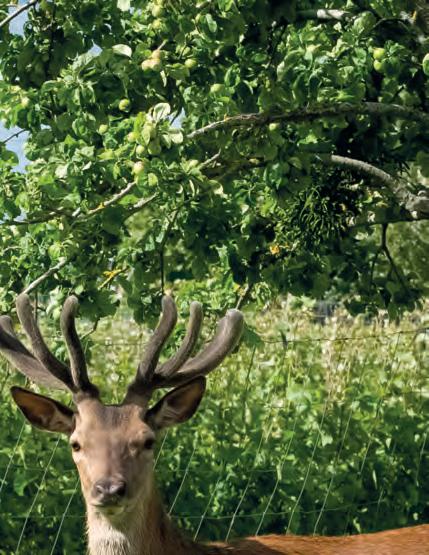
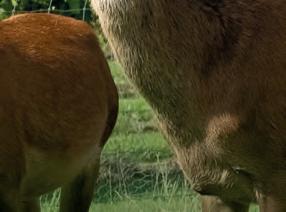
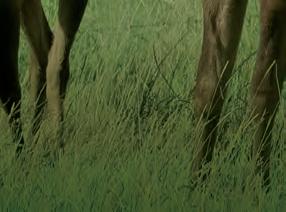

All the vineyards have open aspects, which vary from due south facing through south westerly, to gentle northerly – but are sheltered from damaging winds by the natural landscape. At 52–64m above sea level, the river Severn is only six miles away and the river Avon runs along the bottom of the farm less than half a mile from the vineyards, creating a microclimate. The vale of Pershore/Evesham has long been famous for its soft fruit production, apples and plums and bene ts from the warming in uence of the rivers.
While the farm itself is organic, the vineyards are not – although Mark doesn’t use any insecticides, relying instead on natural pest control.
According to Mark: “Each year throws up its own challenges – no two are the same, and the one thing that farming teaches you is that you’ll never get everything right; which is also something that my wife constantly reminds me!
“Last year we saw our rst cases of the vinegar fruit y in our Pinot Noir, which required more diligence at harvest time.
“Despite the droughts, 2022 was a good year for us; our predominantly clay subsoil provides enough moisture so yields were not a ected, we kept the wasps at bay and the harvest was good, although not as early as we had expected. Perhaps the extreme weather caused the vines to shut down during the intense periods of heat.”
When discussing this year, Mark comments that 2024 seemed to be following a similar pattern to 2023 – with a promising start fading away into too much cloud, rain and average-to-low temperatures.
“2023 produced excessive foliage growth, so canopy management was key. Targeted leaf stripping and several passes of our vine trimmer kept the canopy open enough to allow good penetration and coverage of plant protection products; in contrast, our vine trimmer was only used once in 2022 and we managed to reduce our fungicide applications by over 15% that year, too.”
In 2023, the productive vines yielded 23 tonnes, which Mark says was a bit too much. “This year we decided to restrict production to about 17t by green harvesting,” he explains.
However, as it turns out, this year’s harvest has been di cult to say the least – severe mildew took the entire crop of Reichensteiner, and reduced the yield of Bacchus by 75%. Across the vineyard, yields were down by an average of 55%. “Once the crop was infected, it seemed almost impossible to control the infection despite intensive canopy management – our labour and chemical costs were up by almost 25%. But the Seyval was surprisingly clean and yielded well and our Pinot and Chardonnay faired relatively well, coming out of the press at 77Oe and 11.4ta and 70Oe and 13.5ta respectively,” Mark shares.
Deer Park is now established enough for Mark to manage the vineyards without a regular agronomist, with Matt Greep from Agrii visiting around twice a year – however, Mark says Matt is always available at the end of the phone if needed.
Mildew, botrytis, wasps and, more recently, vinegar fruit y all pose a challenge to the vineyard team.
“All our vineyards are fully deer-fenced and rabbit-netted to exclude our own deer and the ever-increasing wild population,” explains Mark.
“We have a rigorous fungicide programme that aims to send the cleanest grapes into the press and hence a purer, cleaner wine.
“We are trialling the use of willow chip o the farm as an under-vine mulch to suppress weeds and provide a dry warm semi-re ective surface. Willow bark contains salicylic acid and an aqueous extract of willow bark is used as a fungicide in the EU. The willow bark extract is approved as a 'basic substance' product in the EU and UK for the control of scab, leaf peach curl and powdery mildew on grapes, apples and peach crops, so this might be an additional bene t.
“Wasps are our main pest – damaging bunches and leaving room for infection. We put out nearly 100 wasp traps in July to try and catch early wasps before the nests get too big. We have just started to use Easy Lure traps which catch both wasps and ies, and seem to work really well with their special lure.”
The vines are on VSP/Double Guyot trellising with metal posts throughout. “We have more recently adopted the Italian Simonit & Sirch system of pruning, which aims to promote sap ow to the active growing points by minimising the amount of pruning cuts/wounds and respecting the path of sap ow,” explains Mark. “The system has been di cult to implement on our older vines, but we rmly believe will be highly bene cial in the long term as our vines should stay more productive for longer. We
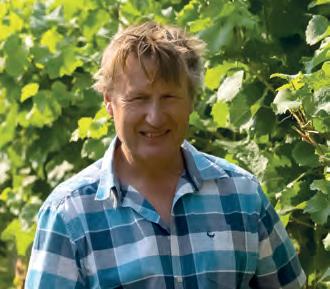
Deer Park Wines
Location: Bredon Hill, South Worcestershire
Total vineyard size: 4ha, split into four separate vineyard areas: Stag Oak, Manor, Potters and Woodhenge
Soil type: Cotswold brash over clay loam
Aspect: Varying from due south facing through south westerly, to gentle northerly – but all are sheltered from damaging winds by the natural landscape
Varieties grown: Solaris, 850 vines; Pinot Noir (burgundy clones), 1,500 vines; Chardonnay, 1,550 vines; Bacchus, 1,250 vines; Seyval Blanc, 950 vines; Reichensteiner, 500 vines; Pinot Meunier, 300 vines; Cabernet Cortis, 350 vines
Rootstock: All rootstock in Stag Oak and Manor is SO4. In Potters and Woodhenge it is Fercal
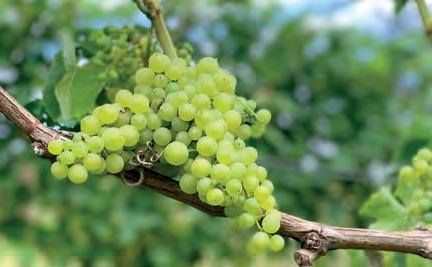
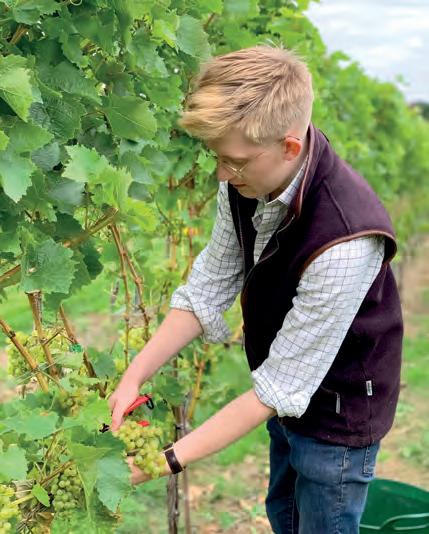
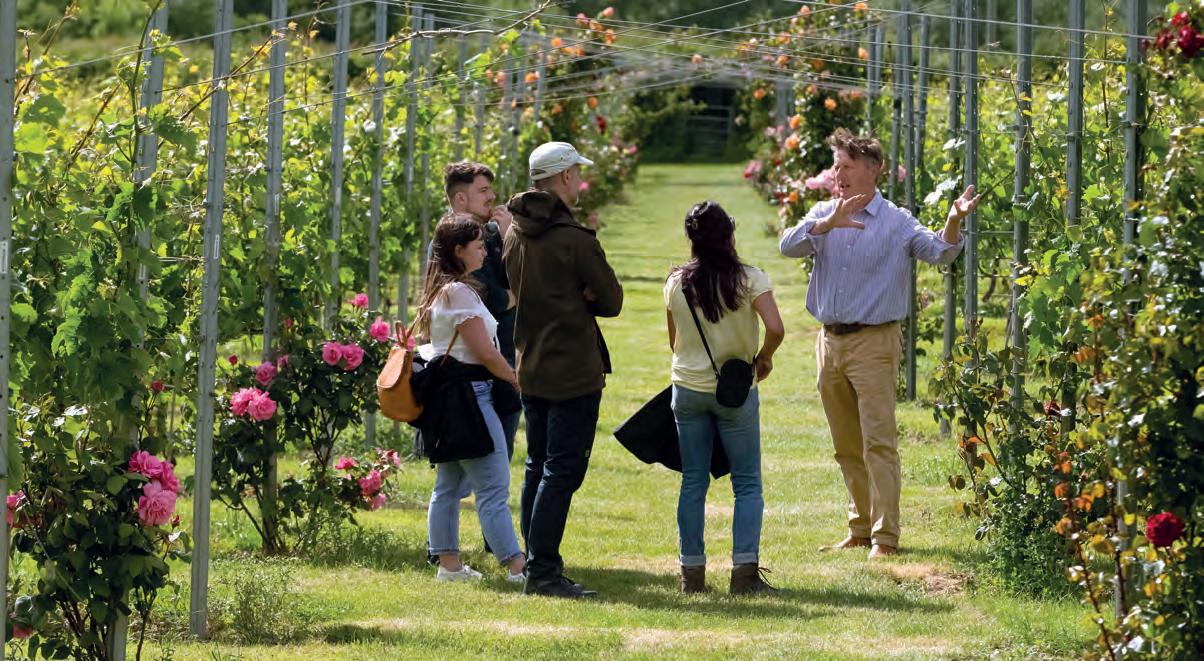
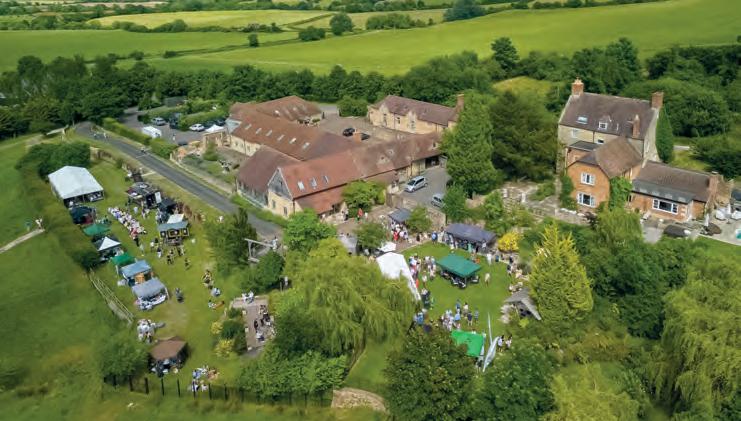
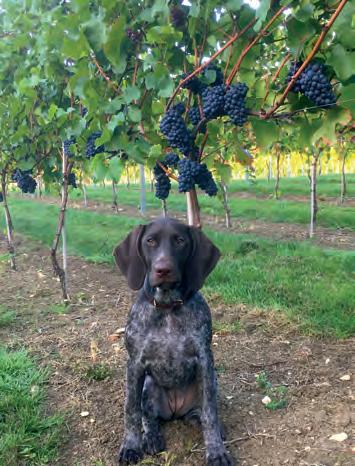
Deer Park's high quality wines have earned a number
also aim to keep a productive canopy by regular trimming and manual leaf stripping of old leaves.”
The site experiences bud burst about a week earlier than most vineyards due to its westerly location and riverine elevation, Mark says. Luckily, frost doesn’t seem to be a problem at Deer Park, with no frost damage at all in 2023 and 2024 and only around 30 buds lost in 2022.
Grapes at Deer Park are hand harvested by groups of friends, who are then treated to a lunch in the vineyard and a going away present of wine.
Deer Park Wines uses local winery Three Choirs to produce its own wine portfolio, which
Mark's hands-on approach sees him host vineyard tours and tastings, which always prove very popular with visitors
Deer Park welcomes a number of events throughout the year, including its annual Wine Fayre which always attracts a crowd
includes still Solaris, Bacchus, Chardonnay, Pinot Noir, a Deer Park rosé (90% Pinot Noir and 10% Chardonnay), Stag Oak (60% Chardonnay, 40% Solaris), Special Reserve (80% Reichensteiner, 20% Seyval Blanc), a Classic Cuvée Sparkling (60% Chardonnay, 40% Seyval) and the Deer Park Rosé Cuvée Sparkling (40% Pinot Noir/Meunier, 60% Seyval).
Cabernet Cortis, which is a cross between Solaris and Cabernet Sauvignon, is the most recent variety to be planted, and according to Mark: “If we get the best of both varieties, it could be very interesting indeed!”


Sparkling wines are made using the traditional method, and the majority of wine sales are conducted through vineyard tours and online sales, with other sales through wildlife tours, its annual Wine Fayre and through Deer Park’s own wedding venue business and overnight accommodation.

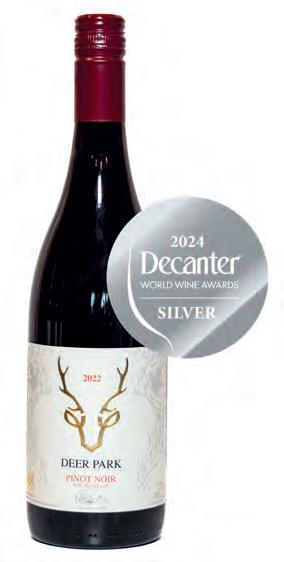
Some trade sales are made to local pubs and restaurants, and the vineyard is extending its cellar door sales even further via the introduction of themed nights this winter.
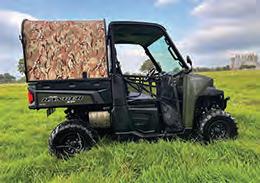
POLARIS Ranger 900 XP, only 35hrs, 369mls from new, perfect condition, petrol 68hp, electric p/steering, detachable roof c/w lining, removable f/& r/window, 2 sets keys, c/w aluminium canopy from TFM Engineering Ltd with 2 doors. £10,900+VAT ono. C Stummer Tel 07572 785159 (Lancashire)
HONDA 520 quad bike, 2019. £4,500. K Pugh Tel 07977 912970/01694 771258 (Shropshire)
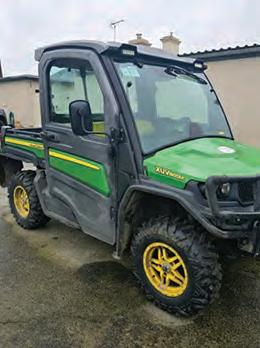
JOHN Deere Gator XUV 865M, 2018, pristine condition throughout, new bear claw tyres, recently serviced, fully road legal, 50km, f/w electric tipping box, radio, in cab heater, LED lights & more, 28bhp, 2200hrs. £9,650 ono. J Jones Tel 07340 083030 (Cheshire)
BUILDINGS & MATERIALS
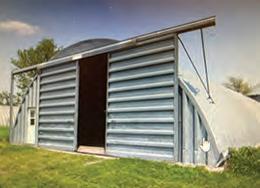
GALVANISED building, approx 5m by 30m, dismantled on pallets, collection only Essex. £2,500 ono. I Fowler Tel 07885 332037 (Essex)

BOX profile sheeting, as new, still in packs 8200mm long, 190 sheets. K Ollett Tel 07753 859881 (Suffolk)
HITACHI Zasis 85, 2018, 3800hrs, steel tracks, hydraulic hitch, fully serviced, one driver, very good order. £35,750+VAT. I Kiddy Tel 07836 239701 (Suffolk)
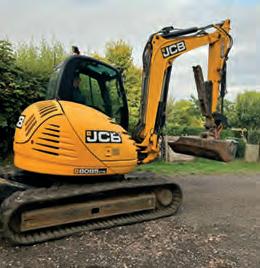
JCB 8085 Eco, c/w quick hitch & grab attachment, 67165hrs, 2011, tidy, inside cab good condition, owner driver for 8yrs, retiring, very well maintained. Selling as package with low loader & 2 buckets but could sell separately. £22,500+VAT ono. J Hodson Tel 07968 329733 (Lincolnshire)
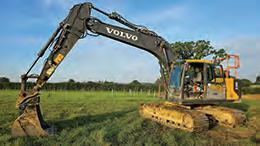
2017 Volvo EC160EL 16t excavator with a 1.4m digging bucket, runs on 80mm pins, good all round condition, used to dig 3 acre lake which it did with no problem, now no longer needed, all filters & hyd oil changed when purchased. £25,000 ono. C Johnson Tel 07973 779442 (Suffolk)
VOLVO 360 mini digger, 2600kg, engine not fitted, Model 281, for spares or repair. £950 ono. K Ollett Tel 07753 859881 (Suffolk)
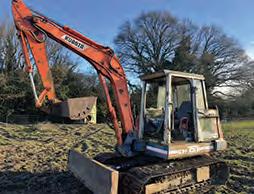
KUBOTA KH151, c/w 2 buckets, works well. £6,950 ono. J Hicks Tel 07539 367336 (Berkshire)
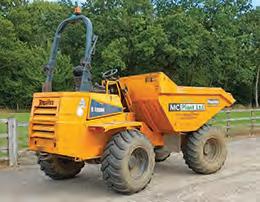
2016 Thwaites 9t 4x4 dumper, Deutz 4 cylinder water cooled engine, powershuttle transmission, 1800hrs, fold down roll bar, 2 owners from new, good clean condition. £9,450. A Burt Tel 07970-111353 (Northamptonshire)
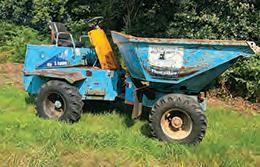
THWAITES 3t dumper, 2005, c/w road kit & roll bar, works well. £4,750. J Hicks Tel 07539 367336 (Berkshire)

McCONNEL Ditch King tractor mounted digger, c/w 12", 18" & 48" buckets, all in good working order, always kept inside. £2,250 ono. C Law Tel 07850 877794 (Leicestershire)
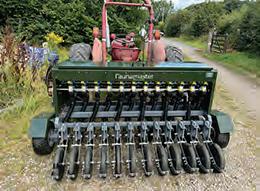
FAUNAMASTER compact precision disc drill, 2024, suitable for small tractors & ATVs, only done 30 acres of SFI from new, ideal for small seeds, excellent condition. £4,500+VAT. S Snowden Tel 07779 140120 (North Yorkshire)
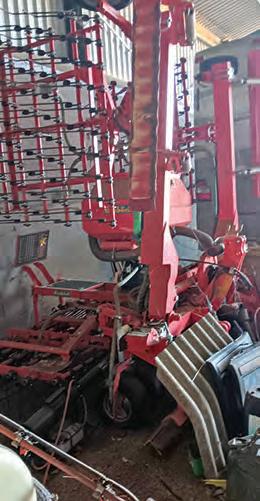
EINBOCK Pneumatic-Pro heavy duty seeder & harrow, 2018, c/w leveller bar & hydraulic rams, only done 20 acres, in demonstrator condition, barn stored. £12,000+VAT ono. C Lane Tel 07768 533767 (Oxfordshire)
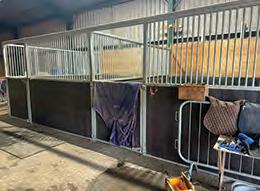
LODDON internal stables (2) measuring 12' x 14', immaculate condition, buyer to dismantle, but we can help, 2 sides, 2 fronts. £2,000. D Smee Tel 07551 289346 (Suffolk)
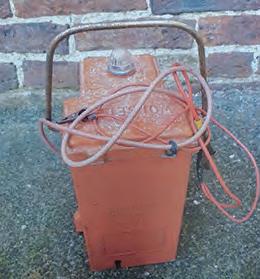
WOLSELEY electric fencer (3 strand wire system), needs 6V battery. £40. R Sinkler Tel 01377 270251 (East Yorkshire)











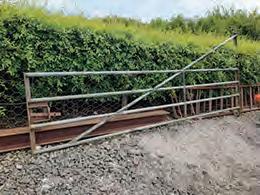
YARD gate, 15' wide, heavy duty, c/w post, excellent condition. £170 ono. C Law Tel 07850 877794 (Leicestershire)
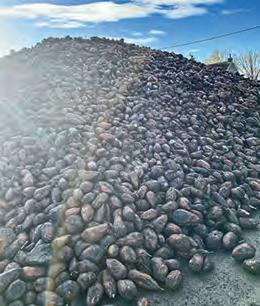
JAMON fodder beet for sale £30/ tonne over the cleaner loader, local delivery possible, good arctic access. D Attle Tel 07940 021132 (Cambridgeshire)
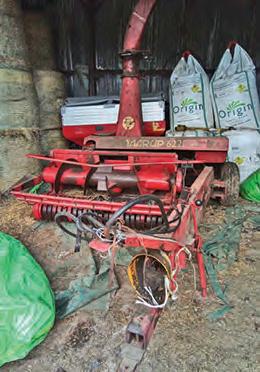
TAARUP 622 trailed forager, 1989, old but works, used for the last 15 seasons, fair condition. £999+VAT ono. J Horsington Tel 01300 341250 (Dorset)























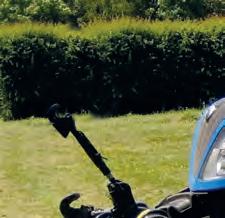
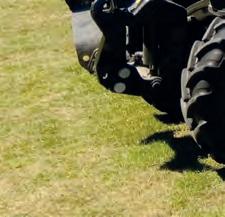








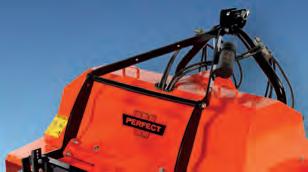





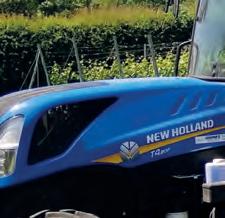
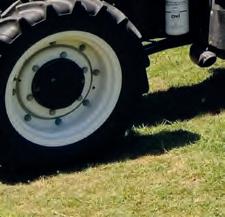



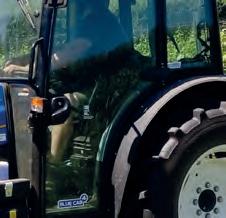
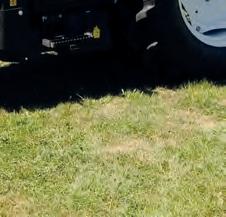
















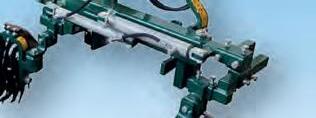


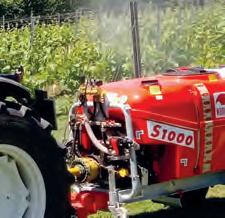


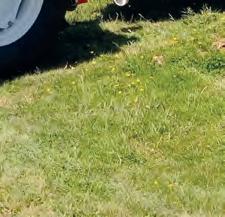
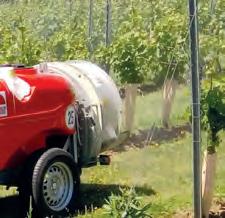
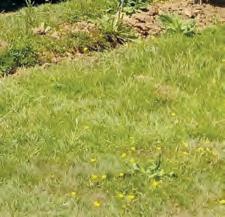









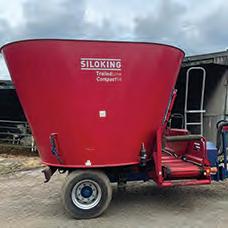
KVERNELAND Siloking 14m trailed line compact tub mixer feeder, 2016, excellent condition, never been on a dairy farm, very little wear on the auger or hitch, new knives, fully serviced by a dealer in February, done very little since. £13,500+VAT ono. J Wilsher Tel 07976 398190 (West Yorkshire)
DRY grain maize for sale, ex farm, Milton Keynes area. Price negotiable. C Smith Tel 07831 479966 (Buckinghamshire)
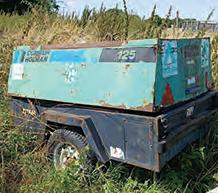
COMPAIR Holman mobile road compressor. P Hawes Tel 07747 697837/07747 697836 (Essex)
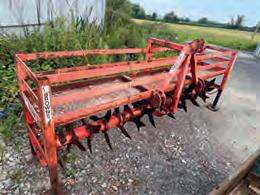
BROWNS Slitter. Blades in good condition, greased and ready for work. Some surface rust and paint work faded but does not affect use. Collection. £,1250+VAT. Good, other. C Wollen Tel 07786 117094 (Bristol)
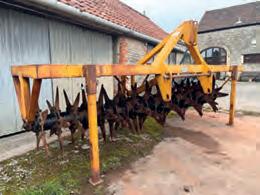
McCONNELL Pasturator Slitter. Greased, ready to go, has had a minor repair, but this does not affect use. £1,750+VAT. Good. McConnel. C Wollen Tel 07786 117094 (Bristol)
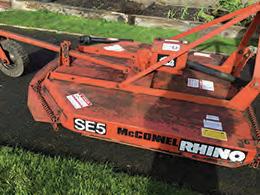
McCONNEL Rhino SE5 topper, good working order, c/w PTO, parts manual, good solid machine, little used. £900 ono. T Gallimore Tel 07849 405044 (Staffordshire)
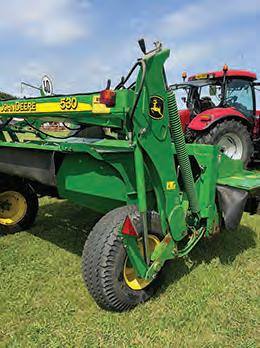
2013 John Deere 530 10’ disc mower conditioner, hydraulic bed angle tilt, latest gyro headstock, modular bed with shear protection on each disc, very very tidy mower, just been serviced & new blades, genuine reason for sale. £10,950 ono. M Jeffrey Tel 07802 722408 (North Yorkshire)
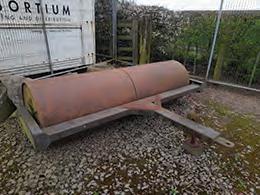
flat roll, 8' wide (8'8" wide with frame), 30" round, 3t, good condition. £900 ono. C Law Tel 07850 877794 (Leicestershire)
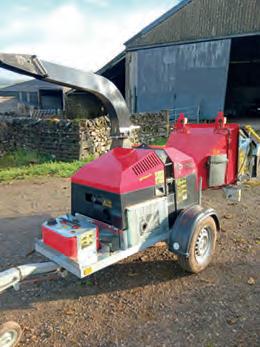
TT 165 wood chipper 2021, 6"/ 175mm capacity, petrol engine, electric start, auto variable feed. Ulez compliant, fully road legal, only 23.1hrs use. As new condition £10,500 No VAT T Bonsall Tel 07977 598930 (Derbyshire)
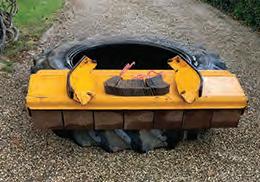
McCONNEL front hood for flail head, originally supplied with PA35 hedge cutter, c/w side skids & full set of grass flails, never used, so just slight rusting from storage. £80 ono. R Peak Tel 07860 165381 (Essex)
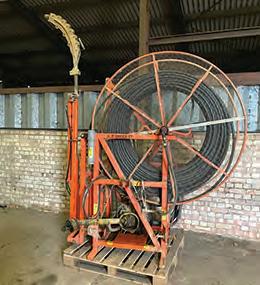
HOMBURG Delta drain jetter, 2010, in good working order, owner/operator from new, selling as now surplus to requirements. £7,000+VAT. M Fisher Tel 07506 243624 (Cambridgeshire)
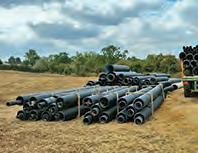
NEW JFC/polypipe, twin walled, perforated & non-perforated, sizes from 150, 225, 300, 375, 450 & 600mm in 6m lengths, Milton Keynes area. C Smith Tel 07831 479966 (Buckinghamshire)

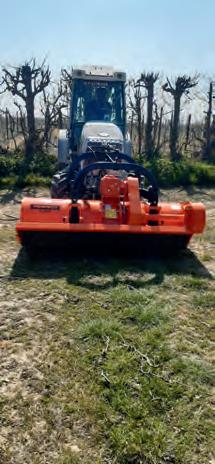
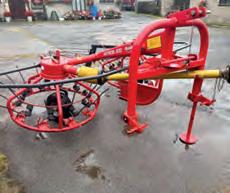
KUHN Hay bob 300, 2009, vgc direct from Retirement sale, was barn stored & not used due to contractors carrying out the required work. Will go straight to work, manual included. No cracks or welds to the frame. Grab a bargain! £1,750+VAT C Wollen Tel 07786 117094 (Bristol)
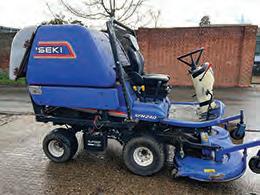
ISEKI ride on collector mower, high tip, 2010, Hydro forward & reverse, 693hrs. L Smith Tel 07717 796470 (Essex)
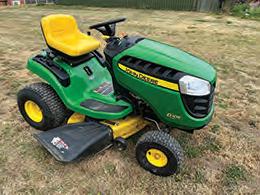
JOHN Deere D105 ride on lawn mower, 2015, auto, excellent condition. £2,500 ono. I Fowler Tel 07885 332037 (Essex)
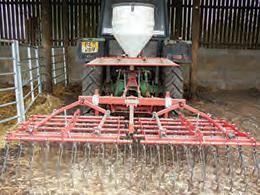
EINBOCK 3m wide combi harrow with 8mm tines & Stock seeder, ideal for overseeding paddocks & leys. £3,250+VAT ono. D Smart Tel 01223 861482 (Cambridgeshire)
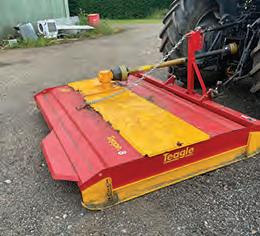
TEAGLE 8' Topper, 2016, done very little work. £1,350. S Bygraves Tel 07973 117993 (Cambridgeshire)
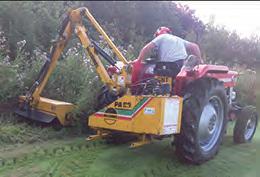
McCONNEL PA90 flail hedge cutter with stand, c/w operator & spare parts manuals, had very little use, just used for verge cutting around fishing pool, always kept inside, buyer must arrange collection. £1,800. T Gallimore Tel 07849 405044/07895 451171 (Staffordshire)
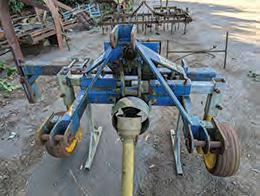
COMBIRO nursery tree lifter, vibrating with undercutter, along with two cultivators, average condition. £500. W Farm Tel 07710 253690 (Kent)
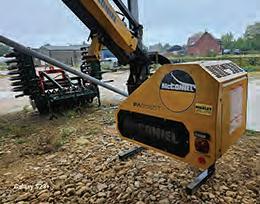
McCONNEL 6565T hedge cutter, 2019, in amazing condition, not done much work, 1.5 m head, electric controls. £18,500+VAT ono. R Higgins Tel 07919 927171 (Warwickshire)
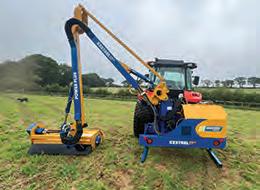
2022 Bomford Kestrel EVO S 5.7 hedge cutter, less than 17hrs use, joystick controls, slew behind, see full spec at: bomford-turner.com/ product/kestrel-evo-power-plus-2, excellent condition. £16,500. J Treharne Tel 07795 341739 (Carmarthenshire)
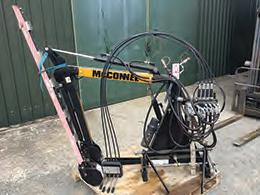
McCONNEL Swingtrim finger bar hedge cutter, 1.5m cutter bar, works left or right of tractor, very good condition, always barn stored, very little used, looks like new, all works as it should. £4,250 no VAT. A Lee Tel 07836 773893 (Suffolk)
GRAZING required for lambs, must be well fenced. K Pugh Tel 07977 912970/01694 771258 (Shropshire)
TWO stock geese & two this year's hatch – 4 in total, to be sold as one lot. Offers. P Murton Tel 07598 808954 (Norfolk)
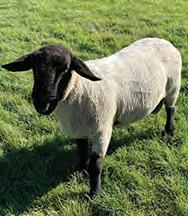
SUFFOLK rams, quality homebred pure Suffolk rams available, yearlings. £500. R Gilder Tel 07952 754067 (Gloucestershire)
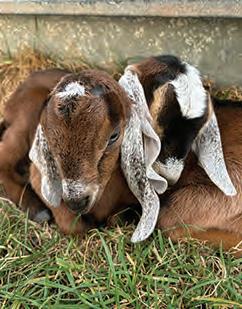
TWO stunning Anglo Nubian male kids, sire is Marshvalley Dontavious AN038248D & dam is Wittenham Herald HB080803D. E Bunting Tel 07889 640199 (Essex)
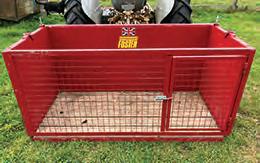
FOSTERS 6' x 3’ transport box with steel mesh sides & access gate, 3 point link, wooden plank floor, vgc, hardly used, only 2yrs old ,kept under cover, perfect for carrying animals, logs, equipment, etc, ideal smallholder’s attachment. L Bowdler Tel 07753 324463 (Hampshire)
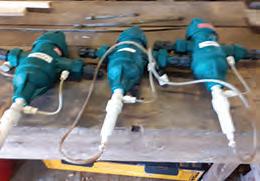
GATOR 8001 XL model, ratio 1/100, been used on turkeys. £100 each. R Anderson Tel 07887 484733 (Norfolk)
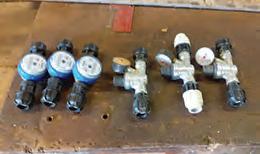
THREE water meters & water pressure gauges. £100. R Anderson Tel 07887 484733 (Norfolk)
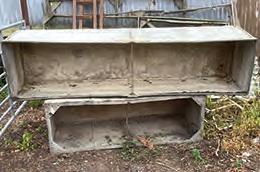
LIVESTOCK water tanks. £50 each. P Brown Tel 07850 356634 (Cambridgeshire)
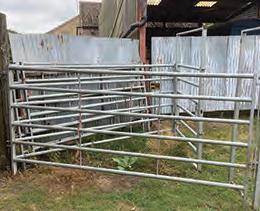
METAL cattle hurdles with gate, each hurdle is 10' x 5'. £800 ono. N Liles Tel 07850 356634 (Cambridgeshire)
MACHINERY
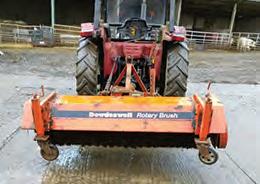
DOWDESWELL rotary brush, 7’, PTO driven, working order. £550. N Atkins Tel 07956 167510 (Leicestershire)
FLAME thrower weed killer in weathered condition. £20. R Sinkler Tel 01377 270251 (East Yorkshire)
SHOTBLASTING gun c/w 20kg of shotblasting grit. £50. R Sinkler Tel 01377 270251 (East Yorkshire)
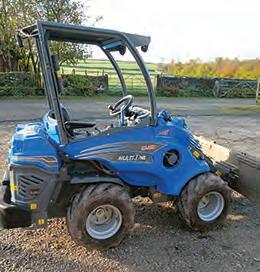
MULTIONE 5.2K mini loader, excellent condition, 4wd, 500kg lift extending boom, 2021, 233hrs, flotation tyres, bucket & various attachments. £14,000 no VAT. T Bonsall Tel 07977 598930 (Derbyshire)
JCB 531-70, 8000hrs, needs tidying. £20,000 ono. K Pugh Tel 07977 912970/01694 771258 (Shropshire)
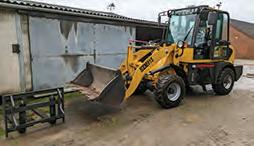
HZM 915 1.5t loader, 2021, only 35hrs from new, bought for a job but now no longer needed, quick release bucket & forks, 4wd, rear camera, excellent condition. £10,995+VAT. G Leedham Tel 07790 223005 (Derbyshire)
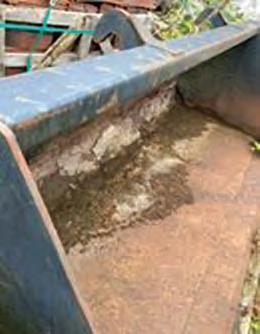
JCB Loadall front loader bucket/ shovel, Scott telehandler, excellent condition. £150,000 ono. W Edwards Tel 07745 743374 (Flintshire)

JCB 3CX Sitemaster backhoe loader, 4050hrs, 1983, 4wd, extending dipper, 6 in 1 front bucket, rear ditching bucket, one owner from new, excellent condition. £8,000+VAT. P Hirst Tel 07712 676012 (Lincolnshire)
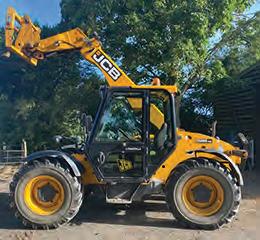
JCB 526 56 Agri telehandler in excellent condition, 2012, 6077hrs, fully working, boom suspension, trailer brakes, air con, air seat, air seat, matching tyres 60%, all pins & bushes tight, no leaks, excellent condition. £24,750+VAT ono. A North Tel 07850 060640 (Buckinghamshire)

JCB 550-80 Agri Plus Loadall, 2013, 3113hrs, 33kph 4spd P/ shift 145hp, Q fit headstock, double acting f/& r/hyd auxiliary, seat mtd servo joystick, bucket/ boom susp system, KAB htd air seat, 480/80R26 Michelins 80% worn, Loler, exc cond. £45,000+VAT. P Hirst Tel 07712 676012 (Lincolnshire)
MERLO Panoramic Turbo Farmer P28 telehandler loader, 2002, 7m reach, fork-tines & brand new bucket, piped 3rd service, rear pickup hitch, 2.8t lift capacity, 4x4x4, joystick control, for more info please call. £14,000 ono. L Smith Tel 07717 796470 (Essex)
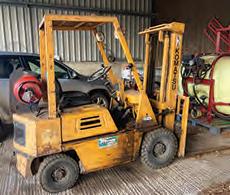
KOMATSU FG15-12 forklift truck, LPG, three stage mast, good runner. £1,000. M Stewart Tel 07775 793556 (Bedfordshire)
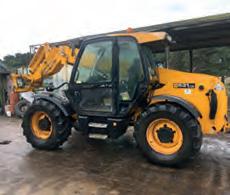
JCB 531 70 Agri super, 2013, HCB Loadall, good condition and serviced on time. Pin and cone headstock which comes with forks. Everything works as it should, pre Adblue. £26,500+VAT ono vgc S Overton Tel 07774 417183 (Suffolk)

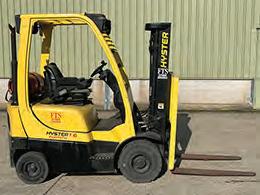
HYSTER H1.6FT lift truck, 2007, 1500hrs, excellent condition, 1.6T, 4.45m lift height, 1000mm forks. £3,750+VAT. S Bray Tel 07703595330 (Kent)
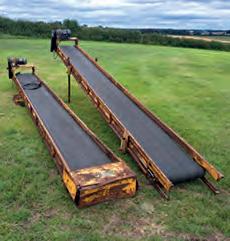
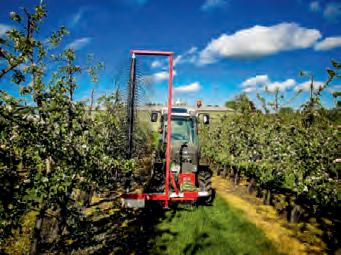

TWO 20' conveyors with 20" belts, runs on 3 phase and one motor brand new only ran for 3hrs . Both in average condition . £600 +VAT ono J Dalby Tel 07788 722165 (Warwickshire)
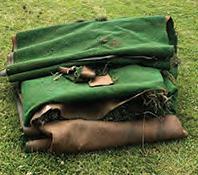
PALLET of astroturf, approx 50' x 20', ideal for gateways, parking vehicles on. Free to a good home. B Robinson Tel 07740 683113 (Gloucestershire)
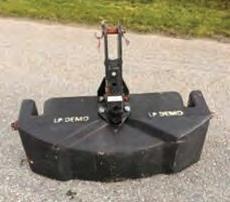
JCB weight block, 850kg, cast iron, good condition. £850+VAT. T Allsop Tel 07824 707916 (Derbyshire)
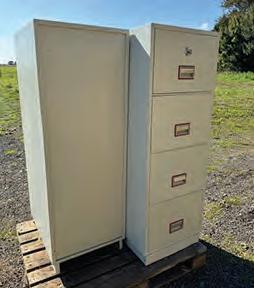
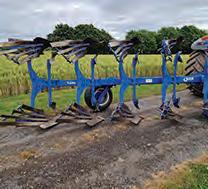
RABE V2300 5 furrow 2010, combi wheel, manual f/furrow width, shearbolt style legs, pin adjustable skimmers, done very little work still has a lot of original wearing metal with plenty of life left in it, probably the best you could find. £6,950. A Knight Tel 07473 130769 (Worcestershire)

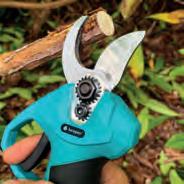
and
POTATO chitting trays in good condition (120). G Judd Tel 07979 792252 (Cambridgeshire)


FIREPROOF 4 drawer filing cabinets (2) by Phoenix Model 2244, these retail at £1,200+VAT, both in very good condition with keys, heavy, weighing approx 250kgs each. Bargain at £475 each no VAT.
S Lord Tel 07970 410616 (Lincolnshire)
PETROL powered 2” water pump, c/w suction hose & box of spare water pipe fittings. £190. K Goodman Tel 07305 960072 (Northamptonshire)
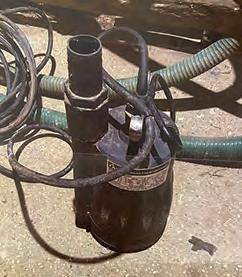

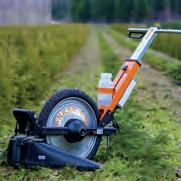
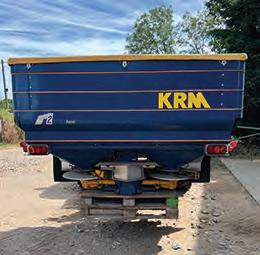
KRM spreader, 2008, hydraulic on/off with E2T vanes & calibrating kit, vgc. £2,400+VAT. R Hanton Tel 07860 792976 (Norfolk)
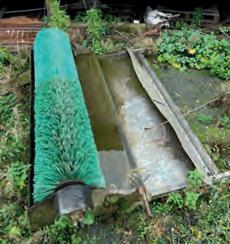

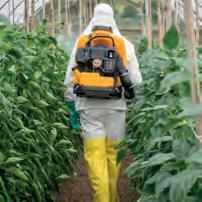
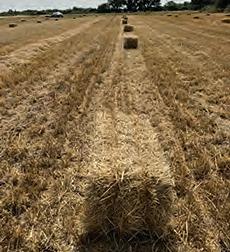
FRESHLY baled conventional barley & wheat straw bales available, for collection or local delivery available to Cambridgeshire area, call for details. J Dennis Tel 0770 8918439 (Cambridgeshire)
GOOD quality hay, 4' bales, suitable for horses. £25/bale. P Murton Tel 07598 808954 (Norfolk)
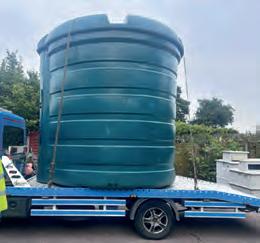
BALMORAL 10,000L diesel storage tank with electric fuel pump, good condition. £1,250. P Nash Tel 07816 605435 (Essex)
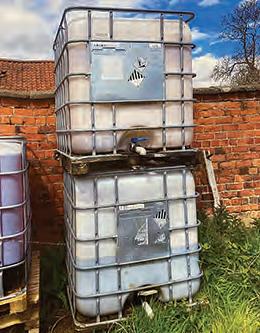
TWO IBC 1000L containers. £40 each. R Sinkler Tel 01377 270251 (East Yorkshire)
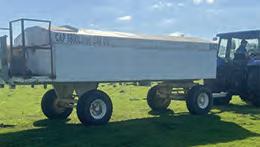
KUBOTA L50304WD Tractor, 40kph. Manual/powershift trans, 50hp, 2 open centre spools. Front tyres(15%) BKT, rear tyres 80%) BKT, manual rear top link. Creep speed, a/c not working, £9,000 +VAT ono P Lole Tel 07767 695800 (Worcestershire)
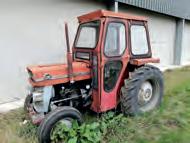
£7,000

Call: 01359 250796 Email: info@rbsm.me.uk
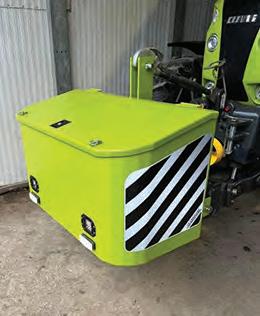
We

NEWLY-MADE front linkage tool box, painted Claas green, has LED worklights & front markers, nationwide delivery. £950 ono no VAT. M Jeffrey Tel 07802722408 (North Yorkshire)




6800-LITRE bunded diesel bowser, c/w brakes, petrol fuel pump, hose & gun. £4,750 ono. J Hicks Tel 07539 367336 (Berkshire)


















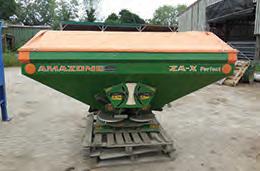
AMAZONE 902 fertiliser spreader. £800+VAT ono. D Smart Tel 01223 861482 (Cambridgeshire)


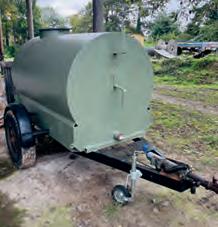
A LOLode WF500 approx 2,000L. Chassis is in great condition just a little surface rust with the main body galvanise used for fresh water only. Had new lights and jockey wheel. It has a platform between the tow bar, ideal for pump of power washer. A Wedl Tel 07846 527787 (Kent)
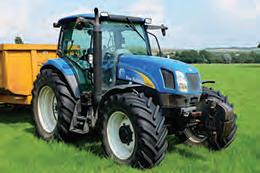
NEW Holland T6050, 3290hrs, 2008, excellent condition, very good Michelin tyres, air con, air seat, manual gears, second owners from mainly arable farm, weights not included. £29,500+VAT. M Brake Tel 07927 008505 (Wiltshire)
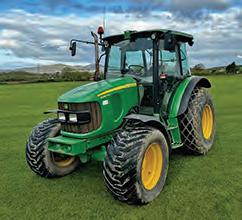
JOHN Deere 5090M, 2012, 5300hrs, 1owner, recent service, turf tyres @60%, hyd extd hitch, 2 spools, a/c, Bluetooth USB radio, f/w JD ATU steering control & loom, GS3 dome & JD1800 controller also available, view Worcester, exc cond. £22,000+VAT ono. P Lole Tel 07767 695800 (Worcestershire)








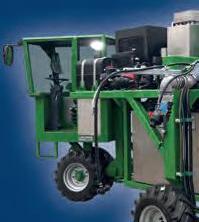

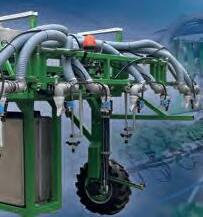







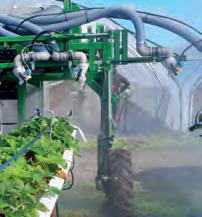
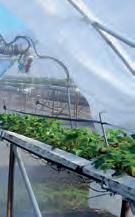



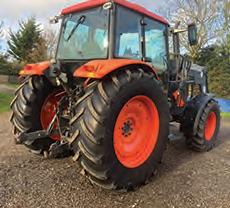
KUBOTA M128X (130hp), 2010, 3560hrs, G55 loader, Euro brackets, new bucket, not had loader on a lot of the time, tidy tractor. £26,500+VAT. S Bygraves Tel 07973 117993 (Cambridgeshire)
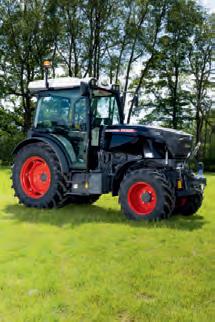
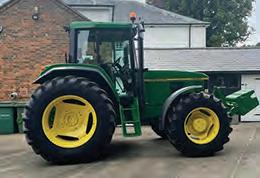
JOHN Deere 6900, 1995/96 N reg, f/linkage & weight block, nearly new BKT 420/85R28, 130hp, 60% Uniroyal rear 20.8R38, air con, fully serviced, immaculate, professionally painted, all new plastics, 40K gearbox. £23,000. J Hickman Tel 07766258224 (Hertfordshire)
JOHN Deere 3040,1986, SG2 cab, 6 cylinder engine 90hp, 12800hrs, been on light work for last 20yrs, original condition, straight off the farm, all runs & drives as it should, located Newmarket, Suffolk. £8,500 ono. T Anderson Tel 07770 598099 (Cambridgeshire)
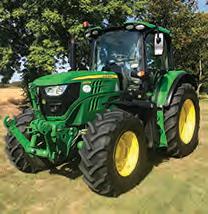
JOHN Deere 6140M, excellent condition, 2020, 900hrs, cab suspension, Autoquad Plus, Isobus ready, premium seat, 4 spools, front wheel 420/85R24, rear wheel 460/85R38, 4wd front axle, 2 blinds, front linkage, premium light package, glass roof hatch. G Catling Tel 07748 827519 (Suffolk)
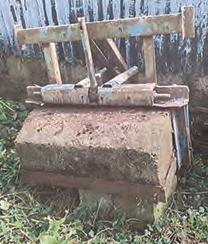
WEIGHT block, 3pt linkage, ideal for a loader tractor. £70. R Sinkler Tel 01377 270251 (East Yorkshire)
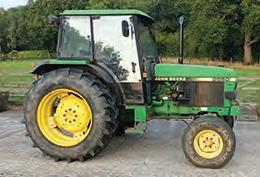
1992 John Deere 2650 tractor, 2wd, MC2 cab with side mounted syncro gearbox, trailer braking, recent new rear 420x34” tyres, 2 owners from new, good condition. £8,750. A Burt Tel 07970 111353 (Northamptonshire)
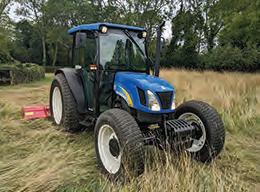
NEW Holland TN60SA, 2006, 4wd, 2006, sub 2400hrs, very good condition, turf tyres, air con, SuperSteer front axle, front weights, well loved from private home. £15,750 no VAT. Flail topper not included in sale price but is for sale separately. M Crosby Tel 07909 513767 (Essex)
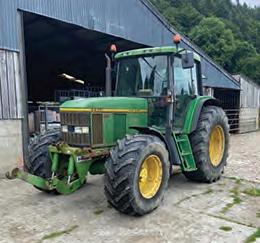
JOHN Deere 6600, 1995, 5050hrs, in good condition, 40K, front linkage, push out hitch, 3 spools, will go straight to work, ideal collector's tractor. £19,950+VAT ono. W Rogers Tel 07951 419138 (Shropshire)
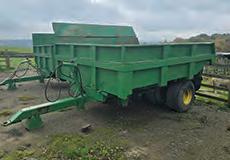
BAILEY 4T dump trailer, single axle with 4 wheels, single hydraulic tipping ram, hydraulic brakes, rear road lights, grass tyres 400/60-15.5, average condition. £4,000+VAT ono. L Reynolds Tel 07561 451622 (Derbyshire)
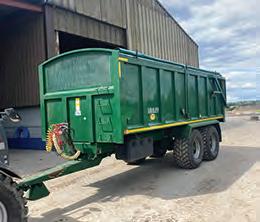
BAILEY 16t tipping grain trailer, spr d/bar, swivel ring hitch, floatations 560/60R22.5 Nokians, easy sheet, grain sock, hyd end door, steering r/axle, air & hyd brakes, LED lights with internal loading light, toolbox, good cond. £17,750+VAT ono. J Rycroft Tel 07768 726198 (North Yorkshire)
2022 Bateson 16' 3500kg tandem axle flatbed trailer, 6'6” wide, headboard & ladder rack, ramps & drop stands, recessed lashing rings in bed, LED lights, mainly used for hay & straw, excellent condition. £2,950+VAT. M Cooper Tel 07703 459651 (Bedfordshire)
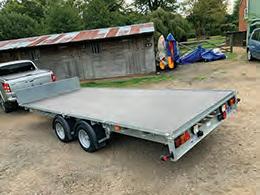
2024 Ifor Williams 16’x 6’6” trailer, 3.5t, bought new April 2024, little used. £3,600+VAT. S Bygraves Tel 07973 117993 (Cambridgeshire)
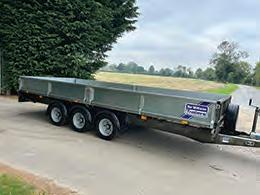
IFOR Williams LM166, owned from new, sides are in very good condition, only been used a few times, tyres good all round, as is the floor. £3,850+VAT. M Dew Tel 07720 560164 (Lincolnshire)
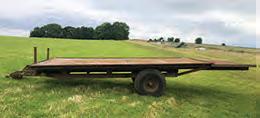
STEEL bale trailer, 19’ long, can send more pictures if required. £600+VAT. B Robinson Tel 07740 683113 (Gloucestershire)
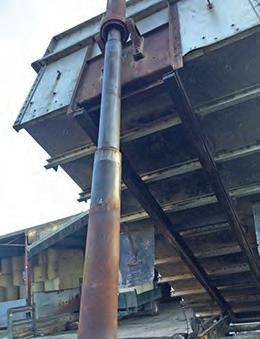
TANDEM axle ali body 10t tipping trailer, on good solid chassis, good tyres, solid drawbar & eye, would be grain tight, ideal for hauling heavy loads, tips with no leaks. £1,700+VAT ono. G Ryman Tel 07714 956920 (Oxfordshire)
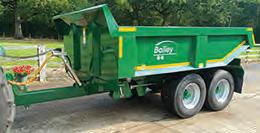
2022 (Dec) Bailey CD10 contract dump trailer, 10t capacity, high speed axles, super single tyres, LED lights, trailer brakes, used for soil only, had little use, no dents or damage, always stored inside, owned from new, very good condition. £8,850. A Burt Tel 07970 111353 (Northamptonshire)
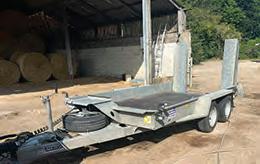
IFOR Williams GH126 plant trailer, 2021, owned from new, always stored under cover, very tidy trailer, now surplus to requirements. £2,900+VAT ono. P Evans Tel 07885 795485 (Norfolk)
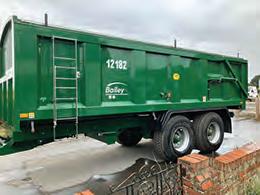
BAILEY TB 16T, 2020, c/w air/oil brakes, arched full f/window, grain chute & sock, hyd r/door, rollover sheet, mudguards, 385/65-R22.5 tyres, always stored inside, only used for grain, excellent condition, genuine reason for sale.
£19,495+VAT ono. C Saunders Tel 07778 060973 (North Yorkshire)
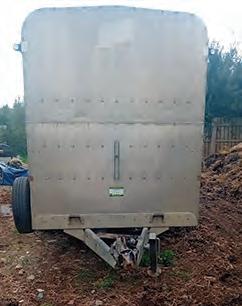
IFOR Williams 14' tri axle trailer, full service 2023, all new brakes, all round new LED lighting, extra height trailer, will take 2 heavy horses easily, 2 decks with gates & a cattle gate, plus some parts for horse transport, good. E Bunting Tel 07889 640199 (Essex)
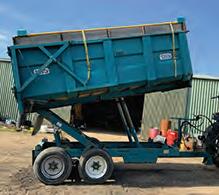
ARMSTRONG & Holmes 9t high tip tipping trailer, rollover sheet, tyres 90%, hydraulic tailboard. £3,500+VAT. S Bygraves Tel 07973 117993 (Cambridgeshire)
TWO-AXLE plant trailer, 2700 gross weight, ex utility company, in very good condition. £1,400 ono. K Ollett Tel 07753 859881 (Suffolk)
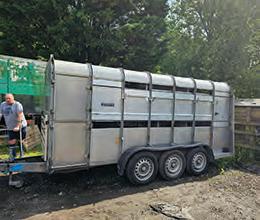
IFOR Williams TA510G tri-axle livestock trailer, 2014, regularly & recently serviced, 7 good or better tyres, well looked after, c/w full length sheep decks & ramp, no issues (a RONSEAL trailer!! It does exactly what it says in the ad!). £4,500 ono. S Allday Tel 07359 896332 (Lancashire)
ALLIANCE Agri-Star, front tyres, 540/65-R28, 50% tread. vgc. £395+VAT. P Hawes Tel 07747 697847/07747 697836 (Essex)
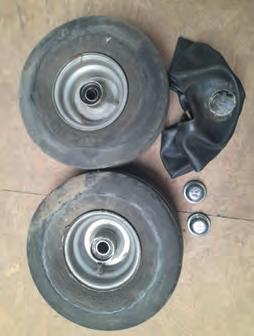
HAY bob wheels. Vicon hay bob 300. 2 wheel rims with tyres, 15 x 6.00 some cracks on tyres but hold air. 2 Spare inner tubes, 2 brand new hub caps. £80 ono C Law Tel 07850 877794 (Leicestershire)
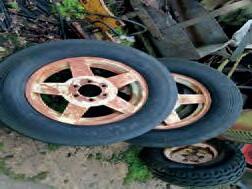

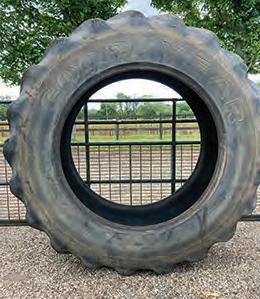
GOODYEAR 16.9-R34 single tyre, about 40% tread, surface cuts, but generally sound, stored inside. £60 ono. R Peak Tel 07860 165381 (Essex)
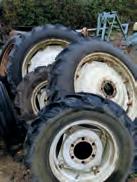

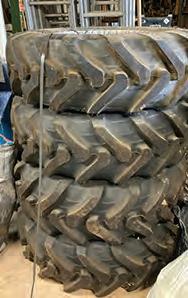
MANITOU MLT 625-75 H tyres/ wheels (4), Alliance 12.0R18 300/75R18 A142A8 Agro Ind 580, new, never used, location North East Wales. £1,200 ono. W Edwards Tel 07745 743374 (Flintshire)
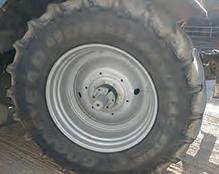
GOODYEAR Optitrac 650/65-38 tyres, excellent condition, no cuts, cracks, or repairs, estimate 50% tread left, these will do a lot more hours yet for someone, only taken off as the fronts wore out & I've gone to 710s. £900+VAT ono. M Baker Tel 07747 675186 (Kent)
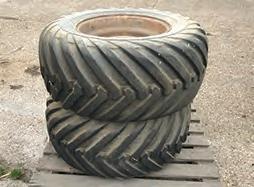
TRELLEBORG flotations, 17.5/400, MF centres, 90% tread, good condition. £100. I Cowell Tel 07788 985544 (Essex)
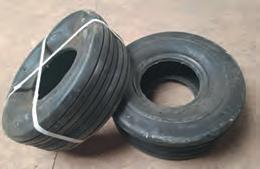
HAY bob tyres, Vicon hay bob 300. 2 tyres brand new 15 x 6.00. £60 ono C Law Tel 07850 877794 (Leicestershire)
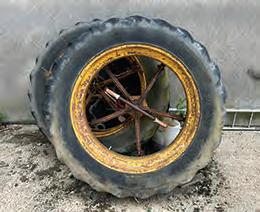
OLD set dual wheels, tyres not the best but usable & hold up, tyres 13.6/38, not used for a long time, buyer collects. £100+VAT. I Fowler Tel 07885 332037 (Essex)
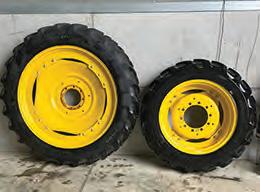
STOCKS rowcrop wheels, 320/90R46 rears, 12.4-R32 fronts, tyres 95%, excellent condition. £2,250+VAT. R Hanton Tel 07860 792976 (Norfolk)
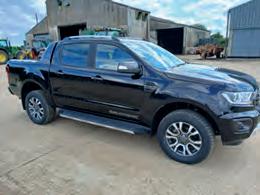
BLACK Ford Ranger Wildtrak 2.0L Bi Turbo, April 2022, 32,500 miles, tow bar, FSH, Sat Nav, DAB radio, heated seats, 4 brand new tyres, great condition. £22,500 +VAT ono R Nesling Tel 07464 940898 (Suffolk)
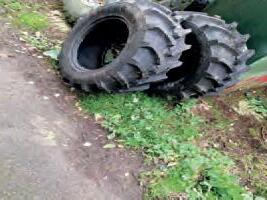
LAND Rover Freelander GST D4E, 2010, leather interior, electric sun roof, new MOT, 75,000mls. £5,000. T Shipway Tel 07748 518206 (Essex)
PAIR OF NEW TRELLEBORG TYRES TM700 X 280 70.18
Email: info@rbsm.me.uk www.rbsm.me.uk

SET of 4 rowcrop wheels, 12.4R32 tyres 20%, rims vgc, no cracks. £400/pair or £700 for the set. R Hanton Tel 07860 792976 (Norfolk)
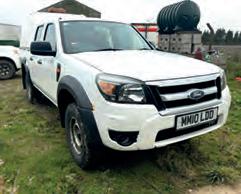
FORD ranger, double cab pickup, 2010, Truckman top, only 46,233 miles on the clock. Ex council pickup so well maintained. 1 Previous owner, 4 matching all terrain tyres. £3,500 J Sutherton Tel 07765 537608 (South Yorkshire)
LAND Rover Defender, 1988, good chassis, truck, cab, for spares or repair, 64,000mls on clock. £6,500 ono. K Pugh Tel 07977 912970/01694 771258 (Shropshire)
LAND Rover Defender, 1988, diesel SWB, all original, exportable or project, good chassis. £8,000 or exchange 4x4. K Pugh Tel 07977 912970/01694 771258 (Shropshire)

FORD Ranger XLT 2.2, 2016, 60,000 miles, just serviced & MOT, all good tyres, selling due to retirement. £12,500+VAT. R Sharpe Tel 07808 812289 (Rutland)
BMW Z3 roadster, two seater, reg V490 LEB, 2.8L, silver with red leather seats, 85,765mls, MOT expired, first reg 16/11/99, V5 present, automatic, hard top & fabric cover. £1,750 ono. M Andrew Tel 07903 442568 (Lincolnshire)







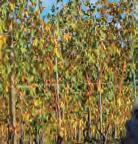
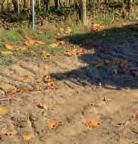
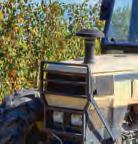
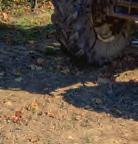



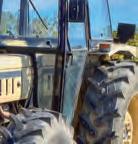
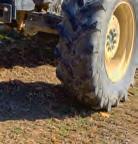





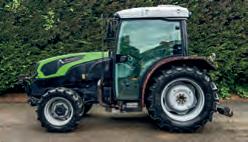
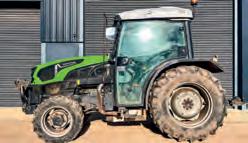
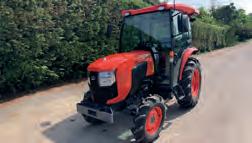
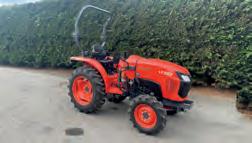





2022 Yamaha Kodiak 450, very low hrs, only 24hs with 32miles, road registered with V5 present, everything works as it should, basically a brand new quad! £6,200 ono. J Walker Tel 07944 415796 (Argyllshire)

Mini Cooper S diesel Paceman, 2015, all wheel drive, 56,000 miles, MOT May 2025, new clutch, timing chains, seals, oil & filter 1500 miles ago. £6,750. J Weston Tel 07803 270448 (Lincolnshire)

HYUNDAI Terracan Limited 2.9 diesel auto, 57 reg, MOT March 25, 107000mls, 2 new tyres, very reluctant sale of a clean, straight, genuine vehicle, great for towing, serviced & new belts. £3,450 ono. R Horner Tel 07769 806840 (Bedfordshire)
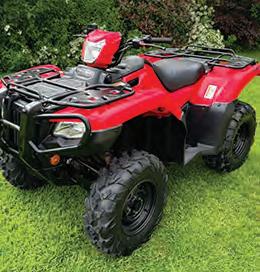
2019 Honda 520 FM6 quad, very clean & tidy, runs & rides like new, agri reg, 1600hrs, diff lock, 2/4wd, independent r/suspension, power steering, manual shift, recent brand new tyres, serviced & with warranty, please call for more info. £3,000 ono. T Byrne Tel 07747 286569 (Greater Manchester)
1972 Farmers Weekly question & answer book, printed by Billing & Sons Ltd, compiled & edited by Harry Hope, fascinating reading – great ideas for vintage themed quiz. £10 + £2 p&p. P Robinson Tel 01623 822070 (Nottinghamshire)
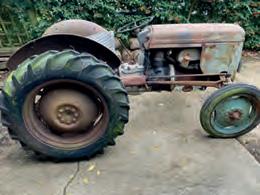
GREY Fergie Tractor, 1950, petrol, currently seized engine, been standing for 4 years. Good tyres and to work, can deliver. £875. J Long Tel 07711 079821 (Suffolk)
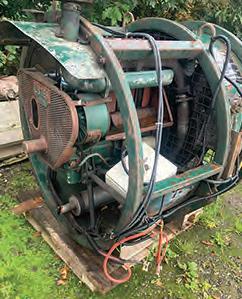
1952 Lister grain drying & condition fan for up to 400T, recently overhauled other than the crankcase seal which is where all the oil came out, think it would run again with right expertise, for spares or repair. £300+VAT ono. W Hammond Tel 07879 253722 (Norfolk)
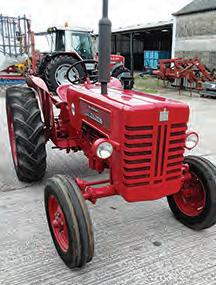
INTERNATIONAL B275, Serial No 1525, 1960, working order, lights & trailer pick up hitch, new pistons & liner plus cylinder head refurbished. £3,750 ovno cash on collection. M Lawrence Tel 07836724223 (Nottinghamshire)
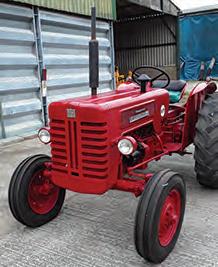
INTERNATIONAL B275, Serial no 24296, 1961, tacho & foot throttle fitted, lights & trailers pick up hitch, new front tyres & original registration book. £3,500 ovno cash on collection. M Lawrence Tel 07836 724223 (Nottinghamshire)
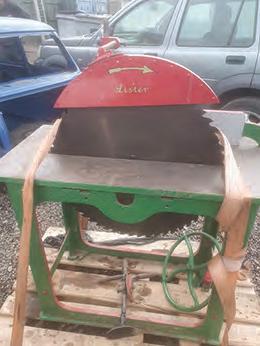
LISTER Stationery belt driven saw, 1949, good condition. £75. T Morley Tel 07773 338343 (Essex)

TRACTOR cab for David Brown 880 (1967), all glass is complete, just needs a few minor repairs, for spares or repair. C Richardson Tel 07778 464034 (Lincolnshire)
LISTER 2 row potato planter, cup type, good order, c/w instruction book & parts list, good working order. £525 ono. M Andrew Tel 07903 442568 (Lincolnshire)
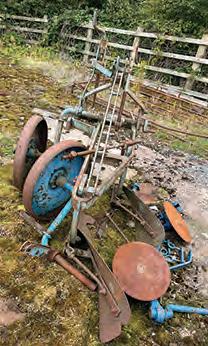
RANSOMES Sims & Jefferies
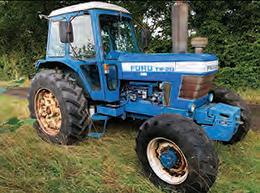
1983 Ford TW20 4wd overhauled engine, bored & sleeved, cam & crank bearings, valves & seals, injectors, turbo, new clutch & refaced flywheel, new PTO drive hub, Dual power clutch packs, f/axle bearings & seals replaced, new h/brake & more. G Springell Tel 07831 096485 (Buckinghamshire)
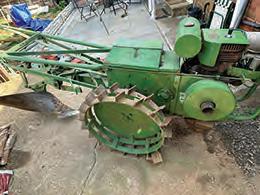
TRUSTY Tractor 1946, in full working order, c/w spare plough & Cambridge roll, all in original condition. £850 ono. N Wilcock Tel 07503 522164 (Lincolnshire)
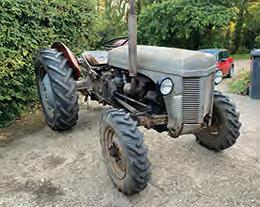
MASSEY Ferguson T20 diesel tractor c/w loader, 1955, all runs & drives well, new rear mudguards, starts & stops as it should, loader rams need a refurb, located Suffolk. £2,850. J Long Tel 07711 079821 (Suffolk)
NAKED Oats Wanted. We are looking for a regular supplier of baked oats in small tonnage deliveries. E Bunting Tel 07889 640199 (Essex)
PERROT irrigation reel, 110/500, twin axle. D Brown Tel 07710 316205 (Cambridgeshire)
IRRIGATION pipes, 5", preferably razor. D Brown Tel 07710316205 (Cambridgeshire)
ONION harvester, preferably with rotating bar & paddle. D Brown Tel 07710 316205 (Cambridgeshire)
LOOKING for a farm trailer, 20' or thereabouts, any condition, but must be towable & close to Halifax, would the farmer from Greetland call again as I've lost phone number. P Jackson Tel 01422 243913 (West Yorkshire)
MOUNTED sprayer wanted with 15m rear folding hydraulic booms. S Eddon Tel 07979 984796 (North Yorkshire)
CLAAS Medion 310, Dom 98VX or Mega Vista combine wanted, with C450 header & 3D sieves. S Eddon Tel 07979 984796 (North Yorkshire)

3-CYLINDER Massey Ferguson tractor 35 or 135 or 23 or 5 Series, quick decision. D Lunn Tel 07941 072957 (Cambridgeshire) 11/22.5 tyres required, preferably crossply, but would consider radials, not important but must be sound. C Howell Tel 07798 668239 (Norfolk)
STORE cattle, any breed, prefer over 12 months, TB tested or untested off TB farms; also store lambs. K Pugh Tel 07977 912970/01694 771258 (Shropshire)
WHOLE oats wanted for stock feed, small loads & ends taken, delivery to CO6 4JP or we can pick up on car trailer. E Bunting Tel 07889 640199 (Essex)
MASCHIO DC hydraulic depth ram required. M Upchurch Tel 07885 084826/01487 840260 (Cambridgeshire)
Especially looking for:
Kubota B2100/B2400
Mitsubishi MT200HD or 301HD
Tel: Charles on 07850 210256
Email: charles@microplant.net
HINGED engine cover wanted to suit Merlo P26.6 SPT telescopic loader. A Duncan Tel 07775 687574 (Aberdeenshire)
STORE cattle and store lambs required. K Pugh Tel 07977 912970/01694 771258 (Shropshire)
KONGSKILDE 4–6m hydraulic fold spring tine harrow wanted. M Upchurch Tel 07885 084826/01487 840260 (Cambridgeshire) GREY/BROWN Chinese goose & gander, this year's hatch preferred as companions are needed for one lonely goose, definitely NOT Lavender, Norfolk/Suffolk area. S MealingMills Tel 07376 643547/01508 8HW (Norfolk)
KONGSKILDE TRL55/75 blowers & Kongskilde MTD blowers wanted, distance no problem. L Pugh Tel 07968 170848/01568 611338 (Herefordshire)
3M Airstream dust helmet main filter, part number 060-23-06P wanted, would consider any other new spares for the AH1 helmet. C Darlow Tel 07739 462887/01353 724953 (Cambridgeshire)












































TS59 J plough, collection only. £400. R Thomas Tel 07952 528071 (Staffordshire)
4X4 truck required, anything as long as it goes. K Pugh Tel 07977 912970/01694 771258 (Shropshire) CLAAS Compact 25, any condition considered, please call with details. T Roberts Tel 01758 770678/07817 755795 (Gwynedd)
CLAAS Medion 310/Dom 98VX combine wanted, with C450 header & 3D sieves. S Eddon Tel 07979 984796 (North Yorkshire) STRAW always wanted, small or large bales, cash on delivery, Market Rasen. M Chapman Tel 07971 940087/01673 843663 (Lincolnshire)
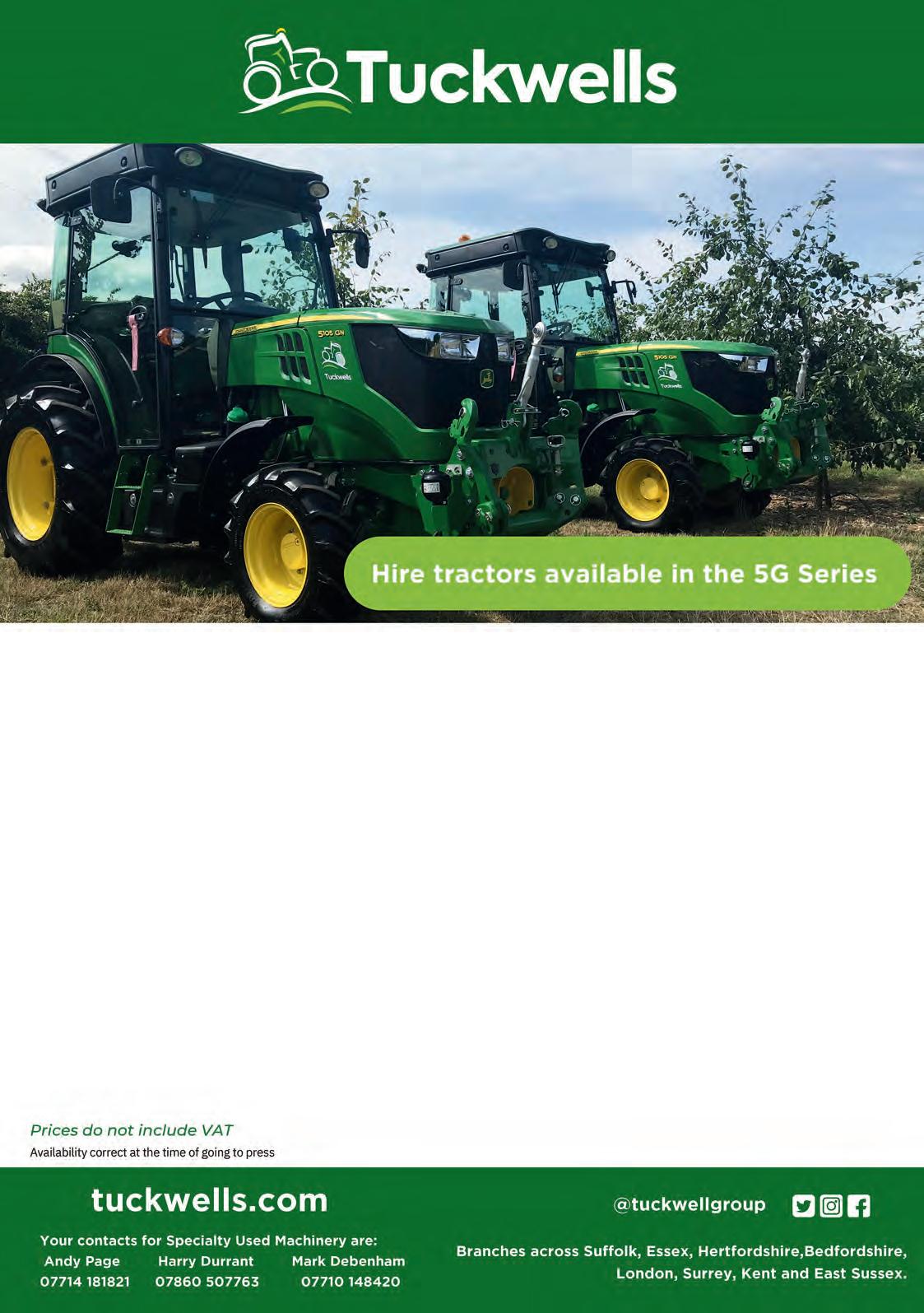
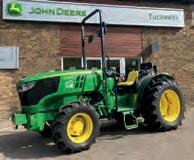

JOHN DEERE 5075GL
2021, 815hrs, 24F/12R Power Reverser 40kph transmission, 360/70R24 – 280/70R16, open station with ROPS, 2 x rear SCV’s, hydraulic trailer brakes.
PREMIUM USED MACHINE
Stk No A1079647 £25,000
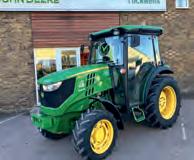

JOHN DEERE 5105GF 2021, 2337hrs, 24F/12R Power Reverser transmission, 380/70R28 - 280/70R20, a/c cab. PREMIUM USED MACHINE
Stk No. A1079644 £34,000
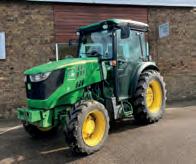
JOHN DEERE 5090GF 2020, 3644hrs, 24F/12R Power Reverser transmission, 380/70R28 - 280/70R20, a/c cab.
Stk No A1072790 POA
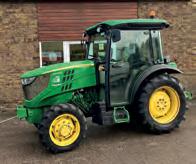
JOHN DEERE 5090GF 2018, 3194hrs, 24F/12R 0.5 - 40kph Hi-Low transmission, 380/70R28 - 280/70R20, a/c cab.
Stk No A1073892 POA
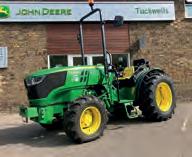

JOHN DEERE5075GL 2021, 834hrs, 24F/12R Power Reverser 40kph transmission, 360/70R24 – 280/70R16, open station with ROPS, 2 x rear SCV’s, hydraulic trailer brakes.
PREMIUM USED MACHINE
Stk No A1079649 £25,000
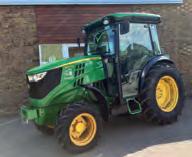

JOHN DEERE5105GN 2021, 1858hrs, 24F/12R Power Reverser transmission, 340/85R28 - 280/70R18, a/c cab. PREMIUM USED MACHINE
Stk No A1079645 £34,000




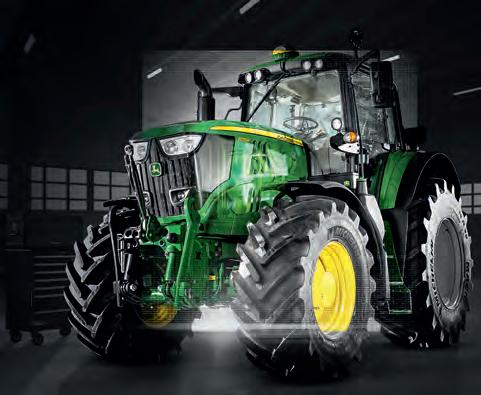

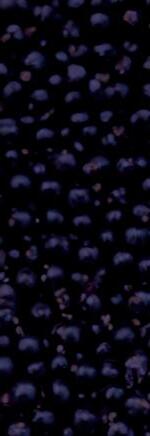
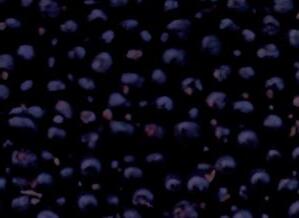
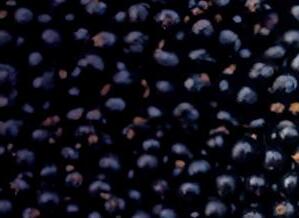
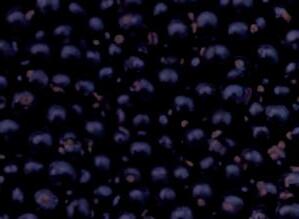
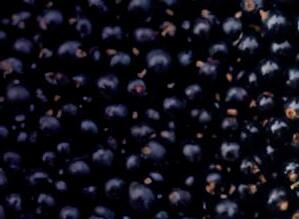
innocent Drinks has set up a fund to help its farmer suppliers to adopt regenerative agriculture practices –we caught up with impact and engagement lead Estelle Gayout to nd out more.
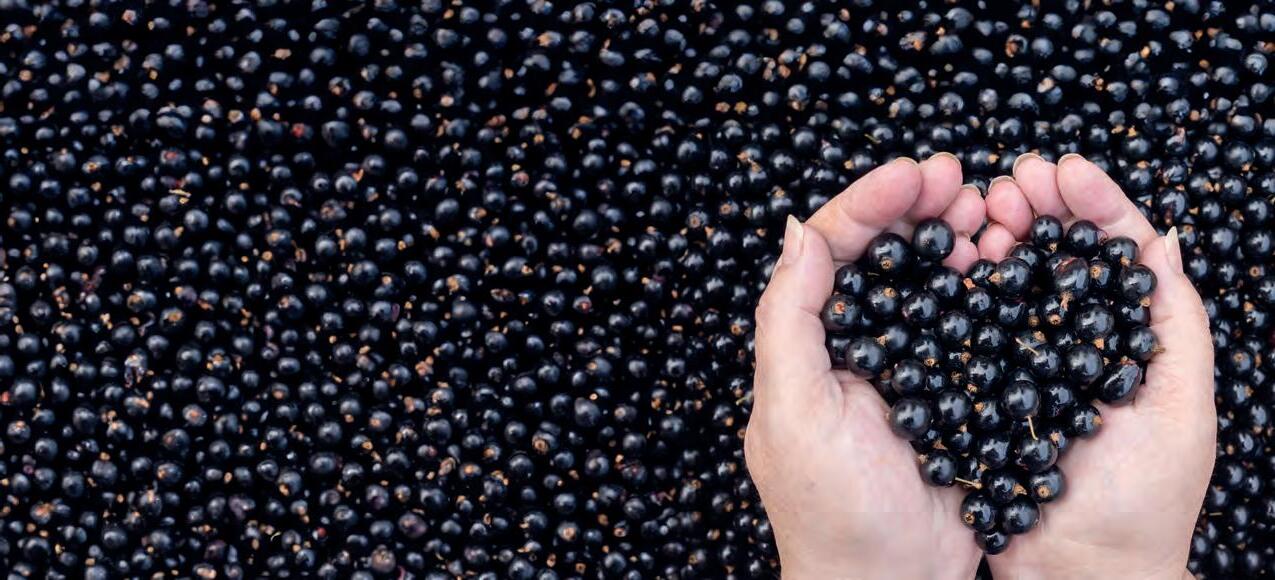
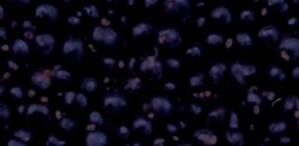

After an 18-month ‘learning journey’ to nd out what farmers needed to adopt regenerative agriculture practices, innocent Drinks launched the Farmer Innovation Fund in 2021 to ‘de-risk’ the transition. The business had found that while there was some funding available for smallholders, commercial farmers were reliant on government funding, which is time consuming and di cult to acquire. Having started with a grant of £100,000, this year it increased to £1M, available to its suppliers globally.
innocent o ers three types of funding: micro grants, (focus groups, conducting life cycle assessments or research to try and understand the barriers to regen ag); on farm trials (e.g. for installing solar panels, looking at irrigation or precision farming equipment); and commercial scale farm trials. Most grantees are using micro-grants and on-farm trial grants but in the future, innocent wants to help farmers with multiyear projects. This year, 10 winning applicants were selected in June.
As well as nancial support, innocent organises webinars and sends newsletters to share best practice between suppliers. In a few years’ time, the plan is to share those best practices with the wider industry.
Estelle Gayout explains more about the funding...
Q. Why is regen ag important to innocent?
growing the ingredients, squashing them, and transporting them. It’s a big challenge but also a great opportunity to start working on how we can improve the resilience within our own supply chain.
We all are aware of the challenges of climate change, so we have a responsibility as a business to try to invest today. And we might not see the results tomorrow or next year, but we know we need to do something to try and safeguard the future of fruit and veg for generations to come.
Q. What types of projects qualify?
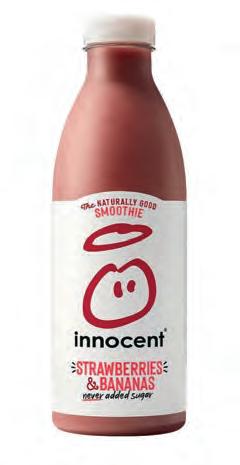


A: It’s a huge focus for us because 57% of our carbon emissions come from the ingredients that we buy and use in our drinks – that’s from
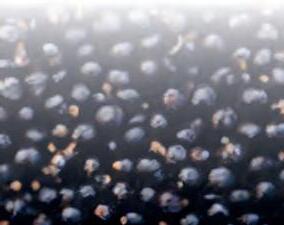

A: Anything around regen ag and speci cally low carbon farming and higher biodiversity. Some of the projects, for example, are working speci cally on pollination, looking at including wild ower strips and measuring the amount of pollinators on site, but also the di erent type of species. We’ve got a separate agship biodiversity project called The Beacon Project, and we’ve been working with the University of Reading and some Spanish research institutes to look at the role of wild pollinators in apple farms in Spain. It’s looking at making sure the amount of wild owers is helping attract more pollinators, so we can reduce pesticides and fertilisers. Some of the results have come up already and we’ve seen up to a 67% increase in wild pollinators on site. If we continue that way, we could see an increase of 30% of apples on the farm. It’s a really interesting project that we’ve been running for the last three years.
are looking
the amount of pollinators on site, but also pollinators in apple farms in Spain. It’s wild
increase of 30% of apples on the farm.
Q. What are some examples of successful projects?
A: Pixley Berries are our UK blackcurrant supplier
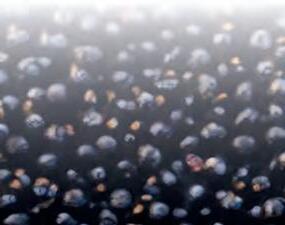
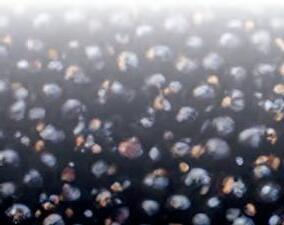
and they’ve been having some issues with the climate recently – from frost to extreme sunshine, which was leading to some burn on the crops. So they are applying a biostimulant and looking at some sensory devices to see what the impact of the biostimulant is on the plant. What they’re hoping to see is an increase in leaf coverage which will protect the fruit when it is exposed to the sun prior to harvest. It’s a three-year project and this year is the very beginning, with £25,000 grant funding per year.
And in Spain, they’re starting to work on, rst of all, a life cycle assessment of strawberries. It’s an area where they’re very much su ering from droughts so they’re going to be using a new on demand drip irrigation system. From the initial studies it can reduce water use by up to 15%.
Q. What’s next for the fund?
A: We’re trying to increase the pot of money in the next few years, so hopefully in 2–3 years’ time we will have £2–3 million. We’re also planning on opening the fund a little bit earlier this time, around beginning of February 2025, because some of the feedback we received was that our window was just too short. We had six weeks and so we’re increasing it to 10 weeks this time.

Estelle Gayout joined innocent in 2022, with over 10 years’ experience in sustainability communications and corporate social responsibility roles. In her current role she is responsible for leading the management of the Farmer Innovation Fund.
Since its launch in 1999 innocent has grown from a small West London start-up, to a multi-faceted business present in over 18 markets globally. It’s B Corp certi ed and gives 10% of pro ts to good causes.


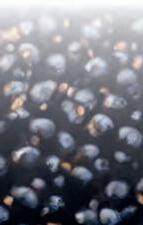
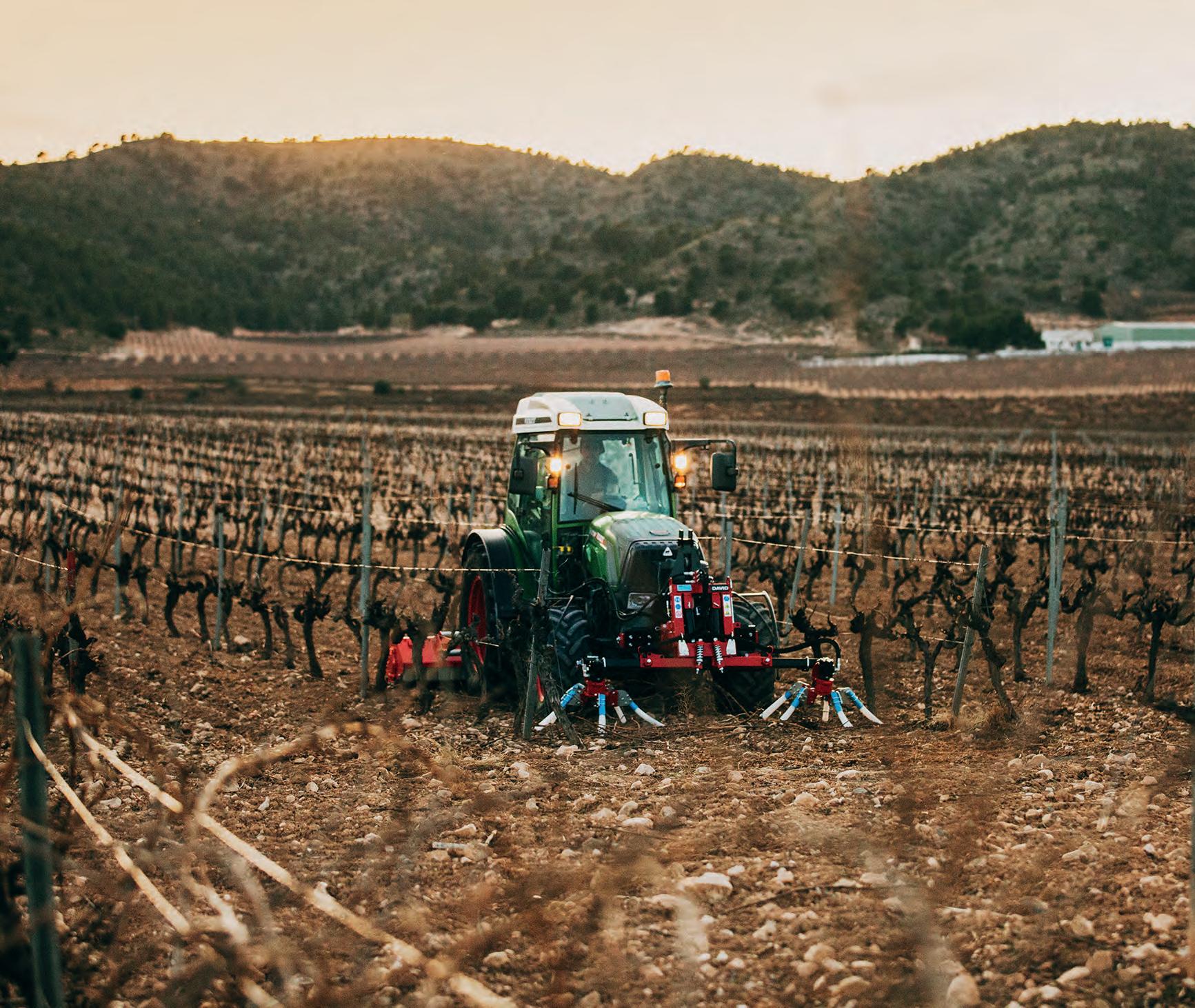
Proudly supporting the future of viticulture and fruit farming.
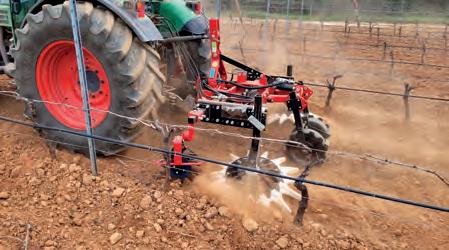
Crawfords Group is proud to be appointed as your authorised ID David Dealer. We are committed to bringing you a wide range of specialised and innovative solutions designed to support the viticulture and fruit sectors. Our expert team is here to provide you with the latest in cutting-edge technology and reliable service, ensuring your operations run smoothly and efficiently.
Discover how our ID David products can enhance your vineyard and fruit farming with unmatched precision and performance.
Visit us today or contact us to learn more about how Crawfords Group and ID David can help you succeed!
